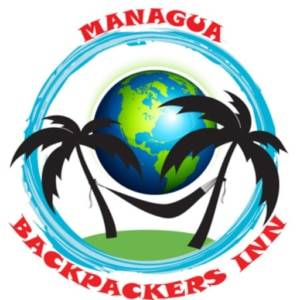

The Ultimate Managua Travel Guide: Top 10 Must-See Attractions in Nicaragua’s Capital
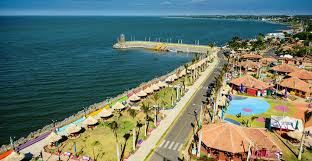
Pack your bags and fasten your seatbelts!
We’re taking you on an unforgettable journey to Managua, the pulsating heart of Nicaragua. This city is a kaleidoscope of history, culture, and natural wonders, ready to captivate every traveler who steps foot on its vibrant streets.
Let’s dive into the top 10 must-see attractions in Managua that will make your trip an adventure of a lifetime.
Old cathedral of managua (catedral de santiago) , tiscapa lagoon natural reserve (reserva natural laguna de tiscapa) , national palace of culture (palacio nacional de la cultura) , masaya volcano national park , port salvador allende, roberto huembes market (mercado roberto huembes) , tiscapa national park (mirador de tiscapa) , metrocentro shopping center , museum huellas de acahualinca (museo sitio huellas de acahualinca) , the revolution plaza (plaza de la revolución) .
So, are you ready to embark on your Managua adventure? These top 10 attractions are just the tip of the iceberg. Managua is a city that needs to be savored, explored, and experienced at your own pace. Soak in the city’s vibrant atmosphere, mingle with the friendly locals, and tantalize your taste buds with local cuisine.
Your Nicaragua travel adventure awaits, and Managua is ready to welcome you with open arms. We hope this guide fuels your wanderlust and helps you plan your trip. Here’s to unforgettable memories and exciting adventures in the heart of Nicaragua! Safe travels!
Leave a Reply
Leave a reply cancel reply.
Your email address will not be published. Required fields are marked *
Save my name, email, and website in this browser for the next time I comment.
This site uses Akismet to reduce spam. Learn how your comment data is processed .
Our Location
Colonial Los Robles, Del Plaza El Sol, 1 Cuadra Sur y 250 Metros Oeste, Casa #89, Managua, Nicaragua
- +505-8480-0600 (Telephone)
- [email protected]

Must-see attractions in Managua

Museo Arqueológico Huellas de Acahualinca
Discovered by miners in 1874, these fossilized tracks record the passage of perhaps 10 people – men, women and children – as well as birds, raccoons, deer…

Antigua Catedral
The hollow shell of Managua’s Old Cathedral remains Managua’s most poignant metaphor, shattered by the 1972 earthquake – and slowly undergoing restoration…

Parque Histórico Nacional Loma de Tiscapa
Home to what’s easily Managua’s most recognizable landmark, Sandino’s somber silhouette, this national historic park was once the site of the Casa…

Plaza de la Revolución
Inaugurated in 1899 by national hero and original anti-American General José Santos Zelaya, this open plaza has been the scene of countless protests,…

Museo Nacional
Inside the Palacio de la Cultura y Biblioteca Nacional, the beautiful national museum is an enjoyable romp through the country's history – from Nicaragua…
Catedral Metropolitana
Just north of the Metrocentro mall is an unforgettable Managua landmark that's practically new (the doors opened in 1993). It's an architectural marvel…
Paseo Salvador Allende
The malecón (pier) has been perked up by the Puerto Salvador Allende tourist complex at its base, and comes alive in the evenings (particularly on…
National Assembly Pedestrian Walk
East of the National Assembly along Av Central is a pedestrian walk with open-air exhibits on Nicaragua's history, featuring everything from historic…
Parque Luis Velásquez
This park is a prime spot for observing local life. It really comes alive on weekends and in the evenings, when it seems like all of Managua's families…
Galería Casa Los Tres Mundos
This gallery is the workshop of former Catholic priest, politician, poet, artist and sculptor Ernesto Cardenal, who founded the primitivist art community…
Monumento Roosevelt
Acsending Loma de Tiscapa from Crowne Plaza, you'll pass Monumento Roosevelt, constructed in 1939 and offering lovely lake views over the Laguna de…
Epikentro Gallery
Straddling the divide between fine and contemporary art.

Arboretum Nacional Juan Batista Salas
These modest gardens, inconveniently located halfway between Barrio Bolonia and the Plaza Monumental on Av Bolívar (well, it’s convenient if you’re making…
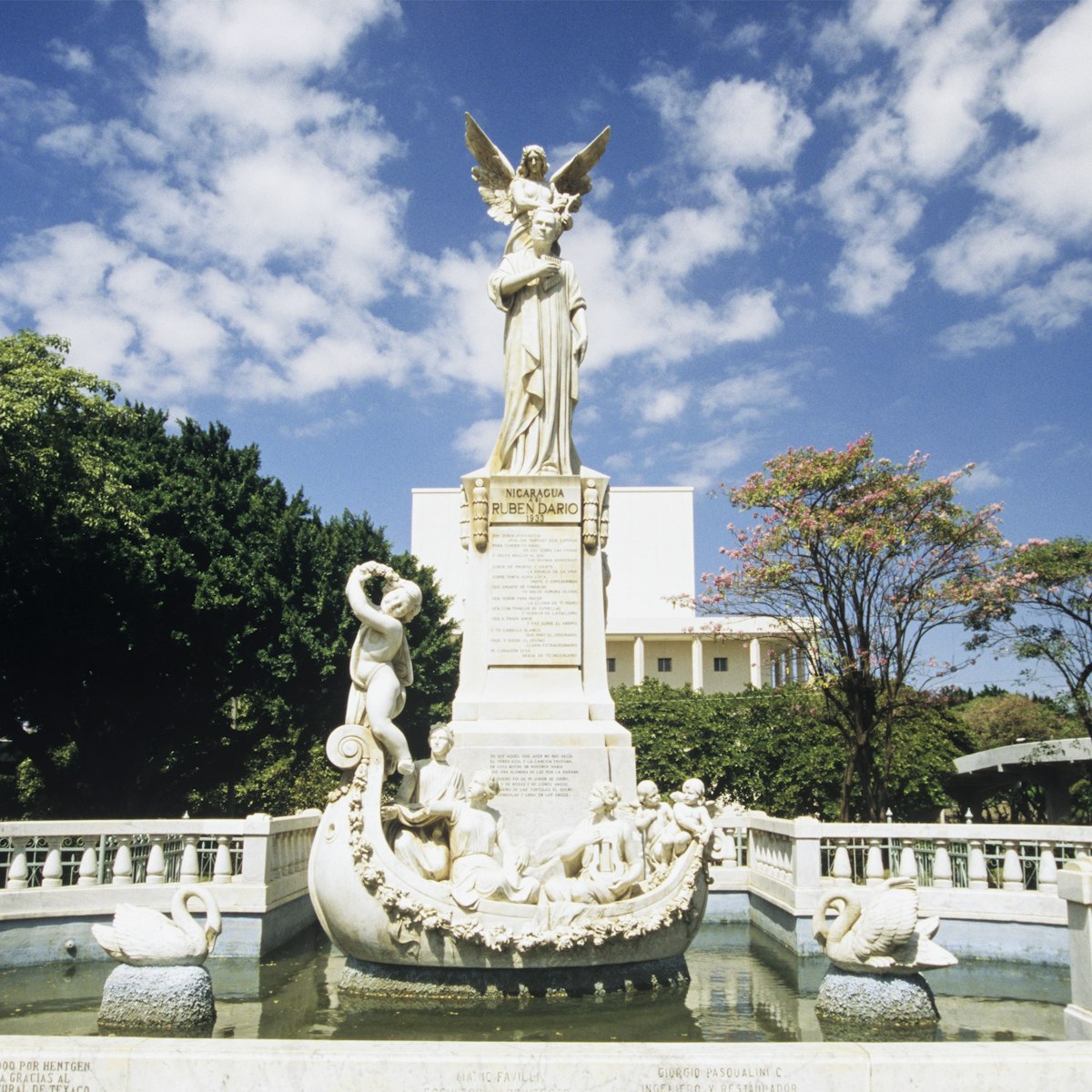
Monumento a Rubén Darío
On the lake side of Plaza de la Revolución, this monument was refurbished after the original 1933 statue fell into graffitied disrepair. A group of…
Casa del Pueblo
This was rebuilt during the Alemán years with the help of the Taiwanese government, and is now home to the controversial Consejos de Poder Ciudadano (CPCs…
Parque El Carmén
A couple of blocks from Barrio Bolonia’s concrete jungle, this surprisingly pretty park is a little slice of suburbia, with kids' riding bikes, a…
Casa de Ben Linder
This cultural center that formally served the English-speaking volunteer community, has been taken over by the Jubilee House Community and turned into a…
Palacio de la Cultura y Biblioteca Nacional
The 1930s-era Palacio de la Cultura (Palace of Culture) housed the National Congress until 1994. The historic building now houses the national museum and…
Tomb of Carlos Fonseca
The tomb of Carlos Fonseca, founder of the Sandinista National Liberation Front (FSLN). He was killed fighting Nicaraguan National Guard forces loyal to…
Estatua de Montoya
A statue dedicated to national hero Ramón Montoya, a Nicaraguan soldier who died (at the age of 14) in 1907.
Galería Solentiname
Appealing art gallery specializing in paintings and carvings from the Solentiname Islands.
Monumento al Trabajador Nicaragüense
A monument to Nicaraguan workers – a man and a woman, taking part in manual labour.
Códice Espacio Cultural
The best place to catch really cutting-edge contemporary art in Managua.
Founded in 1960 as a Jesuit school, this is one of Nicaragua’s premier universities, with a curriculum heavy on science and alternative technologies, Che…
Parque Japon
This not-particularly Japanese park, nestled in the back blocks of the Metrocentro area, is a great place for a bit of time out. There are plenty of trees…
The Managua branch of Nicaragua’s oldest university (the original is in León, the former capital) was founded in 1958 and has more than 24,000 students.
The grocery store called 'La Vicky' doesn't stand here anymore, but locals still use it as a point of reference for navigating the town.
Parque Las Palmas
A cute and shady little neighborhood park with the requisite benches, snack kiosks and even a laid-back bar in the middle.
A former casino (now closed) and current landmark that locals use to give directions in the area.
Casa del Obrero
A downtown landmark originally dedicated to the Nicaraguan worker.
Casino Pharaoh
A landmark locals use to give directions in the neighborhood.
Estatua al Soldado
The monument to Nicaraguan soldiers dates from 1909.
Parroquia San Francisco de Asís
A minor Bolonia landmark.
More destinations you need to see

- 2.1 By plane
- 3.3 By taxi
- 3.4 By bike
- 3.5 On foot
- 9.2 Mid-range
- 9.3 Splurge
- 10 Stay safe
- 12.1 Embassies
Managua is the capital and largest city of Nicaragua . A city that saw the death of Sandino, the rise of the Somozas, and their fall from power at the hand of the Sandinistas, Managua is full of history and the closest thing to a metropolis Nicaragua has. Ever threatened by earthquakes, Managua mostly lost its historical downtown in a 1972 quake, but is slowly gaining yet another face through the urban renewal policies of the current government. While many visitors to Nicaragua try to limit their time in the capital, you should not make the same mistake, as its theaters, museums, monuments, and historical remnants are quite worthwhile, to say nothing of the nightlife.
With a population well beyond a million, Managua is the second biggest metro area in Central America and by far the biggest city and urban center in Nicaragua. Almost every fourth Nicaraguan is a Managuan and the city still grows rapidly through people moving in, making a person "born and raised" in Managua something of a rare sight. Managua is the undisputed commercial, political, cultural and religious center of the country and many new trends originate from here before they affect the rest of the country. The Managua focus of nearly all media (print and TV) is so staggeringly large, that an address without mention of the city is almost always meant to mean Managua by default in news or advertising.
Managua's location between the rival cities of León and Granada made it an ideal compromise site when the capital was relocated in the 1850s. While this decision seemed genius at the time, geology today indicates otherwise, as there is an active fault line right where downtown Managua used to be (before the 1972 earthquake knocked it down, that is). Managua's economy is based mainly on trade. The city is Nicaragua's chief trading center for coffee, cotton, and other crops. It is also an important industrial center. Its chief products for trade include beer, coffee, matches, textiles, and shoes. A very large natural lake is the city's most prominent geographic feature. Americans call it Lake Managua , but Nicaraguans call it Xolotlan (which is also the word you'll see on signs, official maps, etc.).
The city has seen the rise and fall of political powers throughout Nicaragua's history and suffered major earthquakes in 1931 and 1972. Since the 1972 earthquake, residential and business areas have been built on the outskirts of Managua, giving rise to urban sprawl on a massive scale. Managua has been dubbed the Venice of Central America because of its escalating use of drainage canals that can be found throughout the city.
Although it doesn't have the colonial beauty of León and Granada and travelers and expats alike love to complain about the dusty hot streets in the dry season (roughly November to mid May) and the mud and torrential canals in the rainy season (roughly May to mid November), Managua does have some things to offer for the tourist. So it might be worth to spend some time here and not head out on the first bus or plane you can get.
As you can see in the climate table above, Managua does not experience big changes in temperature, but it does have a pronounced rainy and dry season. The days at the end of the dry season in May are usually uncomfortably hot, often with a lot of humidity as the clouds of the coming rainfall gather. When the rain finally does come, it can be torrential and both the streets (most are not paved with asphalt but stones) and the makeshift canals throughout the city usually take a heavy toll from this first rainfall. During the rainy season, the aforementioned drainage canals (usually dry) can become vicious streams and many a thing, person or animal has fallen in them never to be seen again, so take care.
Residents of the city and of the department of Managua are called Managüas.
Nicaragua is one of Latin America's cheaper destinations. Its hotel, food and transportation costs are a fraction of its neighbors. Eating at local restaurants is extremely inexpensive, and for US$30, a meal for four can be served at these locations. Fast food are similarly priced to those in North America and Europe. High-end restaurants are relatively affordable compared to high income countries. Foreign cuisine, like French and Italian specialties, are served at high-end locations for a fraction of the price found in North American and European cities. However, things that are unremarkable or daily fare in Europe may be considered expensive specialties in Nicaragua. Transportation is equally affordable with bus trips for C$2.50 ( córdobas ) and taxi trips starting at C$20. While Managua also has cheap accommodation, it is one of a few cities in the country with luxury accommodation that may even scrape the four figures in dollars.

Managua is the transportation hub of the country so if you're traveling around Nicaragua you're pretty sure to pass through even if only to change buses or planes. Routes heading to the capital are often prioritized when it comes to repairs and upgrades but they also tend to be the most prone to congestion.

The Pan-American Highway crosses Nicaragua. It is marked as Highway 1 throughout Nicaragua, as it is in neighboring Costa Rica or Honduras . From Tegucigalpa , Honduras to Managua is 370 kilometers and the drive takes about 7 hours. From San Jose, Costa Rica to Managua is 420 kilometers and the drive takes about 7 hours.
International buses connect Managua to most Central American capitals and southern Mexico. The buses are usually air-conditioned and in a good shape, however bring time and patience as the trips can take quite some time. As flights between Central American cities are expensive and there are no railroads to speak of, buses are often the best option unless you are more pressed for time than money. Reputable companies include: transnica [dead link] ticabus and king quality . For routes schedules and prices see their websites.
There are direct bus routes from all major cities stopping at various points. The most important bus stations from a tourist point of view are Mercado Roberto Huembes 12.12354 -86.244657 2 Mercado Roberto Huembes bus station (buses to the west and southwest), Mercado Israel Lewites 12.128908 -86.300416 3 Terminal Israel Lewites (buses to the north and northwest) and UCA 12.126251 -86.272626 4 UCA bus station (minibuses to short distance destinations see below)
Buses from Masaya , Granada , San Marcos and some from Jinotepe come in through the southeastern Carretera Masaya entrance and pass by the Centroamerica rotonda before going to either Mercado Roberto Huembes or UCA.
Buses from Jinotepe also come in through carretera Sur stopping by 7 Sur, a hub to go to via Carretera Nueva and Vieja Leon and C. Sur.
To go to the mountains in the north, the Rio San Juan region in the southeast or the Caribbean coast, buses leave from Mercado El Mayoreo .
As can be expected of a city of two million (and growing), Managua has serious issues of traffic congestion. This is not helped by taxi drivers and motorcyclists often driving reckless next to the suicidal and the occasional home-made horse carriage (that given the levels of congestion is not any slower than a car) clogging the streets. Almost all traffic lights see street vendors during the day selling everything from water to newspapers. Keep an eye on your belongings and close the windows if possible, as theft through open windows does occur.
- AVIS Rent-a-car , ☏ +505-250-3366 , toll-free: +1-866-978-6539 (US & Canada) , [email protected] . They have offices at the International Airport, Montoya zone, Carretera a Masaya ( updated Sep 2016 )
- Budget Rent-a-car , ☏ +505 2255-9000 , [email protected] . Has 10 locations around Nicaragua. cars from $10 per day up.
Driving directions in Managua are a bit odd and can be confusing until you get used to them. The major earthquakes and subsequent political upheaval have left the city without a consistent and clear street address system. Although the government has made attempts to address (no pun intended) this problem, directions are given relative to landmarks and distances. Most addresses are given based on landmarks and with the directions al lago - north, (towards the lake) arriba/abajo (east/west; literally "up" or "down") and al sur/a la montaña (to the south/to the mountains). To make things even more confusing, sometimes the former location of a landmark or some thing that no longer exists is referenced as in "de donde fue..." (i.e. "from where ... used to be"). For example, to instruct a taxi driver to drop you off at Casa Ben Linder , the directions are "en barrio Moseñor Lezcano, de donde fue el Banco Popular, 2 al lago, 2 arriba", which means, "in the Lezcano neighborhood, from where People's Bank used to be, 2 blocks towards the lake and 2 blocks east." Not even all taxi drivers know all landmarks and as GPS systems are a bit overwhelmed by this system of addresses, sometimes the best you can do is write down a route description. That said, if google maps (or whatever you're using) knows the physical location of the place you're looking for it gets the route the same way as everywhere else.
Managua has an extensive public bus system, whose route density and service frequency would far surpass most US or Canadian cities, however it lags behind most European cities and overall public transit is worse than in Central American peers like Panama City or San José and there are no plans to introduce either "bus rapid transit" or any rail based option in the foreseeable future. There is no night bus service. Service starts early in the day, buses on many routes already running (and often full of people!) around 05:00. An unofficial interactive online map of the city's public bus routes, created by volunteers, can be found here ; the site also has a downloadable map in PDF format. While buses have a reputation of being dangerous (even among Nicaraguans not living in Managua) you should be fine during daylight hours, but keep an eye on your belongings.
Unlike other Nicaraguan cities, buses in Managua are identified by route numbers; unlike most public transport systems around the world, an information placard carried by a Managua city bus would typically only include the route number, and not the names of the route's end points. At the bus stops one could also often see a sign with the numbers of routes serving it, but no additional information.
As of 2016, a single-trip fare is just C$2.50.
Besides the city buses proper (numbered routes), commuter buses that run between Managua and neighboring cities can be used to travel to points along their routes. For example, there are no city buses south of some point on Carretera a Masaya, but you can get a ride along this road on a Masaya- or Granada-bus (mostly originating/terminating at UCA or Roberto Huembes Market); typically, you'll be charged C$10.
- No. 110 goes from mercado Israel Lewites (buses to León) to mercado Roberto Huembes (buses to Granada), passing on the way by the UCA, where microbuses leave for Granada, León, Masaya and other cities.
- Buses to Granada, Leon, Jinotepe, Masaya, and Chinandega are also available at UCA (Universidad Centroamericana). Several city buses connect through UCA as well (102, 103, 105, 110, 111, 114, 119, 168).
- No. 266 runs to the airport (and beyond, to Zona Franja [the Free Trade Zone]) along the Carretera Norte from the Mercado Oriental area. From other parts of the city, one can take any bus that goes to the eastern part of Carretera Norte (such as 105 or 114), get off at the bus' last stop that's still on the Carretera (typically, La Subasta), and then take an airport-bound bus (such as no. 266 or a commuter bus to Tipitapa). Watch for the airport terminal on your right; it's hard to miss, or ask the driver (or the driver's assistant) in advance to stop there. It's only a short walk across the parking lot from the bus stop to the terminal entrance.
There are two forms of taxis in Managua: Collectivos and Privados (Collectives and Privates).
- Collective taxis work similar to buses: they pick up passengers on the route that you travel on. Usually this means that 3-4 passengers ride in a car with a common or similar destination. This is the fastest transport available in Managua, the cost is also friendly given that the fare is split evenly among the riders. However, collective taxis are also risky given the fact that organized crime has flourished in this transportation sector because of fixed passengers. In other words, drivers already know who they pick up and thus mug the one extra passenger. This crime, however, is not common, but it is the one with the highest chance of being mugged.
- Private taxis are the most popular option among tourists. The taxi is yours and picks up no one along the way. The fastest service in Managua also is the most expensive. These taxis have the most space and the most personal protection. If you have cargo, ensure that you hail a taxi that has a trunk. Not all cars are equipped with one.
Unlike other Nicaraguan cities, taxis are not bound to fixed rates; you'll have to negotiate a fare before you start your trip. Before getting into a taxi, take a look at the license (usually in the windshield or a side window) and the number-plate. Some Nicaraguans have taken to messaging the license plate number of the taxi they are getting in to a friend and it is certainly not a bad idea to do that as a precaution. Stay away from taxis without a license or when you perceive anything to be fishy.
While Managua is perhaps the least bikeable city in the country, it is the center of the embryonic beginnings of bicycle activism and advocacy with a critical mass ride dating back to 2011. Few dedicated cycle routes exist and many roads and roundabouts were designed for cars only, but cycling mostly avoids the insanity that is Managua traffic and the not entirely satisfactory buses and taxis.
Walking around Managua can be a frustrating experience. Few areas are designed to be walkable, traffic is heavy and in the dry season dust gets everywhere. There are some decent strolls to be had where downtown Managua used to be before the 1972 earthquake and the government has made an effort to revitalize the lakefront around Puerto Salvador Allende, but all in all, locals don't walk long distances when they can avoid it. Furthermore nothing is really close to anything, further complicating the situation.

- 12.15637 -86.27221 2 Plaza de la Revolucion . ( updated Sep 2020 )
- 12.15714 -86.27283 4 Monumento a Ruben Dario . Tribute to noted Nicaraguan poet who transformed 20th century Spanish literature. ( updated Sep 2020 )
- 12.129172 -86.266314 5 Rotonda Ruben Dario . There is a lovely fountain at the Ruben Darío Rotonda that is lit up at night and visible from Tiscapa. It is also often used as a landmark for reference purposes.
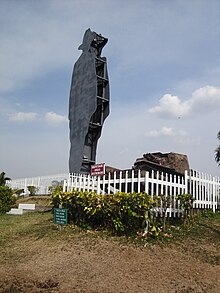
The barren hill on the northern lip of the crater of the Laguna de Tiscapa, known as Loma de Tiscapa used to be the site of the presidential palace and the headquarters of the National Guard in the Somoza era (until they were destroyed in the earthquake of 1972); political prisoners were tortured in a prison close by. This is where you'll also find the landmark silhouette of Augusto C Sandino (with a little American tanquette next to it), as well as military memorials. The hill offers the best views in town, both to the downtown and Lake Mangua to the north, and to the Carretera a Masaya area to the south. This is also the starting point of the Ticapa Canopy Tour; when in operation, zip-lines over the lagoon let you fly across the water in a harness (for a fee). The Nicaraguan Army headquarters (definitely not open to the public!) are located on the hill's northern slope.
- 12.15341 -86.270671 10 Parque de la Paz , Área Monumental . Your chance to see a lot of grayish-white concrete poured over AK-47s and one tank, which is supposed to symbolize everlasting peace in Nicaragua now that the Contra war is over, but this was largely replaced by Parque Luis Alfonso Velasquez Flores.
- 12.16244 -86.27537 12 Puerto Salvador Allende . 11:00-23:00 daily . Wharf and lakefront park with views of Lake Xolotlan, museum dedicated to Pope John Paul II, and restaurants. $5 . ( updated Sep 2020 )
- 12.1606 -86.27337 13 Malecón de Managua . 06:00-22:00 daily . Seawall featuring the metal trees of Rosario Murillo, wife and second in command of Daniel Ortega. ( updated Sep 2020 )
- 12.15913 -86.27083 14 Paseo Xolotlan . Walk along Lake Xolotlan featuring replicas of old Managua before the 1972 earthquake, including Augusto C Sandino's and Ruben Darío's house, as well as a Boeing airplane. ( updated Sep 2020 )
- 12.15732 -86.26797 15 Paseo de las Iglesias . Similar to Paseo Xolotlan except focused on representative churches of Nicaragua. ( updated Sep 2020 )
- 12.14779 -86.27405 16 Arboretum Nacional Juan Bautista Salas . 08:00-17:00 daily . A diminutive arboretum, nice and shady. ( updated Sep 2020 )
- Gambling - There are many casinos, large and small throughout Managua. Star City has a number of locations. If you like to play poker, go to the Pharo's casino on Carretera Masaya. It has hold'em poker tournaments at night (when there's enough interest); $200 buy-in no limit table can be found a lot of nights, $50 tournaments. The nicest casino in Managua by far is Palms Casino just off of Carretera Masaya. Beware that casinos are said by police and regional security analysts to play a significant role in the regional drug trade and money laundering networks. This is unlikely to impact your personal safety at a casino, but does contribute to Nicaragua's security problems.
- Play billiards - There are at least three good pool places if you're in a group, Pool8, and the two Time Off locations. All are downtown. Time Off has excellent snacks.
- Catch a movie - You can catch good Latin American movies some Wednesdays at 19:00 at the theatre near Art Cafe (a bar) near the Parque de las Palmas. The Art Cafe is near Hotel Beneficial Las Palmas and is within walking distance to the hotel.
- 12.1519 -86.27109 4 Parque Luis Alfonso Velásquez Flores . 09:00-22:00 daily . Park featuring rides, artificial lake with duck peddle boats, and sports venues. $10 . ( updated Sep 2020 )
- 12.15803 -86.26895 5 Parque Acuático . 09:00-21:00 daily . Water park next to Lake Xolotlan 30 cords . ( updated Sep 2020 )
If you do not have the time to go to Masaya for handicrafts, go to the Mercado Huembes where you will find everything from souvenirs to hammocks, and paintings. Ask anyone how to get there.
- Galería Codice , Colonial Los Robles , ☏ +505 2267 2635 . Excellent place to buy art (including paintings) and top-quality souvenirs/artesania from all over Nicaragua. As might be expected, though, items are pricey here.
- 12.148684 -86.259466 1 Mercado Oriental , Calle 15 de Setiembre . A huge market where almost everything is on sale. However it has a rather dangerous reputation. Pick-pocketing, grab-and-run theft are commonplace and there have even been instances of armed robberies. Overall Mercado Oriental can be a fascinating destination but is generally not recommended for the average tourist. If you still want to go, go with someone who knows the place and whom you know personally and trust. It should go without saying that you should never take any valuables (including cell-phones and cameras), that you can't risk losing.
- 12.128203 -86.264894 2 Metrocentro . The most luxurious mall in town right next to rotonda Ruben Dario on the opposite side of the new cathedral. Has a decent food court and a big selection of nearly everything as well as a multiplex cinema
- 12.1247 -86.2429 3 Mercado Huembes . One of the major markets of Managua, offering a wide variety of goods ranging from clothes to pineapple and from beans to tooth-paste judging from the prices for basic foodstocks frequently printed in the main newspapers La Prensa and El Nuevo Diario it is maybe slightly more expensive than the Mercado Oriental in terms of price, but to a traveller the difference is negligible.
- 12.13495 -86.19444 4 Mercado Mayoreo . although it isn't as large as Huembes or Oriental the selection is almost as wide. It serves as a terminus of several local bus routes as well as the bus station for buses to northern cities like Estlí and more distant destinations like San Carlos (Nicaragua) , Rama and the las Minas towns.
- 12.14441 -86.29049 1 Los Ranchos . A steak house that is so good, it spawned a chain in South Florida. Has been popular with locals for lunch and dinner since the days of Somoza. During that time, the politicians on opposite sides of the conflict would run into each other here on a regular basis. Service is impeccable. They serve a churrasco that is hard to beat for flavor and tenderness. Order it with a gin Martini for appetizer. Located about 3 blocks north of estatua de Montoya. ( updated Sep 2020 )
- 12.14481 -86.29115 2 La Plancha . Steak house. Their signature plate is the name of the restaurant: La Plancha. Comes with mashed potatoes and plantains on a hot grill. ( updated Sep 2020 )
- 12.11857 -86.26558 3 Le Café de Paris . French restaurant. Taken care personally by its proprietor and chef, Jeaninne. Very good wines. Ask for its famous foie gras, green salad and pepper steak. In Los Robles. ( updated Sep 2020 )
- 12.12535 -86.26173 4 Asados El Gueguense . great local cuisine. Large selection of local meat dishes. ( updated Sep 2020 )
- 12.1187 -86.26164 5 La Cocina de Doña Haydée . a good taste of local Nicaraguan cuisine. 3 locations - Original off the Carretera Masaya km 4.5 (not far from Metrocentro), another near the Rotonda Bello Horizonte and the last in the food court at Metrocentro. ( updated Sep 2020 )
- 12.12761 -86.2755 6 El Rincon Salvadoreno . fantastic Salvadorian pupusas and fruit juices in a pleasant outdoor area ( updated Sep 2020 )
A good breakfast is Leche Agria - a homemade yogurt-like drink. Look for signs advertising it in store fronts and pulperias. Put a little salt on it and eat it with tortilla.
- Casa del Cafe for good coffee and breakfast. Four locations, one in Los Robles, one on the second floor of Metrocentro, one in Galerias Santo Domingo and one after the security check at Augusto C. Sandino International Airport.
- Sushi Itto , in case you have a craving. Three locations, one in Carretera Masaya (in Plaza Familiar), one in Galerias Santo Domingo, and one in Plaza Caracol.
- La Cueva del Buzo - great seafood freshly caught. Must go if you can afford it.
- Toro Huaco , in the Zona Rosa across from the Picoteo. Outdoor restaurant bar that is comfortable with large groups. Sit under the stars on clear nights. Open mike night on Thursdays for joke-telling is good night to get to know the Nicaraguan sense of humor. Owner speaks English fluently.
- Music Lounge , 2 blocks north of the Texaco in Altamira. Outdoor/indoor music bar that plays a range of music. Nice lighting and atmosphere. Show up with friends.
- El Caramanchel , Del Hospital Militar, 3 cuadras al Norte. cultural bar with a good mix of foreigners and Nicas.
- HipaHipa . Exclusive Club on Carretera Masaya. Entrance can be C$150, parties W F Sa.
- Moods , in Galeria Santo Domingo located on Carretera Masaya. Fanciest and Hippest disco in Managua. Entrance can be C$150-300, parties W-Sa.
- Broder , in Zona Rosa. Disco with entry fee up to C$150, parties Th-Sa.
- Arribas , in Zona Rosa on top of Broder. A good atmosphere, sometimes live music.
- Art Cafe . Art Cafe is a very nice place for listening to live alternative music and have a tranquil evening. It has a colorful bohemian looks and art on their walls and in the vibe of the place and the people that frequent it in general. Go there by taxi, ask for "Art Cafe, en frente del Parque las Palmas"
There are tons of bars in the area south of the big BAC building downtown, find an abandoned place called Lacmiel and head east to find this zone.
Mozara, C$180 entrance fee, open bar till 14:00 Saturdays
There are also a few bars and restaurants around Zona Hippos . Woody's has good wings, Pirata's is a popular local restaurant/bar and Tercer Ojo is a more upscale resto-lounge with fusion cuisine. This area is west of the traffic light at Hilton Princess and La Union supermarket.
The Zona Rosa is an area with bars and restaurants that has sprung up in what was once a mostly residential area. It is located south of the BAC building. Highlights include Pharaoh's casino, Casa del Cafe, bars east of Lacmiel, la Casa del Baho restaurant, and Hipa Hipa bar.
There are also bars and restaurants in the new "Zona Viva" in Galerias Santo Domingo
- 12.14492 -86.28203 1 Casa De Huespedes Santos . is the most renowned budget place in town—or at least the cheapest -- US$7/night/person (June 2011). This place might be handy for backpackers. Don't expect too much from the DIY plumbing and electrical wiring, but you will get your own bathroom/shower. ( updated Sep 2020 )
- 12.13863 -86.28691 2 Casa de Huéspedes Bolonia . Homestay with internet access and private bathrooms. ( updated Sep 2020 )
- 12.11847 -86.26807 3 La Bicicleta Hostal , ☏ +505 8324 3340 . Free breakfast, LGBT and pet friendly, wifi and a/c, hammocks, kitchen, bar, gazebo. Organized tours. $15 . ( updated Sep 2020 )
- 12.11838 -86.26971 4 Managua Backpackers Inn , Colonial Los Robles, 3era etapa, Casa #55 , ☏ +505 2267-0006 , +505 8414-4114 (mobile) . This hostel offers guests a wide range of accommodation options and features. Airport transfers take 30 minutes, and a shuttle service is available for guests. Dormitory or private rooms, shared kitchen, pool, hot showers, air conditioning, free wireless internet and a relaxed comfortable atmosphere. Dorms from US$8/night .
- 12.113783 -86.269047 5 Hotel Yolaina , From semaforos de enitel Villa Fontana 200 meters west, 50 meters north, 50 meters east , ☏ +505 22771337 . Check-in: 13:00 , check-out: 11:00 . 24 rooms, each equipped with air conditioning, hot water, wireless Internet, and cable TV. Hotel has 24-hour security, a pool and breakfast is included. Manager speaks English. Airport pickup/dropoff is available. Discounted rates for long-term stays. US$35-50/night .
- 12.14075 -86.2801 6 La Posada del Arcangel , ☏ +505 2254 5212 . Small hotel with complimentary breakfast, restaurant, internet access, and a/c. Pet-friendly. $36 . ( updated Sep 2020 )
- 12.14067 -86.28478 7 Hotel Europa . Has clean, comfortable rooms for about US$30/night. It is owned by a Spanish guy. ( updated Sep 2020 )
- 12.14252 -86.27675 8 Hotel Mansión Teodolinda ( near Hospital Militar (three streets north and two streets west) ). Has nice rooms with air conditioning, cable TV, a pool and a restaurant. It was the well-known house of a family until the revolution, hence it is a landmark and reference point for addresses. The original building was destroyed by the 1972 earthquake, but a new building was constructed and opened to the public with only 7 rooms in 1993. As a family business has been slowly growing up to 42 rooms, with a restaurant, meeting facilities and a swimming pool. Double room with breakfast: $60 . ( updated Sep 2020 )
- 12.12395 -86.26273 9 Colibrí Hotel y Desayuno , Pista Miguel Obando , ☏ +505 2270 4312 . Hearty complimentary breakfasts, tile corridors and back patio accentuated by a garden and fountain. Has wifi and a/c. $38 . ( updated Sep 2020 )
- 12.147213 -86.290272 10 Art Hotel Managua , 19 Av Suroeste ( 1/2 block north of Parque Las Palmas ), ☏ +505-2250-0075 . Check-in: 12:00 , check-out: 14:00 . A king bed, internet, cable TV, air conditioning, and access to the pool. Computers are in the lobby for free use. Beverages and snacks are available 24 hours a day. Full breakfast is included -- always cooked fresh for each guest. Lunch and dinners are available for an extra charge. C$29 .
- 12.12434 -86.25712 11 Casa de Angeles Hotel . Verandahs, grills, and rocking chairs give this lime-green tinted accommodation some character. Complimentary breakfasts. $25/night . ( updated Sep 2020 )
- 12.14577 -86.17131 12 Best Western Las Mercedes ( across the street from the airport ), ☏ +505 2255 9900 . Nice rooms with A/C in a spacious garden environment. Two swimming pools. Nice breakfast buffet included. US$110 .
- 12.12393 -86.27991 13 Holiday Inn Managua - Convention Center , ☏ +505 2255 6010 . Full service hotel, free Internet, free car rental with room, hotel and convention center.
- 12.12353 -86.26477 14 Hilton Princess Managua , ☏ +505 2255 5777 . Great staff.
- 12.12651 -86.26494 16 InterContinental Managua at Metrocentro Mall , Costado Sur Centro Comercial Metrocentro, carretera Masaya , ☏ +505 2 2768989 , fax : +505 2 2768988 . 157 rooms with wireless high speed internet, 7 suites, rooms and executive floors. Has a restaurant and bar, gym, spa, pool, gift shop and print service. US$150-600 .
- Nicaragua has made considerable strides in terms of providing police presence and order throughout the country. Crime is relatively low, and the country has been historically ranked as the safest country by INTERPOL and has been ranked as one of Latin America's top 5 safest countries by the Vision of Humanity project. However, starting in 2008, reports of low-level gang violence began coming in from Honduras and El Salvador. The National Nicaraguan Police have been successful in apprehending gang members and reducing organized crime.
- Remain alert at all times in Managua. Although gang activity is not a major problem in Managua nor Nicaragua, caution should be exercised. Travel in groups, or with someone trusted who understands Spanish.
- Avoid using foreign currency in local transactions. It is best to have the local currency instead of having to convert with individuals on streets or non-tourist areas. Banks in Nicaragua require identification for any currency conversion transactions, it is best to use ATM machines that dispense the local currency. When using ATM machines, take precautions and be aware of your surroundings. Make sure you are in a well-frequented area and ensure that the ATM has not been altered in any way. Some thieves alter ATM machines with chips that can steal credit card numbers and personal information. This type of crime is rare, but an increase in foreign tourism has stimulated the increase of this crime. Make sure that you monitor your credit card or debit card transactions via online banking. Any suspicious transactions should be reported immediately.
- Traveling around Managua is relatively simple, but as in any major city, exercise basic caution. When traveling to the Mercado Oriental, go in groups and avoid the use of chains, necklaces and other valuables. Although police officers are available in and around the market, the market tends to be very full and thus it can be hard to find any person who steals your valuables. Be cautious around the outskirts of downtown, the area between MetroCentro and the BAC building. Several muggings have occurred around this area. The area around the Tica Bus Station is unsafe for tourists by the Nicaraguan police due to the high volumes of people moving around. If you must go, take a taxi to and from there.
- When traveling around the city of Managua or around Nicaragua, there are several transportation alternatives. Popular options include buses and taxis, both of which have different rider standards and different precautions.
- Buses in Nicaragua tend to be old school buses that transport people and goods to market. These are colloquially called Chicken buses . Much like the Argentine collectivo, it uses the honor system on travelers and charges based on the distance one travels. It is relatively the most inexpensive option, allowing tourists to travel to major tourist attractions and other destinations. However, these buses can be extremely crowded and tight in terms of space. An overhead rack tends to be provided for the storage of bags and other items, but keep your bags at hand, in you sight, at all times. If you are carrying something valuable and fear the potential loss of theft of it, put a lock on your bag. Don't carry large sums of money in their pockets. On crowded buses (especially during rush hour), thieves can rob you without you noticing. In addition, do not wear any expensive jewelry on the bus. It can be taken from you without your notice due to the high volumes of passengers that board buses. Buses in local urban and interurban routes are not air-conditioned, so ensure that your window is open (provided you are seated).
- There are also Express Buses in the form of mini-vans. These buses provide express inter-city transport at a higher price compared to the standard local Chicken Bus. This form of transport is also cost-friendly, but extremely tight in terms of space. Tourists cannot carry any heavy cargo. Small purses and bookbags are fine, but exercise the same caution as you would on a Chicken Bus.
- When riding taxis, close the windows. Leaving windows open allows you to be robbed while in the car and exposes you to beggars and other service providers. Most tourists consider this a nuisance, and so do locals. Air conditioners do not always work on street-hailed cars. In any case, radio-dispached cars are readily available (particularly from resorts and hotels) and offer the same amenities luxury car services offer at roughly the same price as their North American counterparts.
A full directory of foreign embassies is available at the city government's site . While there is no single "diplomatic district" in Managua, many foreign missions are located fairly close to each other in Colinas, a neighborhood of large, well landscaped villas, a few blocks east of the km 8 - km 9 marks on Carretera a Masaya. A few others are around km 4-5 of the same Carretera a Masaya.
Some embassies are listed below, in English alphabetic order:
- León - The second largest city in the country, León is the intellectual center of Nicaragua, with the oldest university, largest cathedral and excellent museums. At nearby Cerro Negro , you can experience the thrill of volcano boarding in a moonlike landscape.
- Granada - Located at the foot of the impressive volcano Mombacho, Granada is the oldest colonial city on the American continent, with beautiful colorful and picturesque buildings and churches. It is situated on Lake Nicaragua, the second largest lake in Latin America, where you can tour of the Granada Isletas archipelago with many tropical birds and monkeys.
- Masaya - The third largest city in Nicaragua. Masaya is center for indigenous crafts, and it is famous for its artisan market. Just outside the city you will find Volcán Masaya , featuring a smoking, active volcano, were you can watch the crater fumes rise to the sky.
- Pueblos Blancos - A cluster of indigenous villages in the mountains above Masaya, each with its own artisan specialty. Do not miss San Juan de Oriente, with its famous pottery workshops.
- La Laguna de Apoyo - An amazing beautiful lagoon that is over 3 km wide at an elevation of 400 meters. The water is crystal clear beneath an impressive 200-m-tall jungle covered volcanic rim. Swimming, sailing, kayaking and scuba diving is recommended.
- Ometepe - In the center of Lake Nicaragua (19th largest in the world), to grand volcanoes raises impressively over the water, on the island of Ometepe. A beautiful and wonderful place for ecoturism, hiking, horseabck riding, kayaking and swimming, either in the lake or in the crater lake at the top of the Maderas volcano.
- Caribbean Coast - Daily flights are available to Nicaragua's Atlantic coastline, where tropical reefs and small offshore islands offer a very different view of the country. Highlights are the English speaking city Bluefields , the pristine Pearl Lagoon and the two Corn Islands .
- Pacific Beaches - For swimming or some of the best surfing on the American continent, head to one of many beaches on the Pacific Coast. The most popular destination is San Juan del Sur , which is surrounded by many unpopulated beaches with world class surfing waves, such as Popoyo , Madera , Majagual and Marsella. Closest to Managua are the beach towns of Masachapa , Pochomil , Pochomil Viejo and Montelimar , the latter being the home of the Montelimar Beach Resort. Further north you find the popular beaches of Las Peñitas and Poneloya , and the more secluded off-the-beaten-track beaches of Aposentillo , Juiqilillo , Padre Ramos and Mechapa .
- Estelí and the Northern Highlands - with beautiful mountains, rivers lakes and national parks, ecological coffee farms and the Somoto Canyon .
- Has custom banner
- Has mapframe
- Has map markers
- Airport listing
- Articles with dead external links
- Buy listing with no coordinates
- Drink listing with no coordinates
- Usable cities
- Usable articles
- City articles
- Has Geo parameter
- Capital Region (Nicaragua)
- All destination articles
- Pages with maps
Navigation menu

What to See in Managua: A Comprehensive Travel Guide
Welcome to Managua, the vibrant and culturally rich capital city of Nicaragua! Situated at the southern shores of Lake Managua, this bustling metropolis offers a plethora of exciting attractions and activities for visitors to explore. From historical landmarks to natural marvels, Managua has something to captivate every traveler's interest. So, pack your bags, put on your explorer's hat, and prepare for an unforgettable journey through this captivating city.
1. The Old Cathedral of Managua
A symbol of resilience and history, the Old Cathedral of Managua is a must-visit attraction. This architectural masterpiece dates back to the 1920s and is located in the heart of the city. Although an earthquake left the cathedral in ruins, its crumbling structure still stands as a poignant reminder of past events. Take a moment to reflect on its history and enjoy the panoramic views of the city from the top.
2. Tiscapa Lagoon Natural Reserve
Escape the hustle and bustle of the city by venturing into the serene Tiscapa Lagoon Natural Reserve. Located just a short distance from downtown Managua, this stunning nature reserve offers picturesque hiking trails, lush greenery, and a mesmerizing crater lake. Enjoy panoramic views of the city, spot local wildlife, and immerse yourself in the tranquility of nature.
3. National Palace of Culture
An icon of modern architecture, the National Palace of Culture is a remarkable building in downtown Managua. Admire its unique design and learn about Nicaragua's history and culture. The palace also houses the National Museum, where you can delve deeper into the country's rich heritage.
4. Montelimar Beach
If you're seeking some sun, sand, and relaxation, head to Montelimar Beach. Located just outside the city, this pristine beach offers crystal-clear waters, golden sand, and a tranquil atmosphere. Spend the day swimming, sunbathing, or simply enjoying a refreshing cocktail as you take in the beauty of the Pacific Ocean.
5. Ruben Dario National Theater
Art and culture enthusiasts should not miss a visit to the Ruben Dario National Theater. Named after Nicaragua's most celebrated poet, this grand theater hosts a variety of cultural performances, including plays, ballets, concerts, and opera. Immerse yourself in the vibrant arts scene of Managua and experience the talent of local and international artists.
6. Malecon de Managua
Stroll along the Malecon de Managua, a picturesque boardwalk that runs alongside Lake Managua. Enjoy breathtaking views of the lake, colorful boats bobbing in the water, and the skyline of the city. The Malecon is also dotted with restaurants, cafes, and bars, offering a perfect spot to enjoy a meal or sip a coffee while taking in the beauty of the surroundings.
7. Huellas de Acahualinca
Step back in time at the Huellas de Acahualinca archaeological site. Located near Lake Managua, this site preserves ancient footprints estimated to be over 6,000 years old. Explore the museum to learn about the fascinating history of the area and gain insights into the lives of the ancient civilizations that once thrived here.
8. Revolution Square
Pay homage to Nicaragua's revolutionary past at Revolution Square. The square features a towering monument dedicated to the country's national heroes and a large open space where historical events have taken place. Take a moment to reflect on the significant moments that shaped Nicaragua's history as you soak in the atmosphere of this symbolic location.
9. Museo Sitio Huellas de Acahualinca
Discover more about the ancient footprints at the Museo Sitio Huellas de Acahualinca. This museum offers in-depth information about the footprints and the archaeological research conducted at the site. Marvel at the carefully preserved footprints and learn about their significance in understanding the region's prehistoric past.
10. Los Brasiles
Experience traditional Nicaraguan culture at Los Brasiles, a vibrant neighborhood known for its handicrafts. Browse through the various shops and stalls to find unique souvenirs, including handmade pottery, woven textiles, and intricate woodwork. Be sure to strike up a conversation with the friendly locals to learn more about their heritage and artistic traditions.
Exploring Managua
Managua offers a myriad of opportunities to explore its rich culture, history, and natural beauty. Be sure to venture beyond the tourist hotspots and immerse yourself in the local neighborhoods to truly experience the city's unique charm. Whether you're taking a leisurely walk through its streets, trying delicious Nicaraguan cuisine, or engaging in conversations with the warm-hearted locals, Managua has a way of captivating the hearts of its visitors.
Your Guide to Managua:
Sign up for more like this.
Managua Solo Travel Guide

Planning a solo trip to Managua , Nicaragua? Here’s everything you need to know for your visit:
QUICK FACTS
- The capital of Nicaragua and its largest city, with a metro population of over 1.1 million .
- It is the political, economic , industrial and administrative capital of Nicaragua.
- Located behind Lake Managua in the western part of the country, Managua was originally founded as a fishing village in 1819.
- Suffered devastating earthquakes in 1931 and 1972, from which it has not yet fully recovered.
- Nickname: Novia del Xolotlán (“The Bride of Xolotlán”).
PRACTICAL INFORMATION
- Currency: Nicaraguan Cordoba (NIC).
- Spoken languages: officially Spanish, though Miskito is the most widely spoken.
- Best time to visit: from November to April .
- Arriving from the airport: Managua international Airport (Augusto C. Sandino) is located 11 km from the city center. The best way to go to the center is by taxi – look for an Official Airport Taxi (ask inside the airport for exact directions and information).
WHERE TO STAY
- Best hostel for solo travelers in Managua: La Bicicleta . Very clean, safe (important!), with hot showers and friendly English-speaking staff. A great place for transiting through. They will help you arrange onward transportation and taxis if need be (for pickup at any hour of the day).
- As Managua is simply a transit city for most travelers you will find the cheapest rates around the major bus stations (these areas can be dangerous).
- For a proper city visit, look for places in the historic city center, or in Zona Rosa .
- The city is very affordable by Western standards.
GETTING AROUND
- If you’re staying near the city center, everything is within walking distance.
- To get around, you can take the city buses ($0.35/journey). Keep in mind that these are usually overcrowded and rife with pickpockets.
- The other option is to arrange a taxi – this is much safer, and will only cost you $1 to $4 for a journey within the city center. Look for the official taxis with red plates (the driver’s ID should be visible above the dashboard). The other (“private”) taxis may not always be safe!
- Buses departing from Managua to other cities are located around Barrio Martha Quezada .
MANAGUA NIGHTLIFE
- Drinking age is officially 19 , though this is not enforced.
- The best clubs and upscale bars are in Zona Rosa and the Malecón , on the shore of the lake.
- Great bars to start your night: Hard Rock Cafe and La Estación Central .
- Be careful when going out alone at night – use taxis to/from your destination!
UNIQUE LANDMARKS TO VISIT
- Visit Plaza de la Revolución and Parque Central . This square with a park in the middle is the center of the old town . Around the square are Catedral de Santiago, The Ruben Dario National Theatre, and the National Palace of Culture.
- The Old St. James Cathedral of Managua is the first Cathedral built inside a metal frame construction. It is still undergoing reconstruction from the damages sustained during the 1972 earthquake.
- The Rubén Dario National Theater is one of the most renowned theaters in Central America.
- The National Palace of Culture contains the National archives and the National Library.
- The Doctor Roberto Incer Barquero Library is a library/museum where you can learn about the art and history of Nicaragua. Inside, there is a gallery with youth exhibits.
- The Museum of Acahualinca is an anthropological museum – a must visit due to the 6000-year old footprints on display (engraved in volcanic ash).
- Managua is situated on the southern shores of Lake Managua . If you want relax for a moment at a small restaurant or a cafe, this is the place to be.
INTERESTING WALKS
- You can think of Managua as having two parts – the old part contains buildings still standing after the earthquake, while the newer part features all the big malls and residential areas.
- Start your day with a breakfast at a local restaurant near the Central Park. Take a walk through the historic old center of town.
- Explore Zona Monumental , an interesting area not far away from the center. Here, you will find a mix of pre- and post-earthquake monuments and buildings.
- There are a few big markets which can make for a unique and interesting stroll. Ask in your hotel or hostel for the exact locations and opening times. Mercado Oriental is one of the biggest markets in Central America!
LOCAL WISDOM
- T raditional dishes typically include rice and beans (or corn and tortillas). The meat varies, and some of the options (e.g. cow stomach, lizard) may surprise you. A local favorite is Gallo Pinto , a dish with fried rice, onion, sweet pepper and red beans boiled with garlic.
- Great restaurants to try: Los Ranchos, Zacatelimon, Restaurante Kyoto, and Peruvian Terrace.
- Where to find good cheap eats : affordable food can be found just about anywhere! You can find the best restaurants on the edge of the lake and in the city center . Look for small, local restaurants or stands as they prepare the real local stuff.
- Dangerous areas : while Managua is a safe city to explore, take caution and watch your belongings. It is not recommended to walk alone or on small streets at night (if you are traveling after dark, take a taxi ). The bus stations are notoriously seedy, and popular with pickpockets.
Recommended trip duration: 1-2 days
- Guatemala City, Guatemala
- Tegucigalpa, Honduras
- Mexico City, Mexico
- Ensenada, Mexico
- Havana, Cuba
Leave a Reply Cancel reply
Your email address will not be published. Required fields are marked *
Save my name, email, and website in this browser for the next time I comment.
Managua Nicaragua Destination Guide (2024): What You Need to Know
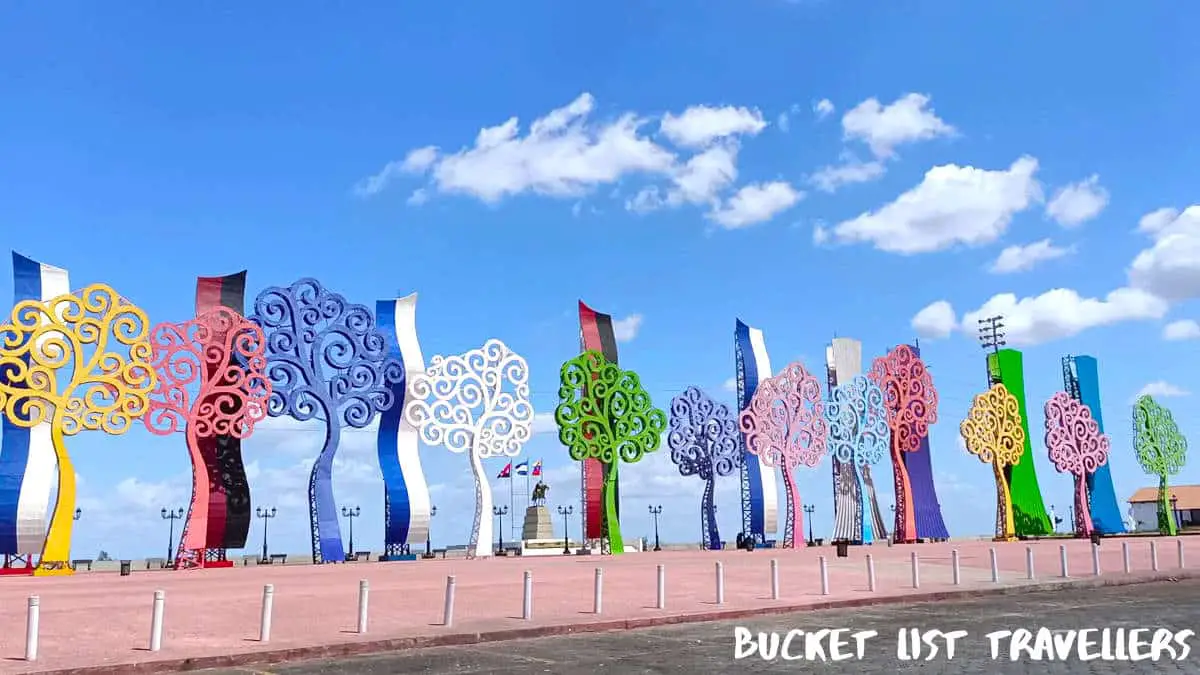
Nicaragua ’s capital is an often overlooked destination, but it has a lot to offer. It is a sprawling city which is chaotic at times but also has areas that are quite leafy and peaceful. First timers can enjoy waterfront dining at Puerto Salvador Allende or the beautiful vista at Loma de Tiscapa. Those living in Nicaragua come to Managua for the international dining scene, modern shopping centres as well as all of the conveniences that the largest city in Nicaragua has to offer. Find out more in this Managua Nicaragua destination guide.
Short on time? Here are our Managua Nicaragua top recommendations: Hightlights : take in the views at Loma de Tiscapa, relax by the water at Puerto Salvador Allende and shop ’til you drop at Managua’s shopping centres and markets. Activities : book your Managua Nicaragua Tours with Get Your Guide . Accommodation : we use Booking.com to find the best hotels. Private Transfers : Pacific Tours , Flights : find cheapest flights with cashback on WayAway . Airport Lounge Access : start your holiday the right way with Priority Pass . Travel Medical Insurance : SafetyWing Nomad Insurance is the ideal choice for long-term travellers and digital nomads. Travel Banking: Wise makes global travel banking seamless and affordable.
What is Managua Nicaragua famous for?
Managua is mainly known for being the capital of Nicaragua as well as Nicaragua’s biggest city. Home to Nicaragua’s international airport as well as major bus terminals, it is an important launchpad for getting into and around the country. Additionally, Managua is one of Central America ’s most important economic hubs, being home to modern shopping centres, government buildings, universities and other services. It is also a major cultural centre, with plenty of dining and shopping options as well as theatres, museums, stadiums and other landmarks.
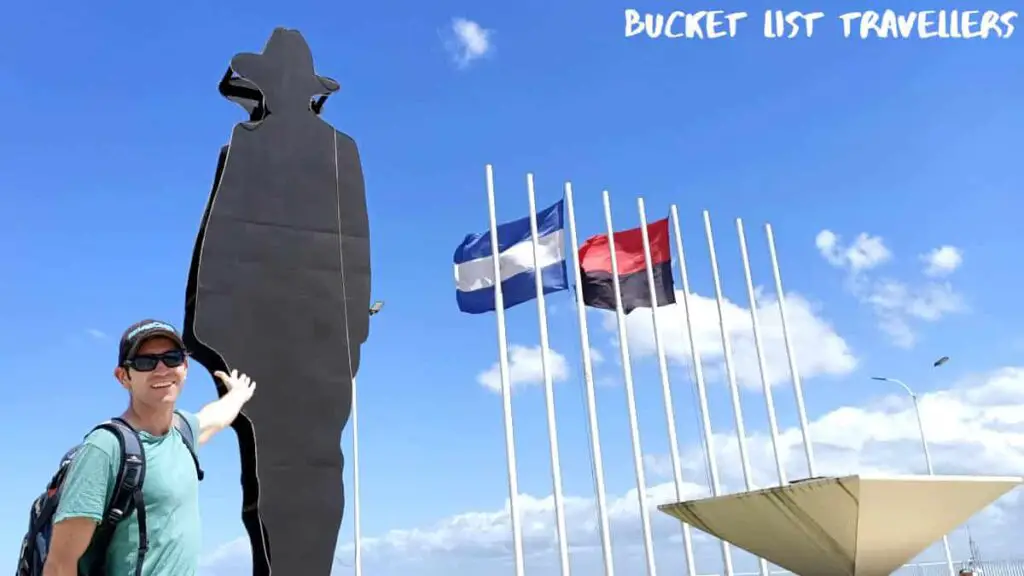
Managua has faced a number of challenges over the years, with floods, earthquakes and fires destroying the city several times throughout its history. None was more devastating than the 1972 earthquake which destroyed 90% of the city. As Managua is located on fault lines, it is likely that a severe earthquake will hit the city approximately every 50 years. However Managua has rebuilt and is now home to over 1 million people. A distinctive feature of the city are the Trees of Life – an art installation consisting of over 100 colourful tree sculptures that line the city streets and light up at night. The city also hosts a number of festivals throughout the year.
Why you should visit Managua Nicaragua
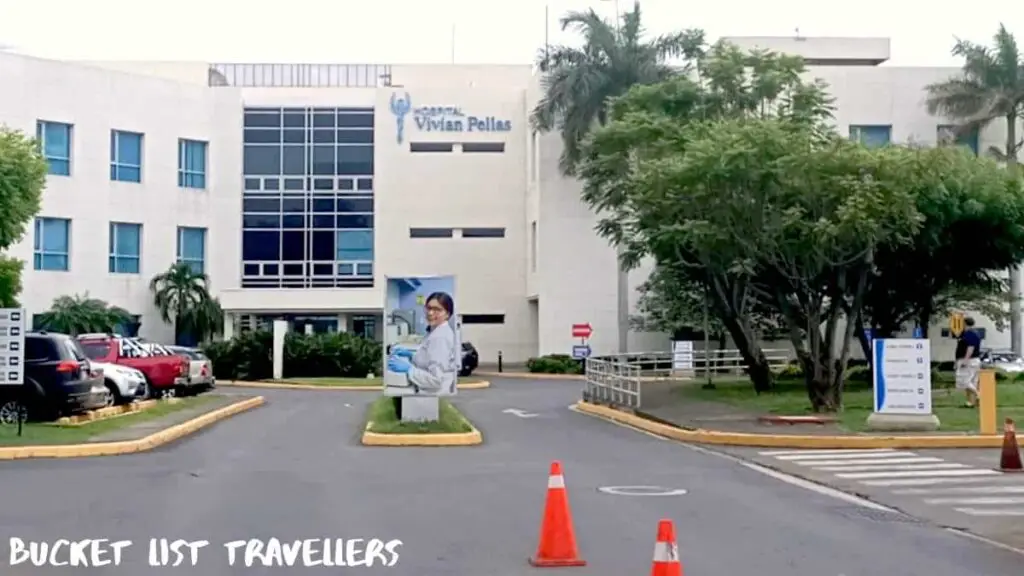
Managua is the capital of Nicaragua and also Nicaragua’s biggest city. Founded in 1819, Managua became Nicaragua’s capital in 1852. As an economic and cultural hub, there are plenty of activities in Managua to keep you entertained, including the best shopping and dining options in Nicaragua as well as sports stadiums, museums and theatres. Additionally Nicaragua’s international airport is located in Managua. The city is a major transport hub, and its location in between the major cities of León and Granada means that you will no doubt pass by Managua at some point during your Nicaragua trip.
Managua Nicaragua Destination Guide: Know before you go
Basic info about managua nicaragua.
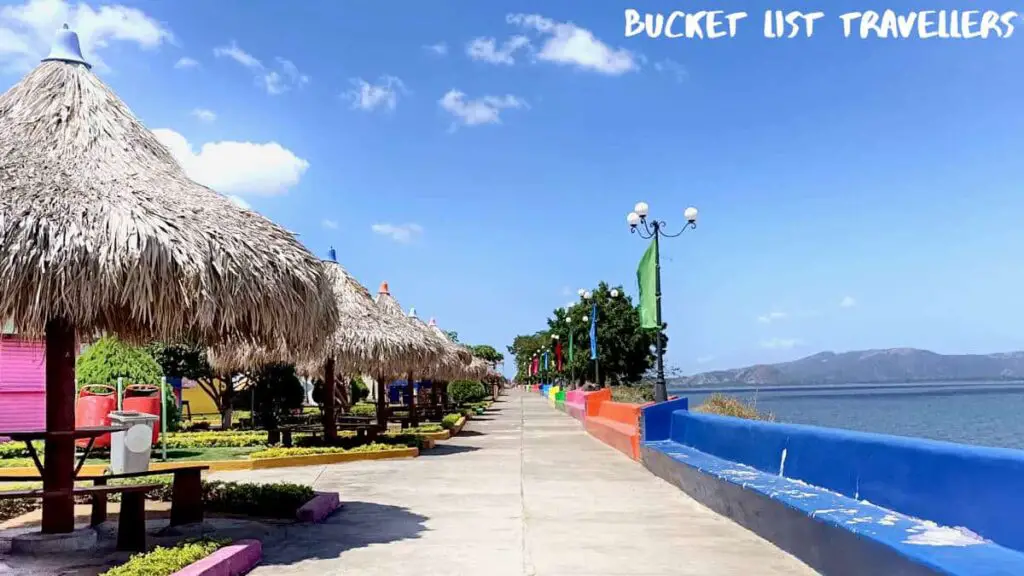
- Official name – Leal Villa de Santiago de Managua (Loyal village of Santiago of Managua. However it is most commonly known simply as Managua.
- Date founded – 1819
- Date elevated to the capital of Nicaragua – 1852
- Language – Spanish; Many tour operators and hotel staff speak English in popular tourist areas, but if you prefer travelling and shopping local you will need a basic understanding of Spanish.
- Currency – Nicaraguan córdoba (NIO). Many hotels and restaurants also accept United States dollars (USD). ATMs dispense both cordobas and US dollars. For more details on money in Nicaragua, see this post .
- Population – 1,052,000 (2019)
- Area – 267 km 2 (103 sq mi)
- Department (Departmento) – Managua. Managua is the capital of this department.
- Emergency number – 118
- Police number – 101 (tourist police), 118 (police)
Utilities in Managua Nicaragua
- Electricity – Nicaragua uses Types A and B power plugs, which is the same plug type as the United states. It operates on a 120v supply voltage at 60Hz. Power outages in Nicaragua are not uncommon but generally don’t last for too long.
- Water – the tap water in Managua Nicaragua is safe to drink. However many expats and tourists prefer to drink filtered water. Some accommodation in Managua provides filtered water for guests to use (however the one we stayed at did not).
- Toilets – sit-down flushing toilets are the most common type of toilet in Nicaragua. Don’t flush your toilet paper – use the bins provided. Public toilets are not common in Nicaragua, but you can usually find toilets in cafes and restaurants.
- Telephone country code: +505
Where is Managua Nicaragua?
Managua is a city in the department of Managua Nicaragua. This city is situated on the shores of Lake Managua (also known as Lake Xolotlán). It is an inland city located in western Nicaragua .
The closest cities to Managua Nicaragua are Masaya and Granada . Managua is around 35 minutes by car from Masaya and 48 minutes from Granada.
How to get to Managua Nicaragua
Managua nicaragua destination guide: arriving by land, managua nicaragua intercity land transport.
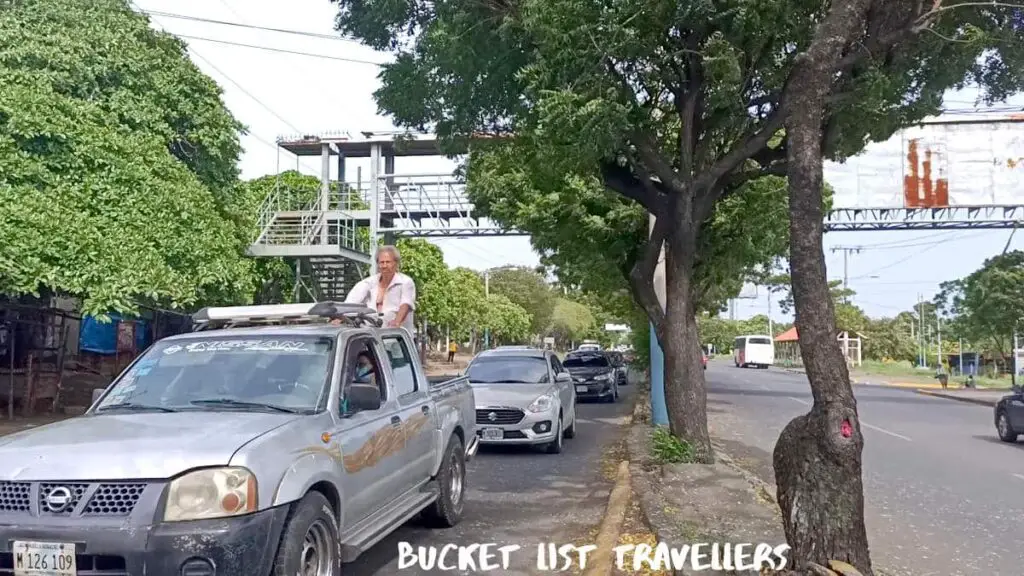
The main transport options for travelling overland to Managua Nicaragua are:
- Private vehicle
- Private transport operator
Driving to Managua Nicaragua from within Nicaragua
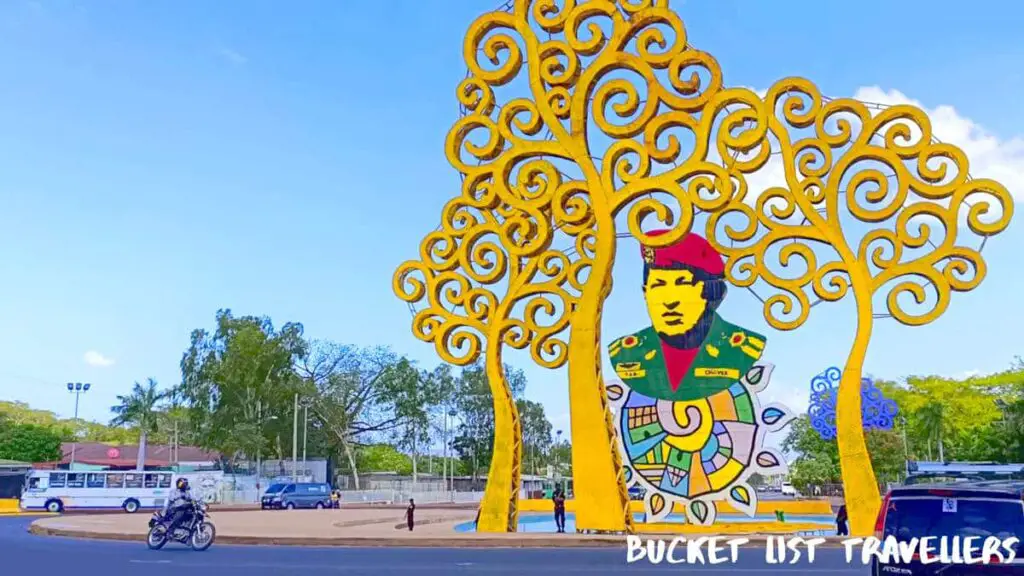
If you are driving to Managua Nicaragua from within Nicaragua , here are the travel times and distances:
- Masaya – 35 minutes (26km, 16miles) without tolls
- Granada – 48 minutes (41km, 26miles) without tolls
- Rivas – 1 hour 48 minutes (101km, 63miles) without tolls
- León – 1 hour 50 minutes (94km, 58miles) without tolls
- Estelí – 2 hours 29 minutes (150km, 93miles) without tolls
- San Juan del Sur – 2 hours 13 minutes (129km, 80miles) without tolls
- Peñas Blancas border crossing to Costa Rica – 2 hours 23 minutes (136km, 85miles) without tolls
- Las Manos border crossing to Honduras – 3 hours 55 minutes (250km, 155miles) without tolls
- Bluefields – 6 hours 37 minutes (355km, 221miles) without tolls
Intercity trains to Managua Nicaragua
There are no trains in Nicaragua .
Shuttle buses to Managua Nicaragua
Shuttle buses operate between major tourist destinations in Nicaragua . You can often book these shuttles through your accommodation or through tour operators. Expect to pay around $35 per person for a shuttle between Managua and San Juan del Sur (as at 2023). Additionally there are two shuttle bus companies that provide shuttle services to Nicaragua from other countries in Central America : Nicabus and Ticabus.
Local buses to Managua Nicaragua
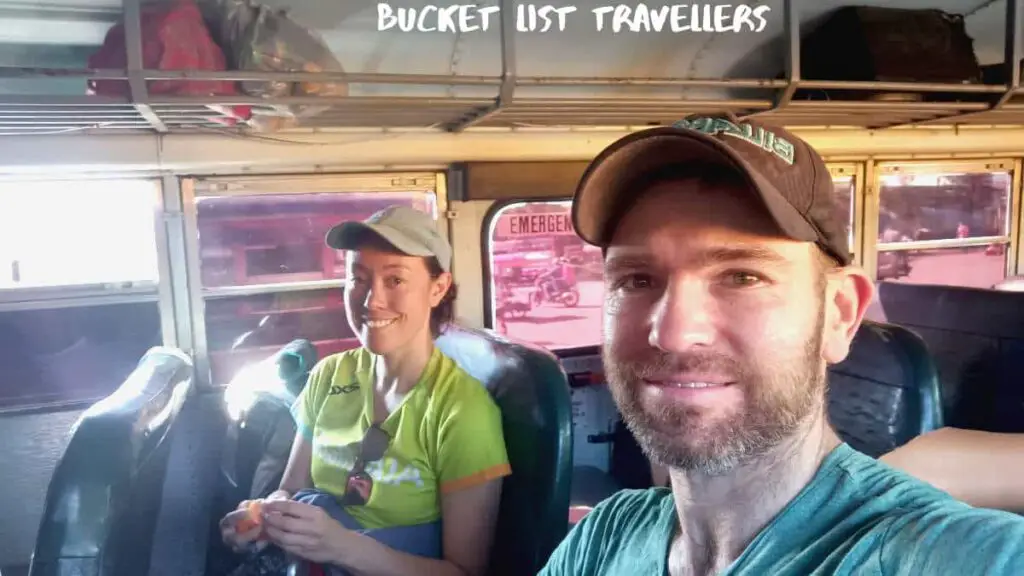
A common way to get around Nicaragua is by using local buses. Tourists often refer to these as chicken buses. Nicaragua public buses are old US yellow school buses that are often painted in bright colours. They have the destination on a sign at the front of the bus. Buses rarely leave on time, so patience is key. We also recommend that you ask about bus times at the station, particularly if you are considering a less regular route. Keep in mind that most locals, including local bus drivers, only speak Spanish.
Before the bus leaves as well as during the journey a number of vendors may get on the bus selling food and other goods. This is a great opportunity to get a snack for your trip or even do your grocery shopping.
Bus terminals in Managua Nicaragua
Managua has 4 bus terminal spread out at different ends of the city. Each of these terminals service different parts of the country. Given horrendous traffic in Managua, it is no wonder that these terminals are on the edges of the city for easy access to the part of the country they service. These bus terminals are:
- Terminal de Autobuses Mercado Roberto Huembes (located towards the southern exit point for Managua) – Buses from Managua to Peñas Blancas (Costa Rica border), Granada , Masaya , Rivas, San Jorge or San Juan del Sur (southwest Nicaragua).
- Terminal de Buses El Mayoreo (located towards the eastern exit point for Managua) – Buses from Managua to Matagalpa, Estelí , Jinotega, El Rama, San Carlos, Ocotal, Jalapa, Wasala, and Somoto (northern Nicaragua).
- Terminal Israel Lewites (located towards the western exit point for Managua) – Buses from Managua to León and Chinandega and microbuses to León (north-west Nicaragua).
- Terminal Mercado Ivan Montenegro – Buses from Managua to Bluefields and El Rama (Caribbean side of Nicaragua).
Additionally there is also a microbus terminal in Managua which has minivans that service all parts of the country.
Common bus routes for Managua Nicaragua
Details for some of the most common bus routes for Managua Nicaragua are listed below:
The above bus fares are as at 2021.
Microbuses or minivans to Managua Nicaragua
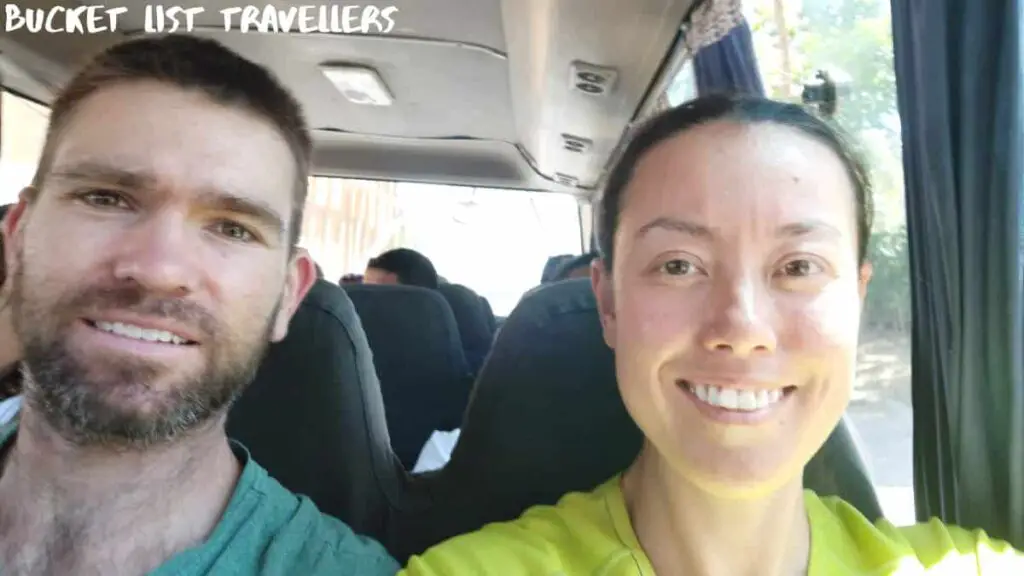
An affordable but slightly more expensive alternative to buses in Nicaragua are microbuses or minivans. These vans generally seat around 10-15 people. They are more direct and generally only a few córdobas more expensive than buses. They usually leave when they are full and are also typically more frequent than buses. We personally think that buses are more comfortable than the minivans as people do get crammed into the minivans and minivans generally don’t provide much legroom. However you do always get a seat in minivans, albeit once my seat was just an upside-down crate in between two other seats. Microbuses in Managua Nicaragua depart from the microbus terminal: Managua – UCA Microbus Terminal. This microbus terminal is about 15 minutes walk from the Metrocentro shopping centre.
Managua Nicaragua destination guide: Arriving by air
The closest airport to Managua Nicaragua is Augusto C. Sandino International Airport (Airport code MGA). This international airport is located in Managua, on the western side of the city.
Other nearby airports include:
- Costa Esmeralda Airport in Tola Nicaragua (Airport code ECI). This airport is 82km (51 miles) away.
- Daniel Oduber Quirós International Airport (Airport code LIR) in Liberia Costa Rica. This airport is 188km (117 miles) away.
- Toncontín International Airport in Tegucigalpa Honduras (Airport code TGU). This airport is 239km (148 miles) away.
There is currently no national airline of Nicaragua . However airlines that service Nicaragua include American Airlines, Aeromexico, Copa Airlines, Spirit Airlines, Avianca Airlines as well as United Airlines. The domestic carrier in Nicaragua is La Costeña.
Managua Nicaragua destination guide: Arriving by boat
The Port of Managua is a small port on Lake Managua. However the main seaport of Nicaragua is Puerto Corinto (Corinto Port). This port is around 2.5 hours drive away from the capital. Cruise ships sometime visit Corinto.
Managua Nicaragua destination guide: How to get around Managua Nicaragua
Walking in managua nicaragua.
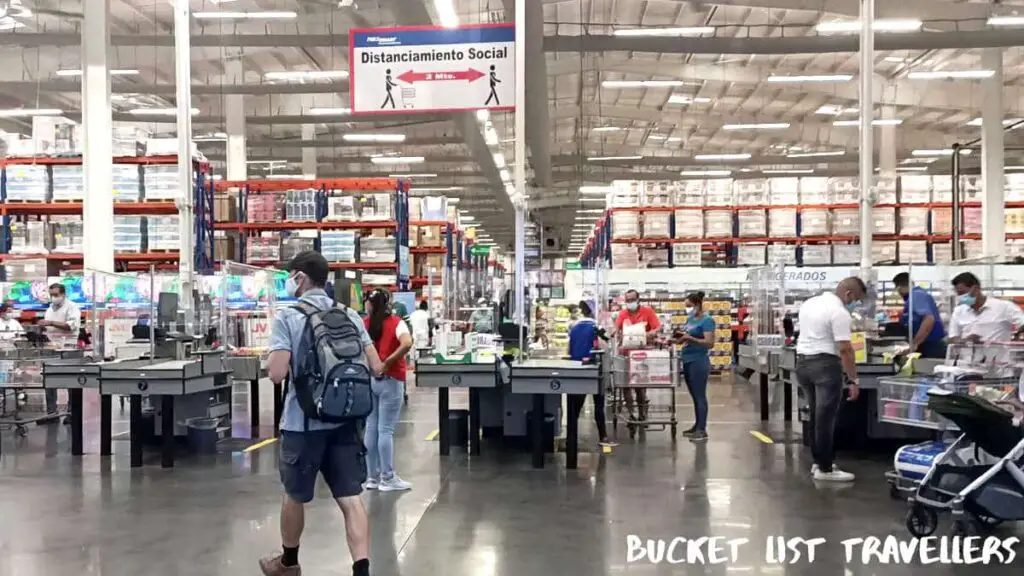
Managua Nicaragua is not a very walkable city as it is spread out and disorganised. There are some nice areas to walk in places like Puerto Salvador Allende as well as the leafy barrio (neighbourhood) Los Robles. However if you want to get from one area of the city to the next we recommend taking a bus for just a couple of cordobas. The city also does get uncomfortably hot and very sunny, so we’d recommend wearing a hat and bringing drinking water if you plan to walk around the city.
Local buses in Managua Nicaragua
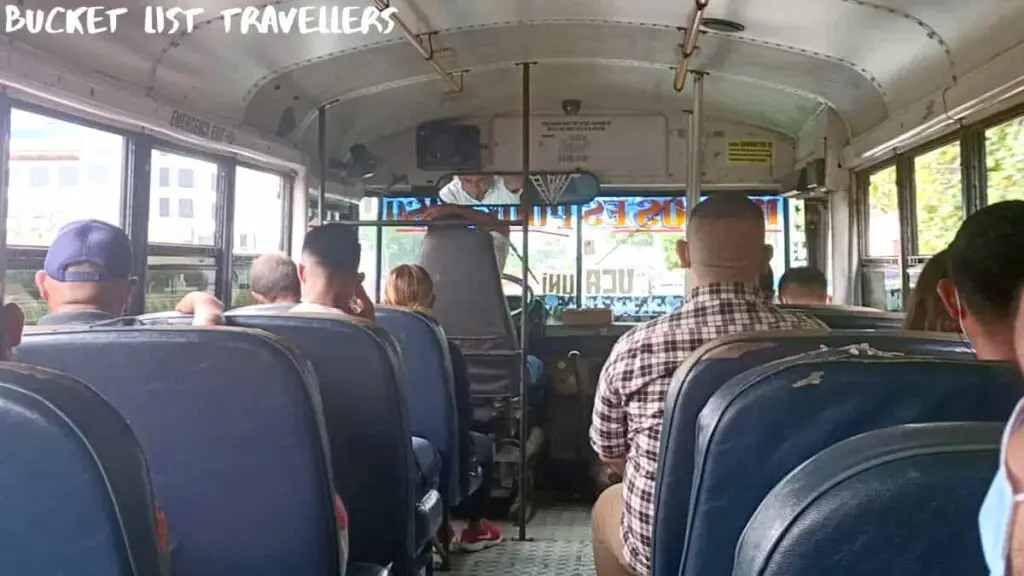
Local buses service Managua Nicaragua.
Trams in Managua Nicaragua
Managua Nicaragua does not have a tram system.
Local trains in Managua Nicaragua
Managua Nicaragua does not have a local train line.
Metro trains (subway or underground) in Managua Nicaragua
Managua Nicaragua does not have an underground train line.
Vehicle hire in Managua Nicaragua
A wide variety of vehicles can be rented in Managua Nicaragua. This includes:
- Motorcycles
In Nicaragua they drive on the right side of the road.
Tuk-Tuks in Managua Nicaragua
Auto-rickshaws or tuk-tuks are common in Nicaragua . They are a cheap and quick way to get from one place to the next. Agree on a price before you start your journey. Expect to pay around C$20-C$30 for a couple for a 10 minute trip. Tuk tuks may pick up other passengers along the way, so don’t be surprised if you have to share a ride with other passengers. We didn’t notice any tuk-tuks in Managua when we were there.
Taxis in Managua Nicaragua

One of the most convenient ways to get around Nicaragua is by taxi. Taxis in Nicaragua don’t generally have metres, so be sure to agree on a price before you begin your journey. Taxis may pick up other passengers along the way, so don’t be surprised if you have to share a ride with other passengers.
Ride-share in Nicaragua
Uber, Lyft and Grab do not operate in Nicaragua. In Managua there are some alternatives:
- Ray Nicaragua
Managua Nicaragua destination guide: Is Managua Nicaragua worth visiting?
Managua is Nicaragua ’s capital city and is the location of Nicaragua international airport. As a main transport hub, you will most likely pass through the city at some point during your Nicaragua trip. Most people don’t see much more of Managua than the airport or the bus stop. However if you take the time to explore, you will find a disorganised city that nevertheless contains a lot of gems waiting to be uncovered.
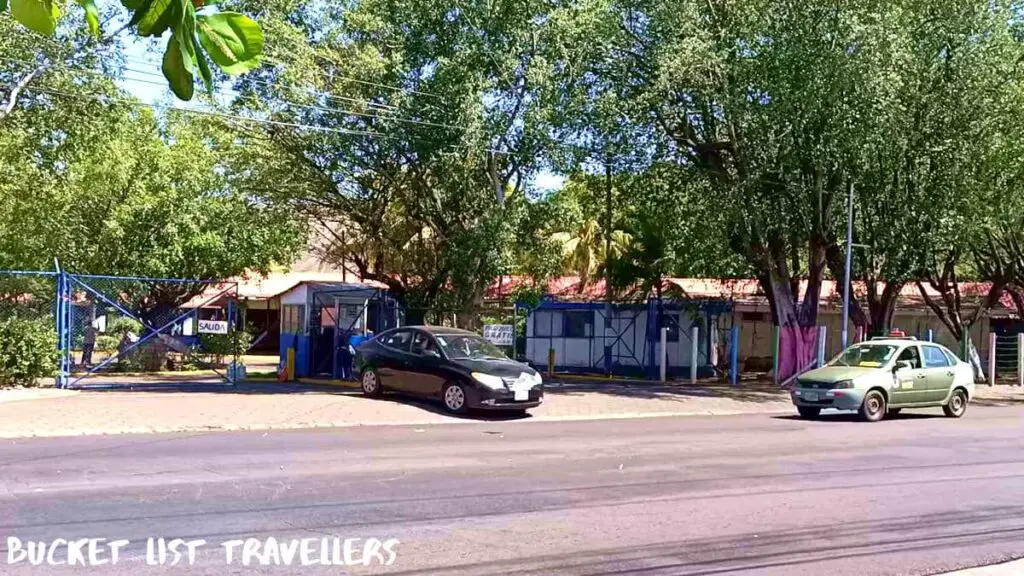
Given the spectacular volcanoes, beautiful beaches and gorgeous colonial cities awaiting you outside of the capital, we don’t recommend devoting time to Managua if you are in the country for only a short amount of time. However if you plan to spend more than 3 months in the Nicaragua we’d recommend spending around one day per quarter in the capital to do some shopping, run errands and get some of the conveniences that you may not get in a smaller town or city. Additionally, if you need to renew visas, you can get same day processing at the Nicaraguan immigration head office in Managua.
Managua Nicaragua destination guide: How long to spend in Managua Nicaragua
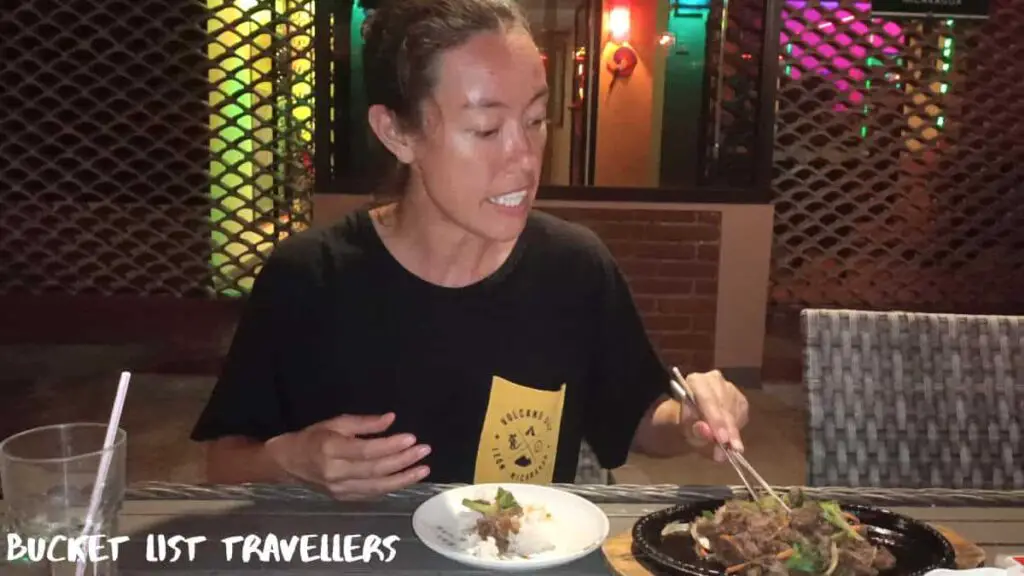
Most people that visit Nicaragua don’t see more of Managua than the airport. This is totally understandable given the attractions on offer outside of the capital. However if you do take the time to visit Managua, you will find a chaotic but interesting city with scenic spots, modern shopping centres and a great food scene. If you decide to live in Nicaragua we recommend taking a day trip to the capital at least a few times a year to shop, eat and run errands. However if you are in the country for a short amount of time we wouldn’t prioritise spending too much time in Managua. We visited Managua a number of times throughout our 18 months living in Nicaragua. We really enjoyed going to the shopping centres, sitting by the water at Puerto Salvador Allende and eating our fill of international cuisine.
Managua Nicaragua destination guide: What to do in Managua Nicaragua
Nicaragua ’s capital is a chaotic city which has a number of attractions spread throughout. It has a range of great free activities as well as paid activities. If you want to know the best things to do in Managua, see our guide on the Top 5 Things To Do in Managua .
Managua Nicaragua destination guide: Free things to do in Managua Nicaragua
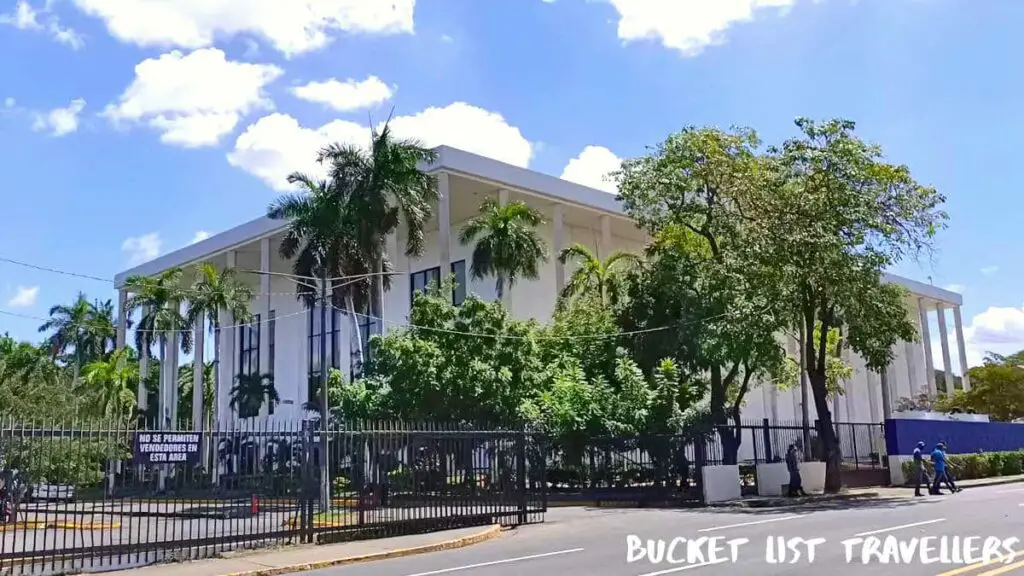
There are enough free activities in Managua Nicaragua to keep you entertained for a day or two:
- Puerto Salvador Allende
- Antigua Catedral de Managua (Catedral de Santiago Apóstol, St James’ Cathedral)
- Plaza de la Revolucion
- Catedral Metropolitana de Managua (the New Cathedral)
- Centro Comercial Galerías
- Managua Seawall (Plaza Nicaragua)
- Plaza La Fe
- Metrocentro
- Arboretum Nacional
- Parque Japón Nicaragua
- Mezquita de Managua
- Parque Central
Managua Nicaragua destination guide: Paid activities in Managua Nicaragua

A number of attractions in Managua Nicaragua charge a fee:
- Loma de Tiscapa – entry fee $1 USD (as at 2022).
- Teatro Nacional Rubén Darío – ticket price depends on the show.
- Palacio Nacional – entry fee $5 USD (as at 2024).
- Parque Acuáticox – entry fee 30 cordobas (as at 2023).
- Estadio Nacional Dennis Martínez – you can buy tickets to a baseball game here.
Events in Managua Nicaragua
Managua Nicaragua hosts a number of events throughout the year, including:
- Año Nuevo – New Year’s Day 1 January. Typically celebrated with bombas (fireworks) as well as setting alight effigies, which represents the burning of the Old Year. There may also be parades in the streets of Managua. Additionally, New Year’s Eve mass is popular.
- Semana Santa – Holy Week (Easter), typically in March or April. It’s common for families and friends to flock to the beach during Semana Santa.
- Joy for Life carnival (Alegria por la Vida) – this festival is usually celebrated between March and April. It is a celebration of Nicaraguan culture and folklore. It includes many activities as well as parades, floats, dancing, music, traditional costumes and food.
- Sandinista Revolution Anniversary – 19 July. This celebrates the 1979 Sandinista National Liberation Army defeat of the Somoza dictatorship.
- Patron Saint festivities – 1-10 August (feast day August 8). The patron saint of Managua is the Santo Domingo de Guzman. August 1: the patron saint statue is brought down the hill from the Las Sierritas Church in the Santo Domingo neighbourhood in a procession known as the “Bajada del Santo” (walk down of the saint). August 10: the statue returns to the church in the “Subida del Santo” (walking up of the saint) procession. Throughout the patron saint festival there are parades horse shows, as well as plenty of music, dancing and drinking.
- Equestrians of Managua – 1-10 August. This horse riding festival (hipica festival) includes horse parades as well as plenty of food, music and dancing.
- La Purísima – 29 November-8 December. This festival celebrating the Virgin Mary.
- La Gritería – 7 December. This is the biggest day of the La Purísima festival and includes a parade, fireworks and performances.
Weather in Managua Nicaragua
The climate for Managua is classified as tropical, with relatively uniform hot temperatures and also high humidity throughout the year. The hottest month is April with an average temperature range of 24°C to 35°C (74°F to 94°F) and coldest month January with an average temperature between 24°C to 32°C (74°F to 90°F). There are two main seasons in Nicaragua ; a wet season that typically commences in May and continues through to the end of October; and the dry season, which lasts from November through to April.
Best time to visit Managua Nicaragua
The dry season is a popular time of year to visit Nicaragua . This is from November to April. However many of the popular activities in Managua Nicaragua such as shopping and dining out are not weather dependent, so you can enjoy a trip to Managua Nicaragua at any time of year. If you want to experience a Nicaraguan festival in Managua, we recommend either the Joy for Life carnival (Alegria por la Vida) which is March and April or the Equestrians of Managua horse riding festival which is in August.
Internet and mobile phones in Nicaragua
The main internet and phone companies in Nicaragua are Tigo and Claro. Tigo has the widest coverage but is slightly more expensive. Both currently operate on 4G. Movistar is another common provider.
The phone messaging app Whatsapp is used extensively in Nicaragua, along with the other popular social media platforms.
High speed optic fibre internet is available in some areas of Nicaragua. The best speeds we’ve experienced have been around 40 Mbps download and 20 Mbps upload. More common speeds that we have found in city hotels have been 4-5 Mbps download and 1-2 Mbps upload (as at 2021). Free wifi comes standard with most accommodation and you can find free wifi in many restaurants and cafes catered to tourists.
Cell phone SIM cards can be bought in many places throughout Nicaragua, including local corner stores known as pulperias.
For more on internet in Nicaragua, see this post .
How much to budget for Managua Nicaragua?
Is managua nicaragua expensive.
We found Managua to be slightly more expensive than the nearby cities of León and Granada . In particular, Managua doesn’t have as much budget accommodation as these two other cities. Additionally, due to the sprawling and decentralised nature of the city, transport costs are also generally higher. However, compared to other capital cities, Managua is a very inexpensive place to visit.
Managua Nicaragua destination guide: Daily spend for a couple travelling in Managua Nicaragua
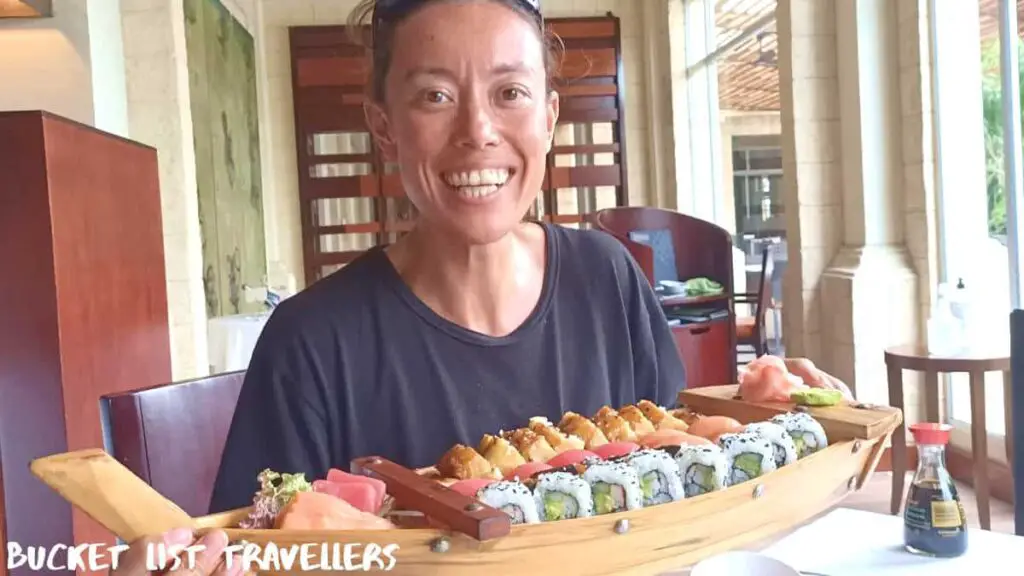
Managua Nicaragua is a great value budget destination, but it also caters to those after a more luxurious experience.
As a rough guide, we recommend the following budgets for a couple:
- Low-budget daily spend – US$60 per day for a couple will get you hostel accommodation, meals at local eateries and markets, local transport and free or cheap activities such as visiting the central park, churches and local markets.
- Mid-range daily spend – US$100 per day for a couple will get you mid-range accommodation, local transport and a few tours.
- Luxury spend – $500 per day for a couple will get you a premium experience in Nicaragua, staying in luxury accommodation, travelling by private transport, doing a range of tours and eating at high end restaurants.
Managua Nicaragua destination guide: Accommodation in Managua Nicaragua
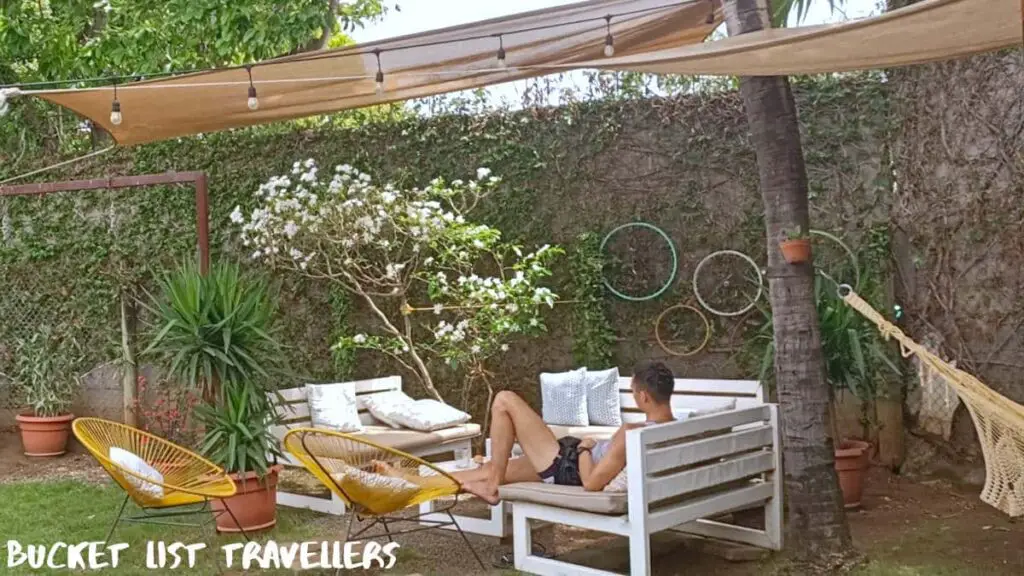
There is a good range of accommodation to suit most budgets in Managua Nicaragua. Airbnb also operates in Nicaragua , and there are a number of Airbnb properties in Managua Nicaragua.
Where to stay in Managua Nicaragua
We recommend the following accommodation in Managua Nicaragua:
- Best hostel in Managua Nicaragua – We highly recommend staying at La Bicicleta Hostal for budget friendly accommodation in Managua Nicaragua. We stayed here ourselves and we are certain that it is the best hostel in Managua. Located in a quiet leafy neighbourhood of Los Robles Managua, the hostel is clean, comfortable and secure. The staff were very friendly and we particularly enjoyed relaxing in the common areas and savouring their delicious breakfasts.
- Best bed & breakfast in Managua Nicaragua – Casa Lucía is the best B&B in Managua Nicaragua. This family run hotel is centrally located in the Los Robles neighbourhood of Managua. The hosts are friendly and make you feel at home.
- Best boutique hotel in Managua Nicaragua – La Posada del Arcangel is the best boutique hotel in Managua Nicaragua. The customer service and food are excellent. The hotel is beautifully presented and also displays artwork from local artists.
- Best hotel in Managua Nicaragua – Hotel Nicté is one of the best hotels in Managua Nicaragua. It is a beautiful modern hotel with beautiful gardens and a pool. Located in the Las Colinas neighbourhood, it is conveniently located whilst also being in an area that is peaceful and quiet.
- Best luxury accommodation in Managua Nicaragua – The hotel Real Intercontinental Metrocentro Managua is the best 5 star hotel in Managua. It is conveniently located right next to Metrocentro shopping centre. The hotel is a beautiful oasis in the middle of the bustling city. We love the pool area which is surrounded by a number of excellent restaurants. You can find the best sushi in Nicaragua at the hotel Nau Lounge restaurant. The staff also provide superb service.
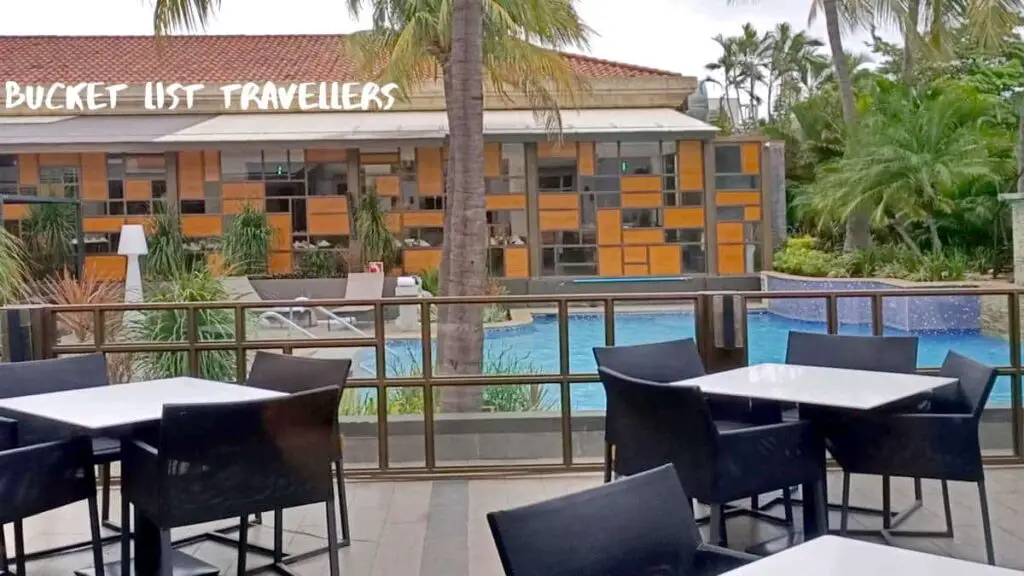
How much is accommodation in Managua Nicaragua?
For short-term accommodation, a general price per night is as follows:
- Budget accommodation – US$19-$30 for a bed in a dorm.
- Mid-range accommodation – US$35-130 for a private room.
- Luxury accommodation – US$130-230 a night for a luxury hotel.
- Rental property – US$35-275 a night for a fully furnished 3-4 bedroom home.
Managua Nicaragua destination guide: Food in Managua Nicaragua
How much does food cost in managua nicaragua.
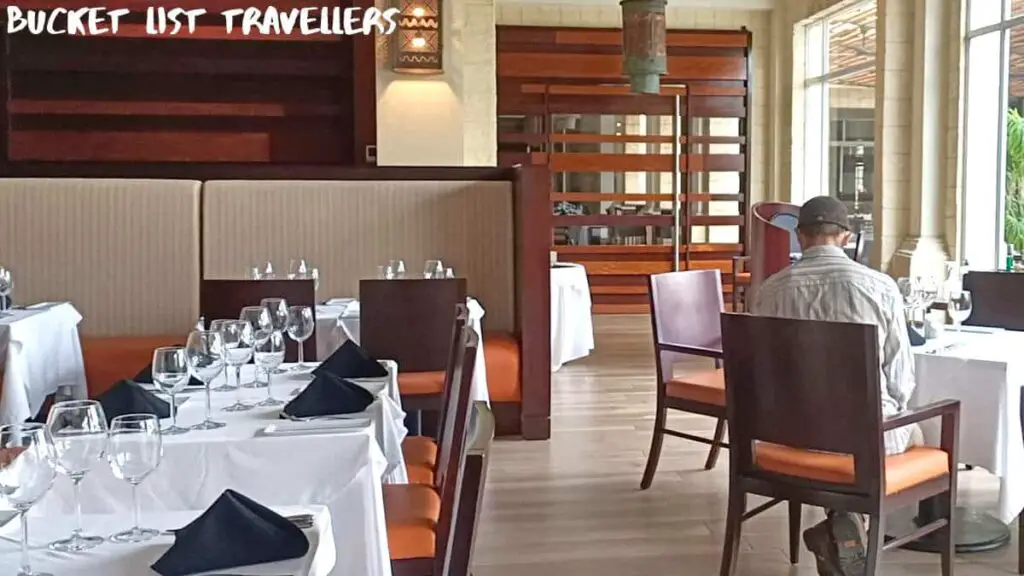
Our price guide for your food budget in Managua Nicaragua is as follows:
- Restaurant meal – US$10-15 for a main dish (350-500 cordobas)
- Local eatery – US$3-5 for a main dish (100-200 cordobas)
- Street food – US$1 (30-40 cordobas)
- Beer (try the local Nicaragua beer Toña) – US$1 (30-40 cordobas)
- Local fruit drink (refresco) – US$0.30-0.50 (10-15 cordobas)
Must eat food in Managua Nicaragua
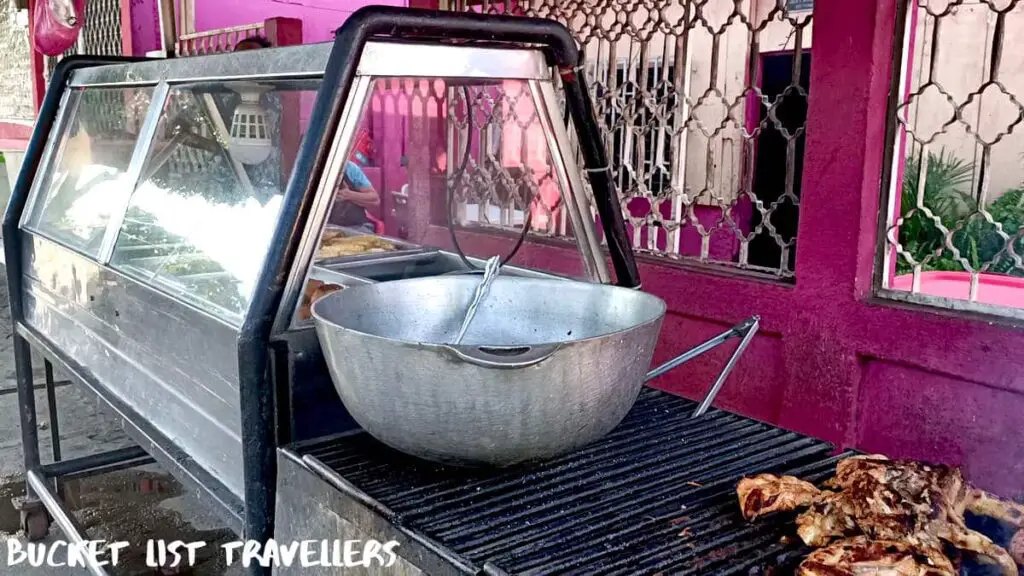
- Local street food (typical assortment) from local fritangas
- Gallo pinto
- Desayuno Nica (Nicaraguan breakfast)
- Pescado a la tipitapa
- Baho (also called vaho)
- Nacatamales
- Indio Viejo (Nicaraguan Beef Stew)
- Sopa de cola
- Tres leches cake
Cheap Eats in Managua Nicaragua
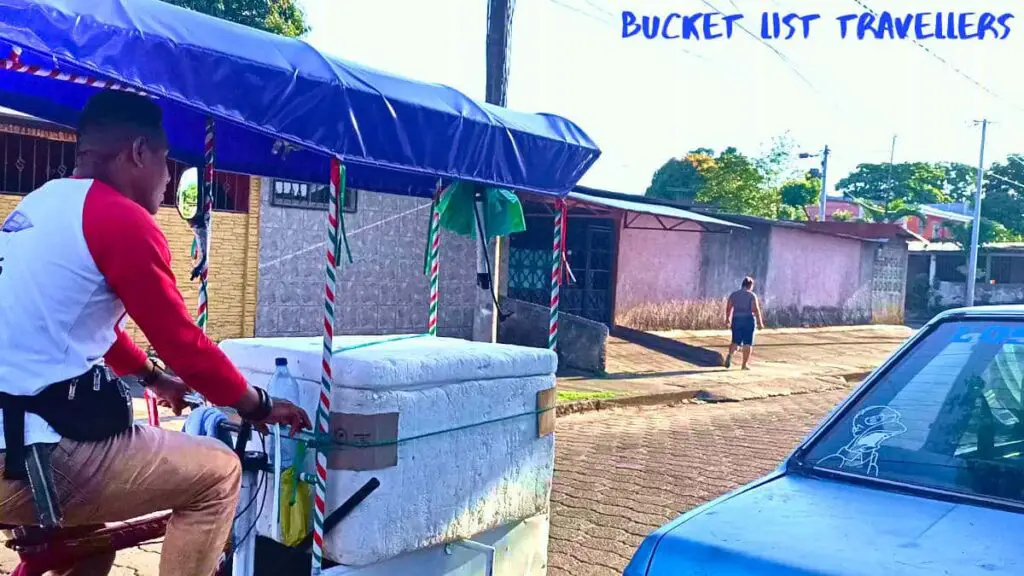
- You can’t go past street food for a cheap and delicious treat. Our favourite street food includes enchiladas, nacatamales, hamburgesas and raspados. You can find street food all around Managua, particularly around the markets as well as at transport hubs. A lot of street vendors sell food from in front of their homes or else go door to door down the street, so you’re never far from great food!
- Bakeries are a great place to get cheap and delicious food.
Managua Nicaragua culture
Weekends in managua nicaragua.

Weekends in Managua are on Saturdays and Sundays. Sundays are typically quieter in the city and public transport may be less frequent on Sundays as well.
Managua Nicaragua public holidays
Public holidays for Nicaragua are as follows:
- New Year’s Day – 1 January
- Maundy Thursday (Holy Thursday) – the Thursday before Easter Sunday, typically in March or April
- Good Friday – the Friday before Easter Sunday, typically in March or April
- Easter Sunday – typically in March or April
- Labor Day – 1 May (holiday on the Monday if it falls on a weekend)
- Mother’s Day – 30 May
- Sandinista Revolution Anniversary – 19 July
- Battle of San Jacinto – 14 September
- Independence Day of Nicaragua – 15 September
- Indigenous Resistance Day – 12 October
- All Souls Day (Day of the Dead) – 2 November
- Feast of the Immaculate Conception (Immaculate Conception Day) – 8 December
- Christmas Eve – 24 December
- Christmas Day (Navidad) – 25 December (holiday on the Monday if it falls on a weekend)
- New Year’s Eve – 31 December
National symbols of Nicaragua
- Nicaragua flag – two blue bands with a white band containing the Nicaragua coat of arms in the middle. The blue bands represent the Pacific Ocean as well as the Caribbean Sea and the white band symbolises peace.
- Nicaragua coat of arms – this consists of a triangle, the Cap of Liberty, a rainbow, the rays of sun as well as 5 volcanoes. The Cap of Liberty represents national freedom, the 5 volcanoes represent the original 5 member states of the United Provinces of Central America and the rainbow and sun represent the bright future of Nicaragua.
- National flower – sacuanjoche (the flower of the frangipani tree).
- National bird – guardabarranco.
- National heroes – poet Rubén Dario, revolutionary leader Augusto C. Sandino.
Nicaragua pastimes
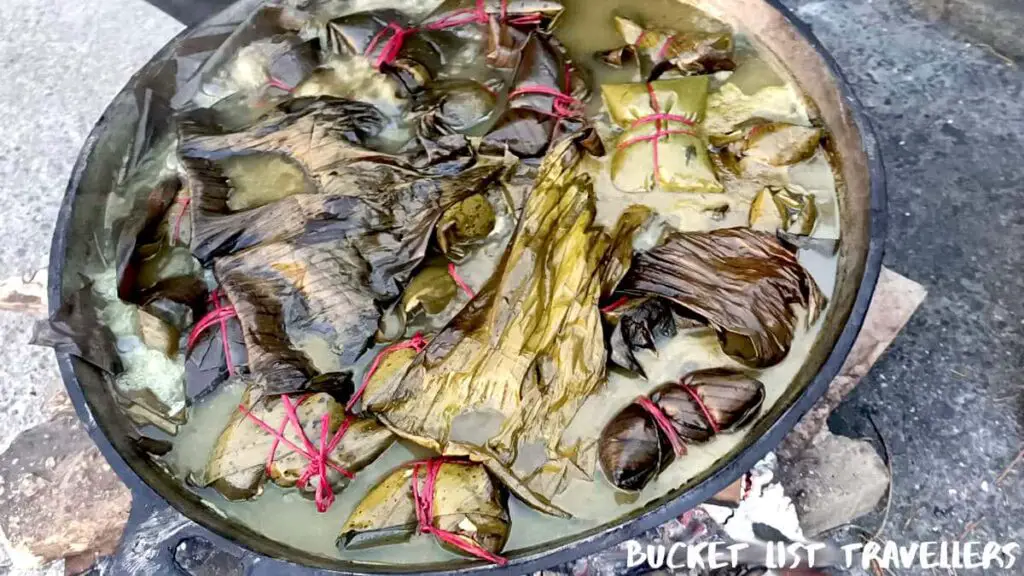
- National dish – gallo pinto. This is a dish of fried rice mixed with red beans and also spices. It can be eaten at any time of day. It is typically served at breakfast along with eggs, tortillas, fried plantains as well as a type of cheese called queso fresco.
- Popular drinks – grama, Toña beer, Flor de Caña Rum.
- National sport – baseball.
- Religion – 56% Catholic, 28% Protestant, 1% Jehovah’s Witness (as at 2010).
Famous people from Managua Nicaragua
- Famous people born in Managua Nicaragua – Human rights advocate and Mick Jagger’s former wife Bianca Jagger, Vice President of Nicaragua Rosario Murillo, actor Pedro Miguel Arce, novelist and poet Gioconda Belli, former President of Nicaragua José Santos Zelaya, former Nicaraguan President Arnoldo Alemán, model Xiomara Blandino, dancer Lillian Molieri, singer Katia Cardenal, poet María Teresa Sánchez.
- Sports stars from Managua Nicaragua – boxer Alexis Argüello, boxer Román González, baseball player Jonathan Loáisiga, boxer Felix Alvarado, boxer Rosendo Álvarez, boxer Cristofer Rosales, boxer René Alvarado.
Is Managua Nicaragua Safe?
Nicaragua travel guide: safety in managua nicaragua.
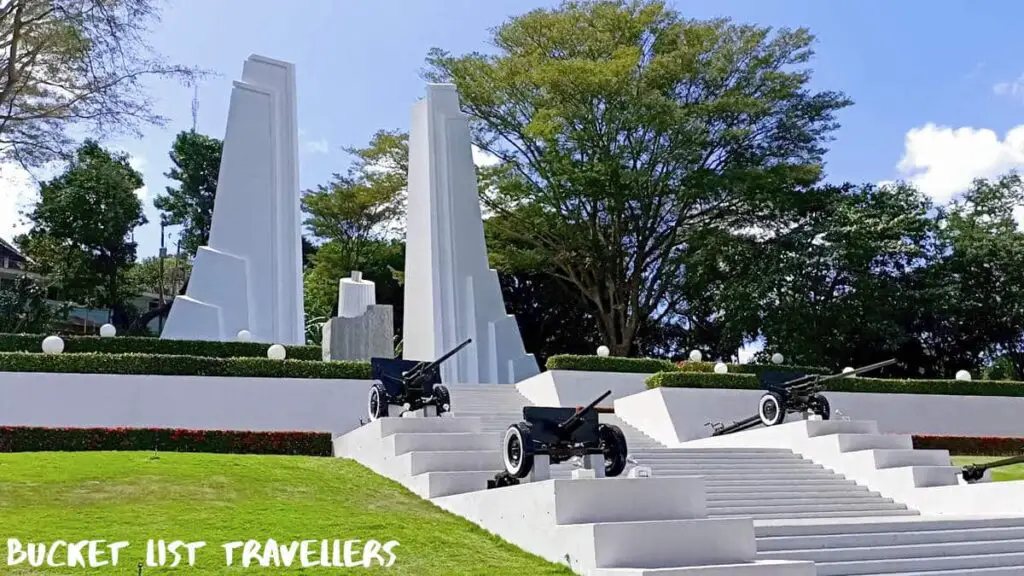
Managua has a reputation for not being a particularly safe place to visit. In particular the Mercado Oriental and surrounding area is known as a high-crime area. We personally avoided the Mercado Oriental area due to safety concerns. We have visited Managua multiple times and have found the city reasonably safe. However it is a major city, so crime tends to be higher here than other parts of the country. Notably, petty crime and crimes of opportunity can be an issue. As such, we recommend taking care to keep your valuables secure and out of sight. We also noticed that people in Managua were more wary of seeing foreigners taking photos or videos, so don’t be surprised if you get asked to put your camera away. As with any major city, there are some areas that are safer than others. For more information on safety in Nicaragua , watch this video .
Nicaragua experienced a period of civil unrest in 2018. This has now passed, and as a tourist you should not be affected. However you may still see armed police manning a pedestrian bridge across the main road Carratera a Masaya.
General safety considerations in Nicaragua
Other general safety considerations for travel in Nicaragua:
- Drinking water – Managua’s tap water is safe to drink. We drank tap water without issue. However many tourists prefer to drink bottled water. Additionally, most accommodation provides purified water for guests to use.
- Mosquitoes – The mosquitoes in Managua don’t generally carry tropical diseases. Nicaragua has mosquito control programs and many buildings are sprayed regularly for mosquito control.
- Scorpions – Nicaragua has scorpions. We recommend checking your shoes before putting them on and keeping bags zipped closed when not attended to ensure you don’t get any nasty surprises.
- Road safety – In Nicaragua we often travelled standing up in the back of vans or in vehicles without helmets or seat belts. This does come with an element of risk.
- Water safety – take care when swimming as currents and waves may be stronger than you expect. Also, the Nicaragua bull shark is in Lake Nicaragua.
- Earthquakes – Managua is located on fault lines and is predicted to experience a severe earthquake every 50 years. The 1972 earthquake decimated the city. In an earthquake, stay away from glass, windows, outside doors and walls and anything that could fall. If inside, get under a table, desk or solid furniture and hang onto it. Cover your head and torso to protect from falling objects. If outside, stay outside and go to an open area away from buildings.
- Volcanic eruptions – the closest volcano to Managua is Masaya Volcano. Located around 20km south of Managua, this is one of the most active volcanoes in the world.
- Hurricanes – Managua is not typically significantly affected by hurricanes. You may get some heavy rain during hurricane season and blackouts may occur.
- Sun safety – The UV Index is very high in Nicaragua. Therefore sun protection such as sunscreen, a hat and sunglasses is very important.
- Dogs – stray dogs are common. For more on dog safety, watch this video .
As with any destination, take all of your normal safety precautions.
Nicaragua Blogs
You can find our Nicaragua blogs below.
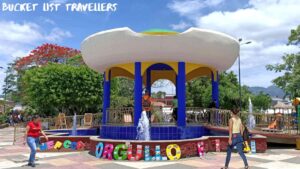
Esteli Nicaragua Destination Guide (2024): What You Need to Know
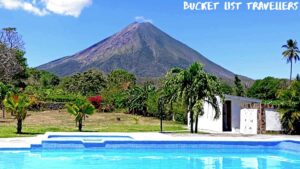
Ometepe Island Nicaragua Destination Guide (2024): What You Need to Know
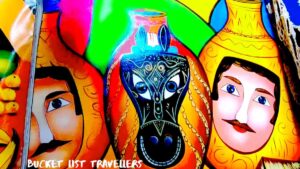
Masaya Nicaragua Destination Guide (2024): What You Need to Know
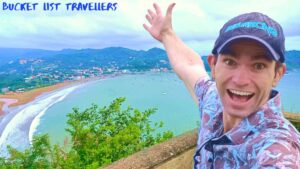
San Juan del Sur Nicaragua Destination Guide (2024): What You Need to Know
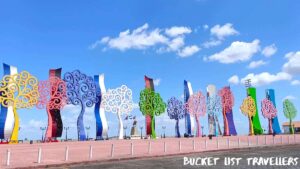
Leon Nicaragua Destination Guide (2024): What You Need to Know
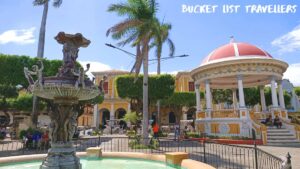
Granada Nicaragua Destination Guide (2024): What You Need to Know
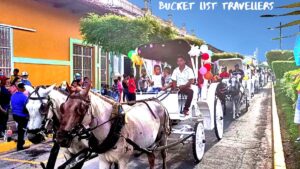
Transport in Nicaragua – Complete Guide to Nicaragua Transportation (2024)
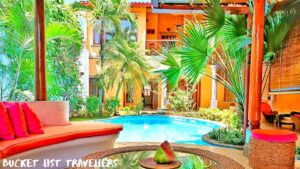
Where should I live in Nicaragua?
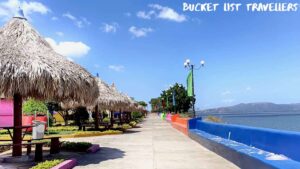
Top 5 Things to do in Managua Nicaragua (2024)
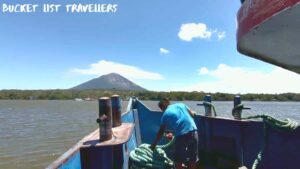
Granada Ferry: How to get to Ometepe Island

Nicaragua Costa Rica Border Crossing: Complete Travel Guide
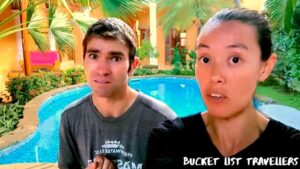
Home Invasion in Granada Nicaragua

Ojo de Agua: Paradise in Nicaragua!
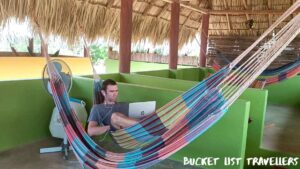

How Good is the Internet in Nicaragua?
Affiliate links.
This website contains affiliate links, which means we may earn a commission on any purchases at no additional cost to you. Your support helps us continue our travels and make more travel blogs and travel videos , thank you!
Similar Posts
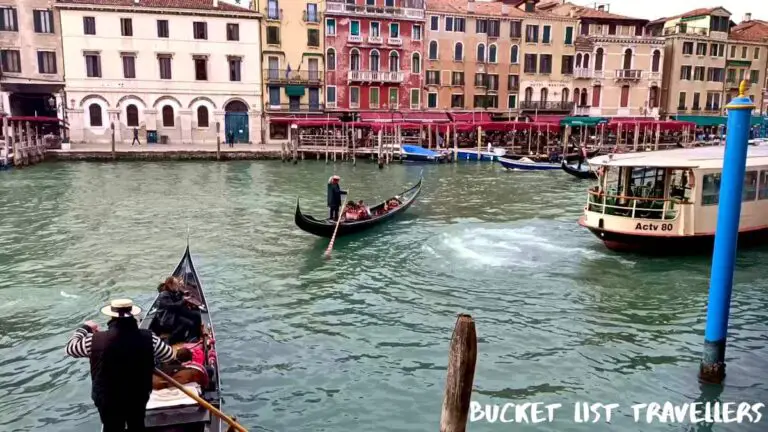
Venice Destination Guide (2024): What You Need to Know
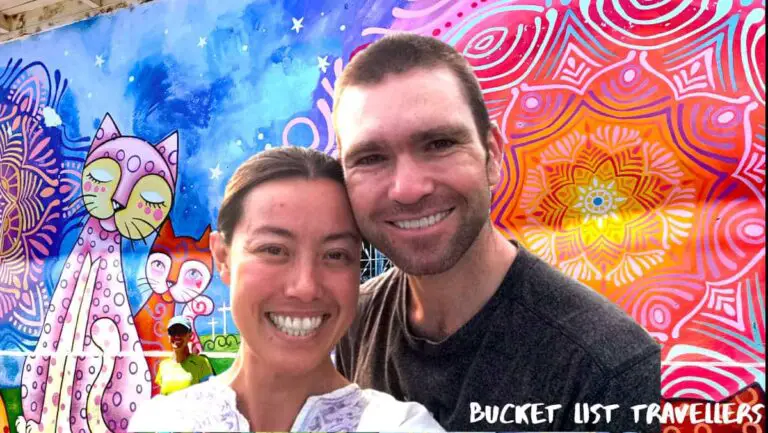
Visiting the Most Beautiful Area of El Salvador: Ruta de las Flores
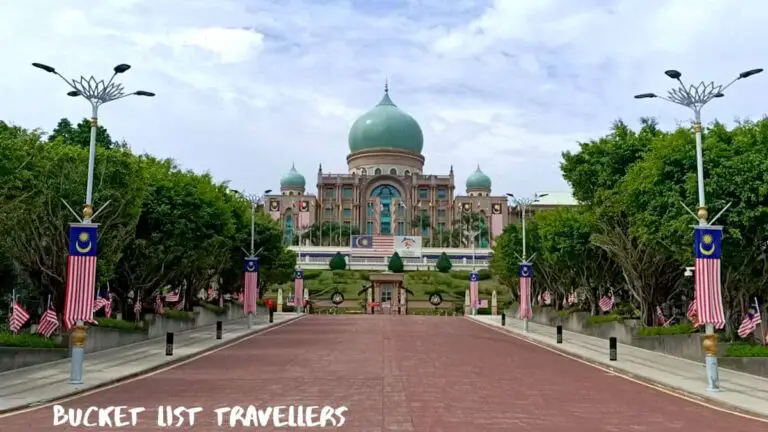
Putrajaya Destination Guide: Everything You Need to Know (2024)
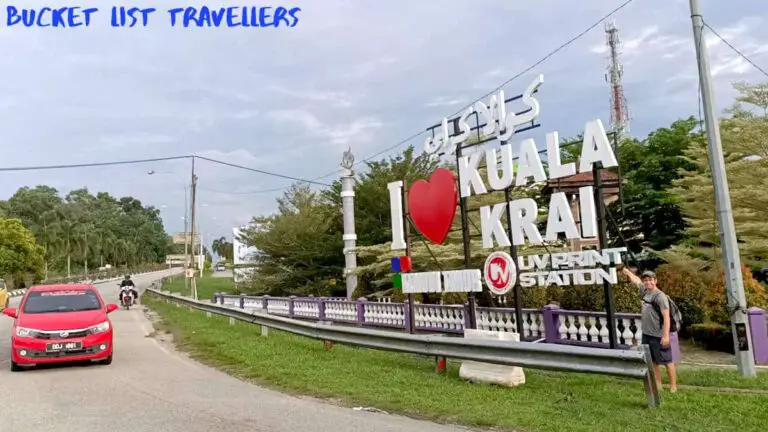
Kuala Krai Destination Guide (2024): What You Need to Know
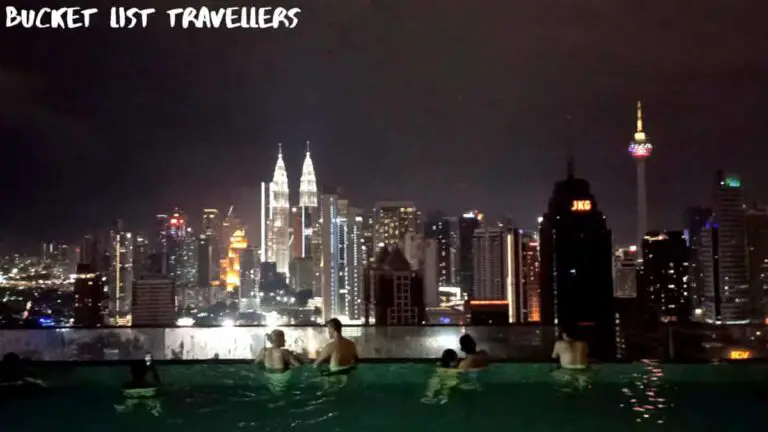
Kuala Lumpur Destination Guide: Everything You Need to Know (2024)
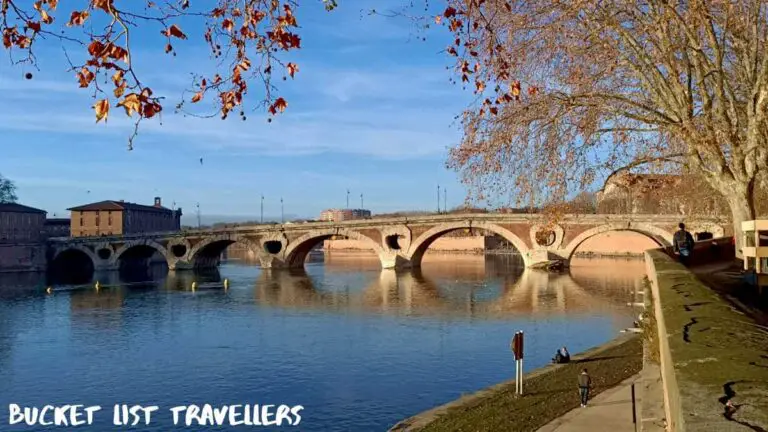
Toulouse Destination Guide (2024): What You Need to Know
Leave a reply cancel reply.
Your email address will not be published. Required fields are marked *
Save my name, email, and website in this browser for the next time I comment.

- Search Please fill out this field.
- Manage Your Subscription
- Give a Gift Subscription
- Newsletters
- Sweepstakes
- Destinations
- Central & South America
This Central American Country Is Home to Beautiful Beaches, Epic Surf, and a Rich Cultural History
How to plan the perfect Nicaragua vacation — boutique hotels, stellar surfing spots, and delicious food included.
Jade Moyano is a Brazilian-born travel writer and editorial director who speaks four languages. Her work has appeared in Monocle, Uproxx, GQ, Travel + Leisure , and other publications.
Nicaragua is a postcard-worthy destination that harkens back to simpler travel times.
Lined with emerald-green coasts dotted with old-school fishing villages, it's a place where you can surf nearly empty lineups as if you were still in the '70s.
I've sailed around its Pacific coast in a catamaran, stopping at deserted islands to watch dolphins frolic by. I've danced salsa in a corner bar in Granada, one of the oldest colonial cities in Latin America. I've ridden motorcycles through dense jungle trails in Popoyo, had gallo pinto on the side of the Pan-American Highway, and made friends that will last a lifetime. But these experiences barely scratch the surface of why Nicaragua is one of my favorite destinations.
For starters, Nicaragua is not for everyone. It's rugged and traditional, with a bit of edge and a bloody past . But it's also home to a rich cultural heritage and friendly locals who go out of their way to get you the most delicious seafood, help you catch a wave, or show you the way around the backroads.
I first went to Nicaragua in 2015, when the country was experiencing somewhat of a golden age. A combination of affordability, an under-the-radar reputation, and the rise of surf tourism made towns such as San Juan del Sur popular. This lasted for about three short years. It was a time when things were fairly peaceful, the economy was growing, and tourism was booming. Since then, due to civil unrest and the pandemic, it has become less common to see positive headlines about the nation, but what keeps people coming back to Nicaragua — stunning nature, pristine beaches, and lively culture — is still intact.
Nicaragua is set between the Pacific Ocean and Caribbean Sea. Upon landing in the capital city of Managua, most people flock to the Pacific, where the surf is some of the most consistent in all of Central America and the cities of Leon and Granada offer deep cultural insight into this beach destination . Yet, it's on the Caribbean coast where you'll find the most untouched lands. In this area, expect to find Indigenous, Creole, and British influences in the fishing communities that live among the mangrove-filled jungle.
Best Time to Go to Nicaragua
While many tropical countries around the world count on an extremely dry and rainy season, Nicaragua has a milder version of both. The dry season here runs from November through May, though it's not as barren as its neighbor Costa Rica . Meanwhile, the rainy season, which spans April through October, brings torrential downpours (especially in October), but note that it's rare for it to rain all day every day.
The one thing that's rather consistent in Nicaragua is the temperature. According to Weather Spark , "The temperature in Managua varies so little throughout the year that it is not entirely meaningful to discuss hot and cold seasons."
One more forecast you may be interested in is the surf. According to Giant's Foot Surf , for waist- to head-high swells, visit Nicaragua between March and September. But if you're looking for larger waves, you may need to come in the middle of the rainy season — between May to August — which Giant's Foot Surf calls the nation's "prime time."
Best Things to Do in Nicaragua
No trip to Nicaragua is complete without a deep dive into the world of surf, sun, and sandboarding.
The Pacific coast of Nicaragua is lined with beaches for all surf levels. Some must-see spots include Playa Maderas, Popoyo, El Tránsito, Playa Colorado, and Playa Hermosa, and it's possible to experience all of these during a weeklong trip.
El Tránsito is a short, 90-minute drive from the Managua airport. In El Tránsito, you'll find yourself immersed in a tight-knit community of locals and about some expat families. Stay at Mandla , a boutique hotel designed by a couple from England and South Africa. Make sure to eat every item on their menu, especially the fresh oysters.
Further south, you can stop at Popoyo, where consistent offshore winds and epic waves make it one of the best places to surf in all of Central America. Malibu Popoyo , a 12-room resort tailor-made for surfing families, is perfectly perched across from the beach, and stays here come with a great surf coach and tour guide.
Next, head down to Playa Maderas for a more mellow, family-friendly beach experience ideal for beginners. If surfing is not your thing, don't worry, as these beaches also flourish with local life, seafood restaurants, and occasional live music.
Want to see more land, but don't want to forgo surfing? Volcano boarding is your best bet. Yes, we are talking about sliding down Cerro Negro after hiking to the summit at 2,300 feet. The trek is challenging, but the ride back is unforgettable. All you have to do is hold a string attached to a wooden plank and slide down to the bottom at an average speed of 50 mph.
Lastly, visit Ometepe , an island formed by two volcanoes rising out of Lake Nicaragua. To arrive, hop aboard one of the wooden transport boats that may also be carrying anything from chickens to motorcycles. On Ometepe, you can choose to trek up the volcanic peaks, swim in natural pools, get lost on nature trails, or taste coffee right next to the field in which the beans are grown.
Best Hotels in Nicaragua
Anyone who lands in Managua also has the option to drive north or south, to choose between more populated areas or seclusion. But regardless of the direction, Nicaragua is full of small boutique hotels from renowned designers and hoteliers who flocked to the country in search of a more laid-back lifestyle.
For a design-forward property, check into the Tribal Hotel in Granada. Aside from its location on a colorful street, the New Yorkers who own the hotel traveled the world seeking unique pieces that complement the artisanship of local craftsmen. From Copacabana pool tiles to Indonesian batik fabrics, Tribal feels like a slice of the world on an unassuming corner in the bustling colonial city.
For those wanting to surf exclusive Playa Colorado, located within a gated community near Popoyo, Aurea is your best bet for guaranteed access to the world-class waves. The brutalist-inspired guest house, which was dreamed up by a group of Venezuelans, feels less like a hotel and more like a home within a community of expats and well-to-do Nicaraguans.
For something more accessible, book a stay at the aforementioned Malibu Popoyo , a 12-room boutique hotel owned by a female surfer and entrepreneur who fell in love with the area during a surf trip. Perfect for families in search of adventure and comfort, as well as surfers and creative types, the property is located a few steps from the beach and boasts an on-site organic restaurant.
Related Articles
Managua and around Travel Guide
Book your individual trip , stress-free with local travel experts
Select Month
- roughguides.com
- Central America & the Caribbean
- managua-around
- Travel guide
- Travel Advice
Accommodation
Plan your tailor-made trip with a local expert
Book securely with money-back guarantee
Travel stress-free with local assistance and 24/7 support
Hotter than sin and crisscrossed by anonymous highways, there can’t be a more visitor-unfriendly capital than MANAGUA . Less a city in the conventional sense than a conglomeration of neighbourhoods and commercial districts, Managua offers few sights and cultural experiences – in fact, most visitors are so disturbed by the lack of street names and any real centre that they get out as fast as they can.
Carretera a Masaya and the Metrocentro
Catedral nueva, catedral vieja, drinking and nightlife, loma de tiscapa, museo huellas de acahualinca, palacio nacional de la cultura, plaza de la revolución, plaza de la fe san juan pablo ii, teatro nacional rubén darío, tour operators in managua.
Not even the city’s setting on the southern shore of Lago de Managua is particularly pleasant: the area is low lying, swampy and flat, relieved only by a few eroded volcanoes. It also, unfortunately, sits on top of an astounding eleven seismic faults, which have shaken the city severely over time. The result has been a cycle of ruin and rebuilding, which has created a bizarre and postmodern mixture of crumbling ruins inhabited by squatters, hastily constructed concrete structures and gleaming new shopping malls and hotels. The old city centre, damaged further in the Revolution of 1978–79 and never thoroughly repaired, remains eerily abandoned.
All this said, there are things to enjoy here, although being a tourist in Managua does require a good degree of tenacity. As Nicaragua’s largest city and home to a quarter of its population, the city occupies a key position in the nation’s economy and psyche, and offers more practical services than anywhere else in the country.
For the visitor, sprawling Managua can thankfully be divided into a few distinct areas. The old ruined centre on the lakeshore is the site of the city’s tourist attractions, including the few impressive colonial-style buildings that have survived all the earthquakes. Lago de Managua , which forms such a pretty backdrop to this part of the city, is unfortunately severely polluted from sewage and regular dumpings of waste.
Just to the south is the city’s main landmark, the Crowne Plaza Hotel , whose white form, reminiscent of a Maya pyramid, sails above the city. Walking just west of the Crowne Plaza and twelve or so blocks south of the old ruined city centre brings you to the backpacker-frequented Barrio Martha Quezada , home to rock-bottom prices and international bus connections. A further 1km south, around Plaza España , you’ll find many of the city’s banks, airline offices and a well-stocked La Colonia supermarket. In the southeast of the city, a new commercial district has grown up along the Carretera a Masaya , the main thoroughfare through the southern part of the city. East of here lie the Metrocentro shopping centre and upmarket residential suburb of Altamira .
Top image: Ruins of old cathedral in Managua © PixieMe/Shutterstock
Barrio Martha Quezada, where most international buses arrive, is the place for backpacker-friendly hospedaje -type accommodation; most places are scattered in the quiet streets on either side of the Tica Bus terminal. Elsewhere in the city, you’ll find more secure and modern districts than Martha Quezada, notably in the relatively swish area around the Metrocentro.
About 1km south of the laguna lies Managua’s biggest concentration of residential and commercial neighbourhoods and most of its westernized nightlife. The main thoroughfare through this part of the city is the Carretera a Masaya , hemmed in to the east by the embassy neighbourhood of Altamira and to the west by La UCA, or the Universidad Centroamericana. It’s on this road, just south of Pista Juan Pablo II, where you’ll find the bland but blissfully cool Metrocentro shopping centre, which offers shops, ATMs, a food court, banks, a cinema and the InterContinental Metrocentro hotel.
A short walk from the Metrocentro shopping centre, in the middle of a field, is the Catedral Metropolitana de la Purísima Concepción, known simply as the Catedral Nueva , a striking and brutal piece of architecture whose roof resembles a collection of large concrete hand grenades. Inside there’s a bleeding figure of Christ encased in glass, but the milling worshippers are more compelling than the cavernous interior.
On the eastern side of the Plaza de la Revolución stands the wreckage of the ash-grey Catedral Santiago de los Caballeros. Known as the Catedral Vieja , the ruins are a compelling and oddly romantic monument to a destroyed city. Birds fly through the interior, where semi-exposed murals and leaning stone angels with cracked wings still line the walls. Plans to restore the cathedral are continually being shelved; for now, the building remains officially closed to visitors.
Managua’s nightlife is given a shot in the arm with the continuing return of the “Miami Boys” – wealthy families who fled revolutionary Nicaragua – who have helped drive the demand for upmarket bars and discos. As well as the plusher options, the city offers a reasonable choice of cheaper places to drink and dance – most places only charge a few dollars cover and drinks are either included or cost around C$20–60. You can expect to hear merengue, salsa, reggaetón, pop, house and even Nica rancho music (not unlike American country). Most bars shut between midnight and 2pm, and clubs start filling up from 10pm – Saturday is the busiest evening of the week.
Wherever you walk in Managua – on the street, at the bus stop or even under a shady tree – you will find someone selling a drink or comida corriente . Good, cheap food on the hoof is also easy to get in any of the major markets – look out for pupusas , a Salvadoran concoction of cheese, tortillas, sauce and meat. Managua also has a surprisingly cosmopolitan selection of restaurants: Chinese, Spanish, Mexican, Japanese, Italian, Peruvian, North American – even vegetarian. Americanized fast food is virtually everywhere, but cafés are thin on the ground and tend to be frequented by expats and wealthier locals. As for picnic food and self-catering, well-stocked supermarket chains La Colonia and La Unión sell a large selection of local and imported food including organic produce. You can also buy a lot of the basics at local pulperías , small shops set up in people’s houses. Fruit and vegetables are cheapest at the weekend markets, when the growers come into town to sell their produce.
Directly behind the landmark Crowne Plaza , you can get some perspective on both Managua’s dramatic history and its weird, battered cityscape in the Loma de Tiscapa , or Tiscapa Historical National Park. The fifteen-minute walk up the hill takes you via a series of posters detailing the rise and fall of Somoza’s National Guard, then past the elegant white pillars of the Monumento Roosevelt and a decapitated statue of Justice before winding round and up to a silhouetted statue of Sandino . Nearby lie a tank and statue donated to Somoza by Mussolini. Photos detail the disastrous earthquakes of 1931 and 1972, while a display in the tunnels of the former prison goes into gory details of Somoza’s infamous noches de tortura (torture nights).
The views of the city from here are excellent, stretching north to Lago de Nicaragua and the distant volcanoes and south beyond the new cathedral towards Masaya. Adventurous types can enjoy them on a so-called canopy tour from the top of the hill. Three cables cover more than 1km, allowing you to glide high above the city and the picturesque – but polluted – Laguna Tiscapa , which sits below the Loma de Tiscapa’s summit.
North of the theatre, an attempt has been made to spruce up the previously seedy lakeshore boardwalk, or malecón , with bars and food kiosks, plus a couple of fairground rides. A statue of Latin American liberator Simón Bolívar sits in the middle of the nearby roundabout, guarding the shorefront’s entrance. The area gets quite lively at weekends, though it’s fairly deserted during the week except for ambling teenage couples. There are pleasant views to the north, where Volcán Mombotombo and Mombotombito sit side by side against the horizon on the far shore of the lake, 50km away.
Volcán Mombotombo’s capacity for destruction is evoked in the Museo Huellas de Acahualinca , just west of the malecón in Barrio Acahualinca. A rudimentary affair, it nonetheless offers a fascinating glimpse into the area’s history. Alongside fragments of pottery and boards on fauna and geology, a series of great pits reveals animal and human footprints from prehistoric nomads – preserved in volcanic ash, the footprints have been dated to around 6000 years ago.
The lovely blue-marble and cream-stucco exterior of the Palacio Nacional , on the south side of the plaza, holds a darker history. During the long years of Somoza rule the columned building was the seat of government power: Colombian writer Gabriel García Márquez called it “ el partenón bananero ” – the banana parthenon. Then, on August 22, 1978, Sandinista commandos disguised as National Guard soldiers ran through its corridors to capture the deputies of the National Assembly, a cinematic coup d’état that effectively brought down the Somoza dictatorship.
Today, the Palacio, still a functioning government building, also houses the national library and archives, while the ground floor intersperses small, relaxing gardens with a museum and art gallery . There’s a good display of Nicaraguan handicrafts, colourful murals and large sculptures, plus a few pre-Columbian artefacts. The museum frequently holds dance, poetry and artesanía events; ask at reception.
At the heart of the old centre is Plaza de la Revolución , a battered, intriguing and often eerily empty square flanked by city landmarks, including the cathedral ruins, the Palacio Nacional and the park containing Carlos Fonseca’s tomb (marked by an eternal flame). The tomb, which serves as a memorial to the FSLN founder, is fringed by a row of huge black-and-red flags. Each year on July 19 thousands of Sandinista supporters make a pilgrimage to the area, paying homage to the revolution and the ensuing movement.
Just south of the malecón is the Plaza de la Fe San Juan Pablo II , a large square whose central obelisk commemorates Pope John Paul II’s two visits to Nicaragua. At its lake end sits the Concha Acústica or “acoustic shell” statue (resembling a large white wave), which serves as a stage for concerts and shows. The plaza is rarely busy and is one of the fiercest suntraps in the city, though it looks better at night when floodlighting adds some definition to its vast expanse.
Perched like a huge white futurist bird north of the Plaza de la Revolución, the Teatro Nacional Rubén Darío (2222 7426, tnrubendario.gob.ni ) is Managua’s main cultural venue, hosting foreign and Nicaraguan theatre, dance and opera groups. It’s worth going inside just to see the massive chandeliers, marble floors and stirring view out to the lake from the enormous windows upstairs. There is a small permanent art exhibition in the foyer, and theatre buffs might be interested in a tour, which takes you around otherwise closed parts of the building. South of the theatre is the Monumento a Rubén Darío , a striking sculpted memorial to the famous poet.
Organized tours are generally best arranged locally. If you’ve only got a short spell in the country and don’t fancy the rigours of Nicaragua’s clamorous bus terminals and ramshackle taxis, though, various places can arrange trips from Managua. These are usually pricey, but can get you to remote areas fast and will pick you up from your hotel or the airport. Careli Tours , opposite Colegio La Salle, Planes de Altamira (2278 6919, carelitours.com ), are good for expensive best-of-Nicaragua-type packages, lasting up to a fortnight, as well as trips combining Nicaragua and Costa Rica. Otherwise, operators in León and Granada can help – try the likes of Green Pathways and Va Pues or Tierra Tour and Nicaragua Adventures.
Discover more places in Nicaragua

- Travel Guide Morocco
- Travel Guide Namibia
- Travel Guide South Africa
- Travel Guide China
- Travel Guide India
- Travel Guide Indonesia
- Travel Guide Japan
- Travel Guide Laos
- Travel Guide Malaysia
- Travel Guide Myanmar (Burma)
- Travel Guide Nepal
- Travel Guide Philippines
- Travel Guide Singapore
- Travel Guide South Korea
- Travel Guide Sri Lanka
- Travel Guide Taiwan
- Travel Guide Thailand
- Travel Guide Australia
- Travel Guide Fiji
- Travel Guide New Zealand
- Travel Guide Belize
- Costa Rica Travel Guide
- Travel Guide Cuba
- Travel Guide Guatemala
- Travel Guide Honduras
- Travel Guide Jamaica
- Travel Guide Nicaragua
- Travel Guide Panama
- Puerto Rico travel guide
- Travel Guide Trinidad and Tobago
- Travel Guide Albania
- Travel Guide Austria
- Travel Guide Belgium
- Travel Guide Bosnia-Herzegovina
- Travel Guide Bulgaria
- Travel Guide Cyprus
- Travel Guide Czechia (Czech Republic)
- Travel Guide Denmark
- Travel Guide England
- Travel Guide Estonia
- Travel Guide Finland
- Travel Guide France
- Travel Guide Germany
- Travel Guide Greece
- Travel Guide Hungary
- Iceland Travel Guide
Find even more inspiration here

Planning your own trip? Prepare for your trip
Use Rough Guides' trusted partners for great rates

written by Andy Turner
updated 26.04.2021
Ready to travel and discover Nicaragua?
Get support from our local experts for stress-free planning & worry-free travels.
- Where to stay
- Travel advice

Nicaragua Travel Guide
Last Updated: September 1, 2023
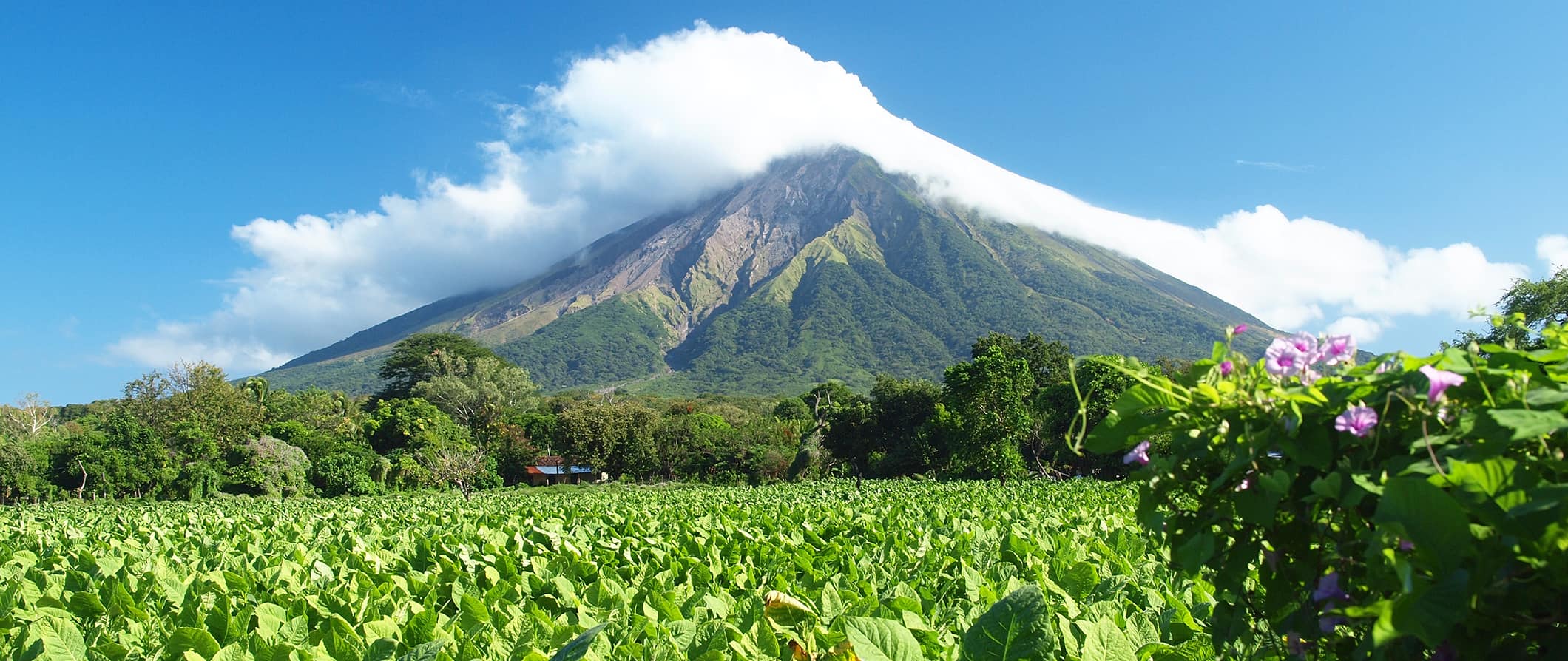
Known as the “Land of Lakes and Volcanoes,” Nicaragua is the largest country in Central America. Home to Lake Nicaragua (Central America’s largest lake), beautiful islands, expansive volcanic terrain, mangrove swamps, ethereal cloud forests, and tropical rainforests, Nicaragua is a stunning destination with tons of things to see and do — no matter your interests.
In fact, I loved my visit to Nicaragua so much I ended up extending my visit!
While Granada, León, and San Juan del Sur tend to pull in the crowds, if you leave the main southern cities and get a little off the tourist trail, you can discover even more varied landscapes, friendly locals, and little explored towns and national parks.
This travel guide to Nicaragua shows you how to visit on a budget, save money, and make the most of your trip.
Table of Contents
- Things to See and Do
- Typical Costs
- Suggested Budget
- Money-Saving Tips
- Where to Stay
- How to Get Around
- How to Stay Safe
- Best Places to Book Your Trip
- Related Blogs on Nicaragua
Top 5 Things to See and Do in Nicaragua
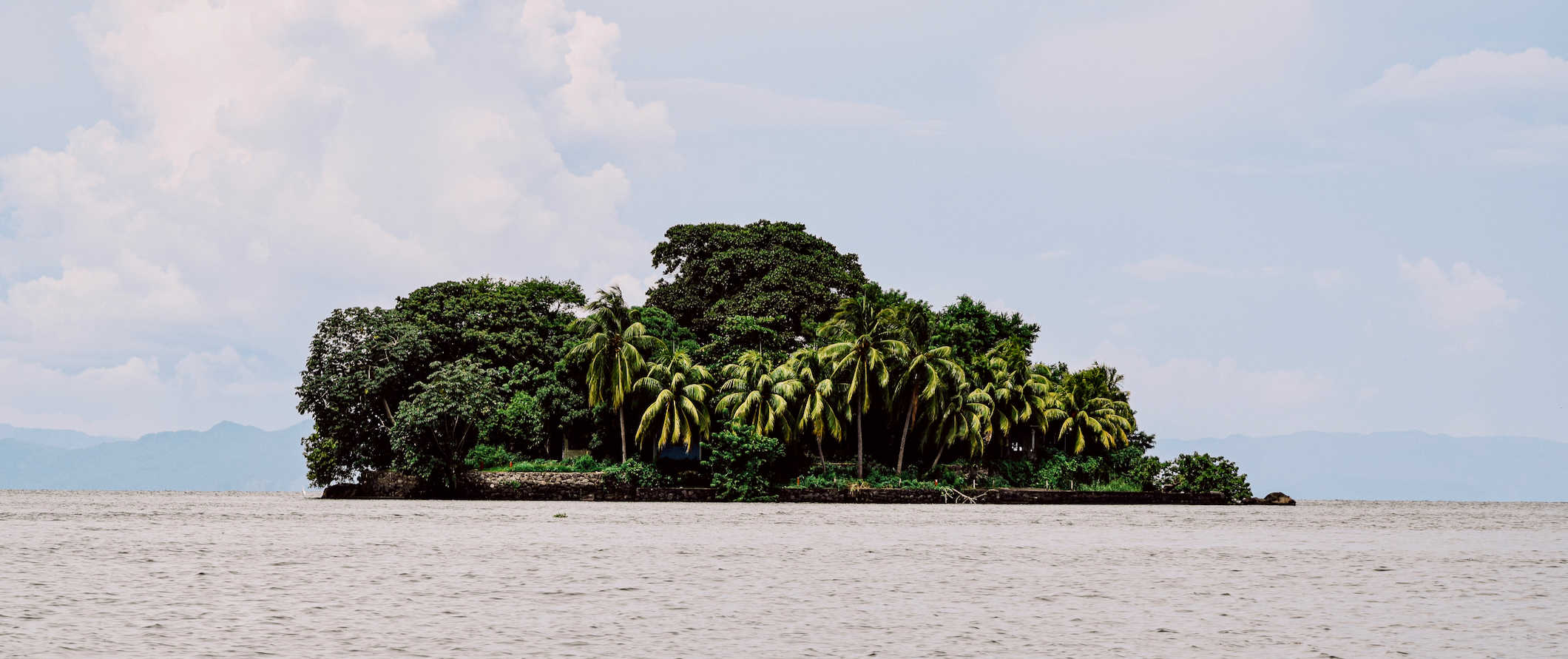
1. Visit Little Corn Island
This archipelago off the Caribbean coast is one of the best places to relax in the country. It boasts diving with hammerhead sharks and underwater caves, fresh seafood, and plenty of hammock downtime on deserted beaches (invest in a good hammock if you’re serious about your R&R). Don’t miss Otto’s Beach.
2. Relax in San Juan del Sur
This picturesque surfer paradise is fringed with prehistoric volcanic hills and was the first destination to put Nicaragua on the map. Backpackers flock here in droves to surf and party under the stars. It’s a must-visit destination in the country!
3. Admire colonial Granada
Nicaragua’s oldest city is revered as the colonial jewel of Central America. Many of the pastel-painted buildings have been meticulously restored. Bask in Granada’s historic grandeur as you weave through the cobblestone streets, visit local art galleries, and sip on a coffee in a plaza.
4. Tour León
From world-class museums, Central America’s largest cathedral, and other beautiful monuments to a lively party scene fueled by the ample student population, León is one of my favorite places in the country. Sample the best roadside quesillo and see the local artists who give the city its eccentric flavor.
5. Explore Ometepe Island
Spend your days hiking, kayaking, or cycling around the island, spotting howler monkeys and archeological ruins in the process. Two of the two volcanoes here (Concepción and Maderas) offer strenuous 8-10-hour hikes. Guides are mandatory and cost 530 NIO.
Other Things to See and Do in Nicaragua
1. hike miraflores.
Miraflores national park was the highlight of my entire trip. Located in Estelí in northern Nicaragua, this is a stunning cloud forest with rivers and waterfalls. You can take day-hikes or multiday treks to the park (the multiday trips enable you to stay with local host families in small communities) and there are also programs to help you learn to farm. The one-day trek that I did ran from 7am-4pm and cost 550 NIO which included two meals and a mandatory guide. An extra bonus that I loved is that all the money goes back into supporting the community and farmers.
2. Explore Rio San Juan
This river is a wonderful stopover for nature enthusiasts looking to go kayaking, fishing, and wildlife watching. Despite the surge in eco-tourism in the region, accommodation options are still no-frills and very low-key, with Wi-Fi and phone coverage being scarce. Most tours leave from San Carlos, which is located at the mouth of the river on Lake Nicaragua.
3. Hike a volcano
Nicaragua has 19 volcanos (9 of which are active). The two peaks on Ometepe –– Concepcion and Maderas –– are the two most popular day hikes in the country. Concepción, towering at 1,600 meters (5,249 feet) is a baking hot hike, so bring lots of sunblock and water. Maderas is easier but muddier, with a lake at the summit. Cerro Negro (near León) offers a comfortable sandy route from top to bottom and is also well-known for “volcano surfing.” Masaya Volcano is the most active volcano in Nicaragua and you can actually see the lava bubbling there (visits are limited to 10 minutes due to the fumes). For people wanting a challenge, try San Cristobal, Nicaragua’s highest volcano. If you’re hunting for scenic Insta-worthy views, hike to Telica (also within easy reach from León) for a spectacular sunset (you can actually camp at the top).
4. Relax at Lake Apoyo
Laguna de Apoyo is a breathtaking body of water that sits upon the Apoyo volcano crater near Granada. This 200-meter-deep lake is the perfect spot for swimming, kayaking, fishing, and sailing. Hostels offer day trips from Granada for around 300 NIO, which include a return shuttle and include use of another hostel’s facilities, kayaks, and tubes on the lagoon. You can also visit independently and stay overnight if you want a longer visit.
5. Tour a coffee plantation
Coffee is Nicaragua’s primary export and Jinotega, the misty and mountainous northern region, produces over 80% of the country’s output. You can organize a coffee tour in any of the eco-lodges/hostels dotted around the region. I particularly liked Eco Albergue La Fundadora. Even though I don’t drink coffee, it’s a fascinating and important industry in the country (and region) and worth learning about.
6. Relax at the Pearl Cays
The remote string of crescent-shaped playas that make up the Pearl Cays (pronounced “Pearl Keys”) offer some of the best Caribbean beaches in Nicaragua. Unfortunately, due to climate change, this stunning collection of white islands is steadily shrinking. Located near the Corn Islands, there are currently only 10 left from the original 18. Accommodation on the island is super exclusive and very pricey. However, day trips by shared speedboat can be easily arranged to make visits affordable. Private boats start from around 8,800 NIO and fit up to 10 people. Come here to snorkel, swim, and lounge away the day.
7. Visit the Bosawas Biosphere Reserve
Bosawas is the second-largest rainforest in the Western Hemisphere and is home to jaguars, tapirs, spider monkeys, harpy eagles, and more. A huge chunk of the country’s bird population — 600 out of 790 species — are located here, making it the prime spot for wildlife and bird watching. Multi-day trips, where you can truly immerse yourself in the wilderness, hike cloud forests, swim in waterfalls, and meet Mayangna and Miskito indigenous communities start at around 12,000 NIO per person.
8. Explore the Solentiname Archipelago
Isolated on the southwest tip of Lago de Nicaragua, the Solentiname Archipelago is a cluster of 36 islands revered for their pristine collections of primitive art, birdlife, and laid-back lifestyle. It’s best to base yourself in Mancarrón and organize day trips to other neighboring islands throughout your stay. It’s roughly a four-hour drive from Managua to San Carlos and then and then a two-hour boat ride to the dock in Mancarrón. There are no ATMs to be found on the islands so bring plenty of cash.
9. Shop at the Masaya Markets
Stock up on rum, coffee, hammocks, and ceramics at the Masaya Markets in Masaya National Park near Managua. Barter your way through the markets and soak up the colorful atmosphere. While there is a lot of tourist junk here, there are still plenty of artisanal handmade crafts as well. On Thursdays, a weekly ‘Night of Revelry’ features traditional dancing, local food, and music. The market is just thirty minutes from Managua.
10. Visit the stone carving hermit
Near Estelí in the north you can find Alberto the hermit. He’s been living here for almost 40 years, carving stone figures and sculptures in the jungle. He’s eccentric, kind, and incredibly knowledgeable about the flora and fauna in the region. Stop by to see his carvings and learn about his life in the jungle. Here’s a video of my visit .
11. Check out the Isletas de Granada
Southeast of the city of Granada in Lake Nicaragua, you can find the Isletas de Granada (Grenada Islets). There are around 365 of these volcanic islands, some of which are inhabited. A few have hotels on them or you can take a one-hour boat ride around them to admire their pristine beauty (it costs around 1,400 NIO for a boat that can take 8 people).
12. See Somoto Canyon
Dating back to the Miocene epoch (23-25 million years ago), Somoto Canyon is a relatively unexplored part of Nicaragua. Located near the border with Honduras, it was discovered by Czech and Nicaraguan scientists in 2004 and, since then, its spectacular walls and clear water have become a popular tourist destination. Activities here include hiking, boating, and scaling the canyon walls. The narrowest part of the canyon can only be reached by swimming or by tubing. Somoto Canyon Tours offers a variety of tours lasting from 3-6 hours with prices starting at 880 NIO.
13. Do a homestay/Learn Spanish
If you have a bit more time to spend in Nicaragua, there are lots of opportunities to volunteer, learn Spanish, and farm by taking part in a homestay (Estelí, Ometepe, and León are popular destinations for this). Hostels and tourist offices in any of the big cities can help you arrange it.
Nicaragua Travel Costs
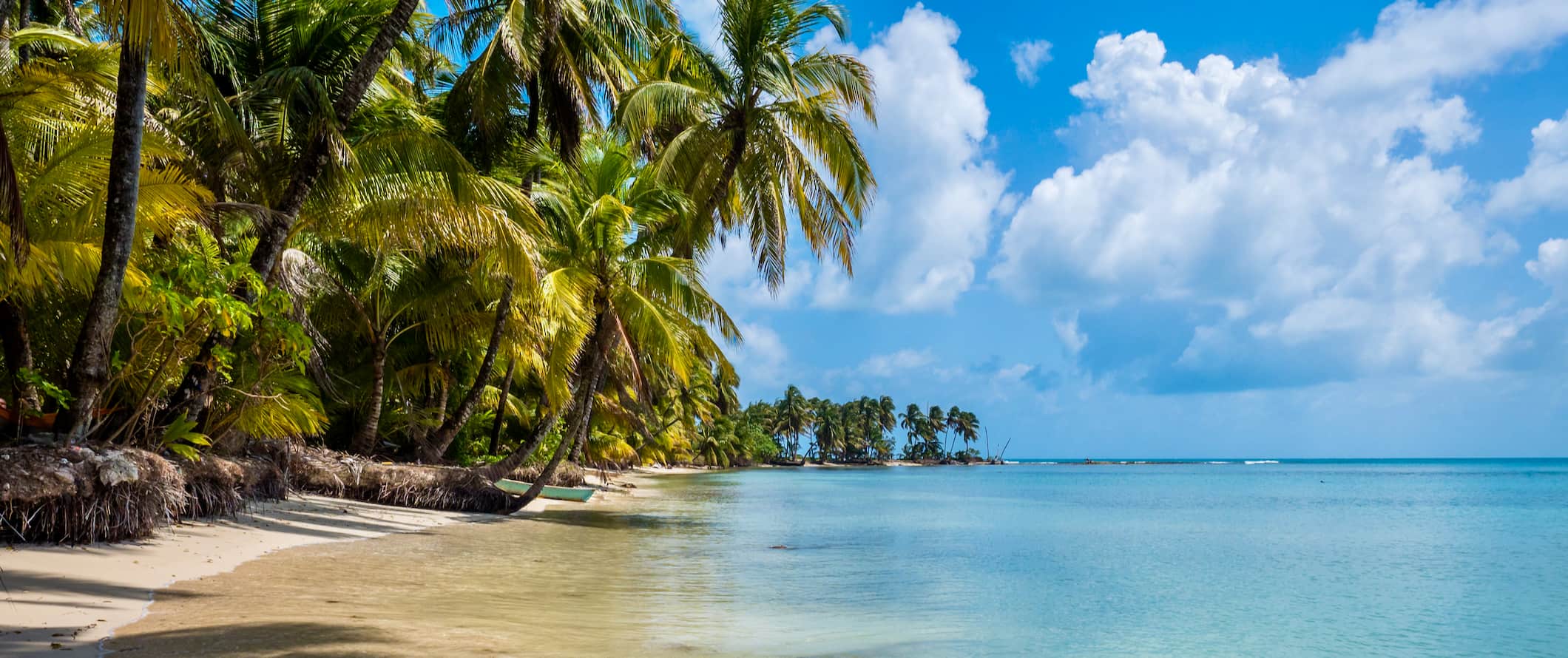
Accommodation – Small 6-8-bed dorms generally cost around 250-350 NIO per night, with private rooms costing between 700-1,700 NIO. Free Wi-Fi and free breakfast are common and many hostels also have a swimming pool.
For a budget two-star hotel, expect to pay between 1,000-2,600 NIO for a double room including breakfast. Expect basic amenities such as Wi-Fi, A/C, a TV, and sometimes a swimming pool.
Airbnb is available on Nicaragua’s Pacific coast as well as in Grenada and Managua (there are no rentals on the Atlantic side). You can score a great beachfront property from 2,800-4,200 NIO depending on group size and house style. For a private room, expect to pay at least 880 NIO per night.
Food – Beans, rice, and meat are the backbone of most meals in Nicaragua. Grilled chicken, pork, and beef are common options (especially for street food). Gallo pinto (fried rice and beans) is the go-to breakfast and dinner meal, with an egg often being added for the breakfast option. Be sure to try the popular quesillo , a tortilla wrapped around white cheese smothered cream, and nacatamales , a tamale made from maize dough stuffed with pork and potato.
A typical lunch, eaten in a comedor (local eatery serving tradition cuisine), or street stall costs between 100-175 NIO. Nicaraguans are more accustomed to dining out for lunch so travelers can expect to see fewer evening options available in non-touristy spots.
On the coast, seafood is the main staple so expect a lot of grilled fish. On the Caribbean side, the cuisine is heavily influenced by Caribbean culture as well.
A meal at a restaurant serving local cuisine costs around 345-520 NIO for a three-course meal with a drink.
The touristy towns and on the coast have more international cuisine options. Expect to pay 800-1,200 NIO for a three-course meal in a mid-range restaurant. A large pizza costs around 270-350 NIO. For fast food (think McDonald’s), expect to pay around 210 NIO for a meal.
A domestic beer or latte/cappuccino costs around 30-90 NIO.
If you’re buying a week’s worth of groceries, expect to pay between 1,100-1,300 NIO for basic staples like rice, beans, seasonal produce, and some meat or fish.
Backpacking Nicaragua Suggested Budgets
On a backpacking budget of 1,100 NIO per day, you can stay in a hostel dorm, use public transportation and chicken buses to get around, limit your drinking, cook all of your meals, and enjoy free and cheap activities like free walking tours and lounging on the beach.
On a mid-range budget of 2,800 NIO per day, you can stay in a private Airbnb or hostel room, eat out for most meals, enjoy a few drinks, take the occasional taxi or coach between cities, and do more paid activities like diving or guided day hikes.
On a “luxury” budget of 8,200 NIO per day or more, you can stay in a hotel, eat out anywhere you want, drink as much as you’d like take domestic flights to get around, and do whatever tours and activities you want. This is just the ground floor for luxury though. The sky is the limit!
You can use the chart below to get some idea of how much you need to budget daily, depending on your travel style. Keep in mind these are daily averages — some days you’ll spend more, some days you’ll spend less (you might spend less every day). We just want to give you a general idea of how to make your budget. Prices are in NIO.
Nicaragua Travel Guide: Money-Saving Tips
Nicaragua is one of the cheaper countries in the region but prices are rising quickly as it becomes more of the “it spot” to retire and work remotely from. Here are some of the best ways to save money during your trip:
- Take the chicken bus – Chicken buses (crowded local buses that make multiple stops) are the cheapest way to travel. You can save big time if you’re willing to trade A/C and cushioned seating to travel on a decommissioned school bus for a few hours. For example, the 3.5-hour trip from Granada to Rivas costs just 70 NIO!
- Refill your water bottle – The tap water here is not safe to drink so make sure you have a reusable bottle with you. To stay safe, bring a water filter like LifeStraw to ensure your water is clean and safe!
- Use the right currency – Pay with US dollars in bigger cities and save your córdobas for purchases at small businesses in rural areas and villages since they won’t have change for larger USD bills.
- Bring cash – Cards are accepted in major establishments and big cities. However, electricity can be fickle on the coast so it’s best to carry plenty of cash in case you’re caught out in a blackout.
- Learn some Spanish – Inflated tourist prices are common here. To avoid getting overcharged, learn some Spanish. Even just a few words and phrases can help you avoid being overcharged.
- Travel during the shoulder season – Prices are highest during the dry months (December-April). To avoid the crowds and save money, travel during the rainy season or shoulder season. You might get rained on, however, accommodation and activities are cheaper.
- Choose less-traveled routes – Prices for activities and accommodation plummet when you leave the tourist triangle (Granada, León, and San Juan del Sur). Nicaragua is the largest country in Central America so don’t be afraid to think outside the box and venture off the beaten path.
- Share private taxis – If you’re traveling in a small group, a taxi can often work out cheaper and more time-efficient than a bus or shuttle. Negotiate the price beforehand and ask your hostel for the normal rates so you have a reference.
Where to Stay in Nicaragua
If you’re looking for places to stay during your visit, here are some of my favorites:
- Hola Ola Hostel (San Juan del Sur)
- Viavia Leon (León)
- De Boca en Boca (Granada)
- Managua Backpackers Inn (Managua)
How to Get Around Nicaragua
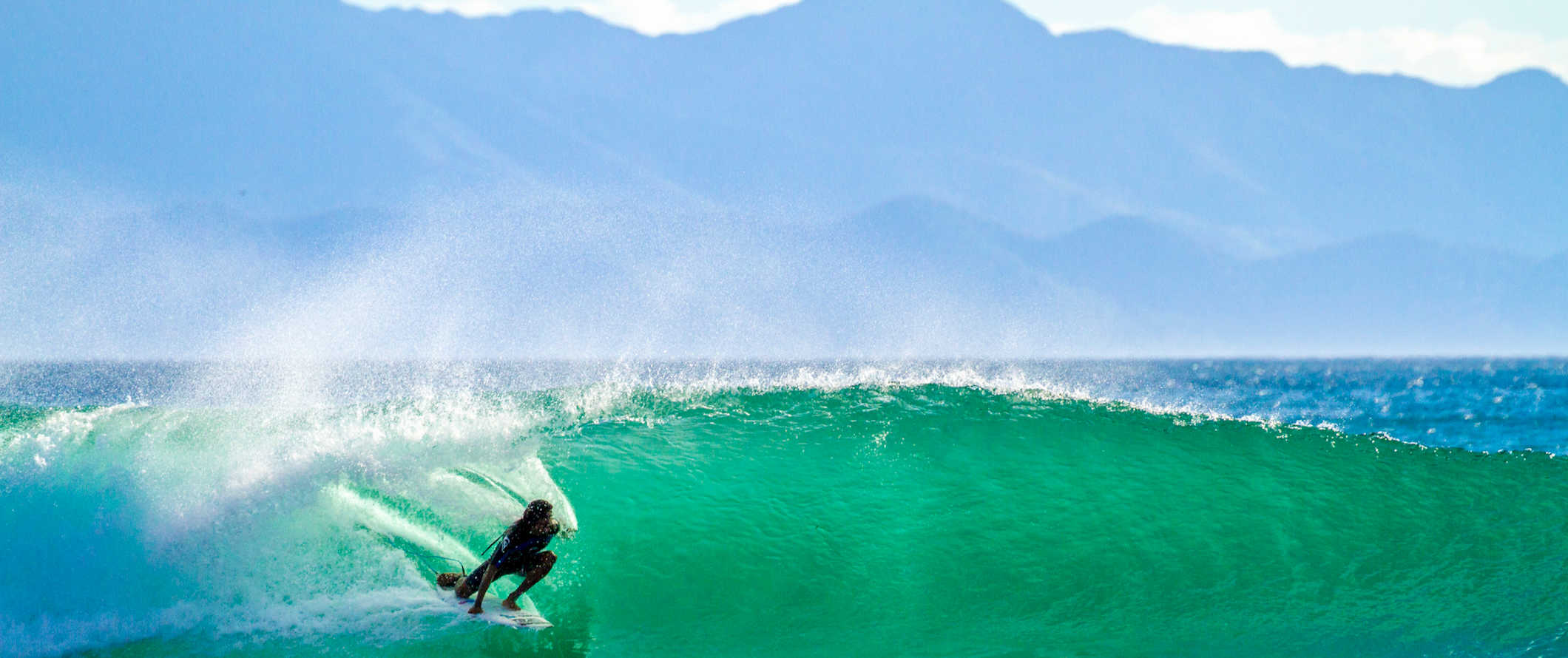
Bus – Chicken buses (i.e. converted school buses) are the cheapest way to get around. They are slow and stop often but have dirt cheap prices (around 35 NIO per hour of travel).
If you’re looking for a more comfortable journey, book with a coach company or private mini-shuttle, the latter of which are air-conditioned with cushioned seating and have storage room for your luggage.
For private mini-shuttles, expect to pay between 880-1,750 NIO per trip, however, you can try and buddy up with other hostel guests to drive down the price since it’s a private booking.
Most of the large cities have public transportation with local bus tickets costing under 6 NIO.
Air – La Costeña, Nicaragua’s domestic carrier, is based out of Managua and serves most of the country. Even if you’re keeping spending to a minimum, you have to take a flight if you want to visit the Corn Islands. Return tickets from Managua to the Corn Islands cost 5,700 NIO. For the 2.5-hour flight from Managua to Bluefields, expect to pay at least 4,500 NIO.
Train – There are no trains in Nicaragua.
Car Rental – A 4WD is recommended if you’re planning to visit rural areas as the roads here can be rough. Prices start from around 1,400 NIO per day for a multi-day rental. You’ll need an International Driving Permit (IDP) and you’ll definitely want to have extra insurance too.
When to Go to Nicaragua
There are two distinct seasons in Nicaragua: the dry season, which falls between November-April, and the green (rainy) season which is from May-October.
To avoid the crowds and peak prices, visit during the rainy season. The rainier months also offer ideal surfing conditions and deserted beaches to enjoy the waves. Just keep in mind the Caribbean coast sees more rain than the Pacific. Expect daily highs around 30°C (86°F).
The San Sebastian festival in Diriamba runs between January 17th-27th and is an amazing way to celebrate a local fiesta, with colorful parades, traditional music, and street-side buffets filling up every corner.
Easter (Semana Santa) is when you can find most locals hitting the mountains or beaches with family and friends. Buses and hotels, particularly on the coast, fill up fast so be sure to book in advance if you’re visiting during this time. Note that cities are much quieter during this period and many local businesses adapt their opening times/hours and events to celebrate the religious holiday.
How to Stay Safe in Nicaragua
Nicaragua is one of the safest countries in Central America, though petty theft and robberies are still relatively common. For that reason, keep your belongings secure and out of sight at all times — especially on crowded public transportation.
Solo female travelers should feel safe here when out during the day, however, they will want to avoid traveling alone after dark. Additionally, the usually standard precautions apply here as well (always keeping an eye on your drink at the bar, never walking home alone intoxicated, etc.).
If you rent a car, don’t leave any valuables in it overnight, and make sure to have suitable insurance just in case as break-ins can occur.
Scams are rare here, but they do happen. Be wary of random strangers asking for medicine or other financial assistance. Just politely decline and be on your way. You can read about common scams to avoid here .
Inflated tourist prices are common in Nicaragua. To avoid getting overcharged, learn some Spanish. Even just a few words and phrases can help you avoid being overcharged
Many people come to Nicaragua to party as drugs and alcohol are both cheap and abundant. However, the fines and penalties for drug use are steep. Police often expect bribes that can cost of hundreds — if not thousands — of dollars. Police won’t hesitate to strip search you if they suspect narcotics so avoid using drugs here to stay safe.
Moreover, the drug trade contributes to deaths, instability, and unrest in the region. Don’t contribute to that.
Protests and clashes in the major cities aren’t uncommon. Should a protest occur during your visit, avoid the area and return to your accommodation. While you’re unlikely to be hurt, it’s better to be safe than sorry.
As always, keep your wits about you at night time, particularly in the capital. Ask your hotel to call you a taxi in Managua (always negotiate the price before getting in the car), which can be an intimidating spot for travelers due to the lack of road names, tourists, and landmarks.
If you experience an emergency, dial 118 for assistance.
Always trust your gut instinct. Avoid isolated areas at night, and be aware of your surroundings at all times. Make copies of your personal documents, including your passport and ID, before you leave on your trip.
If you wouldn’t do it at home, don’t do it in Nicaragua!
The most important piece of advice I can offer is to purchase good travel insurance. Travel insurance protects you against illness, injury, theft, and cancellations. It’s comprehensive protection in case anything goes wrong. I never go on a trip without it as I’ve had to use it many times in the past.
Nicaragua Travel Guide: The Best Booking Resources
These are my favorite companies to use when I travel. They consistently have the best deals, offer world-class customer service and great value, and overall, are better than their competitors. They are the companies I use the most and are always the starting point in my search for travel deals.
- Skyscanner – Skyscanner is my favorite flight search engine. They search small websites and budget airlines that larger search sites tend to miss. They are hands down the number one place to start.
- Hostelworld – This is the best hostel accommodation site out there with the largest inventory, best search interface, and widest availability.
- Booking.com – The best all around booking site that constantly provides the cheapest and lowest rates. They have the widest selection of budget accommodation. In all my tests, they’ve always had the cheapest rates out of all the booking websites.
- Get Your Guide – Get Your Guide is a huge online marketplace for tours and excursions. They have tons of tour options available in cities all around the world, including everything from cooking classes, walking tours, street art lessons, and more!
- SafetyWing – Safety Wing offers convenient and affordable plans tailored to digital nomads and long-term travelers. They have cheap monthly plans, great customer service, and an easy-to-use claims process that makes it perfect for those on the road.
- LifeStraw – My go-to company for reusable water bottles with built-in filters so you can ensure your drinking water is always clean and safe.
- Unbound Merino – They make lightweight, durable, easy-to-clean travel clothing.
- Top Travel Credit Cards – Points are the best way to cut down travel expenses. Here’s my favorite point earning credit cards so you can get free travel!
Nicaragua Travel Guide: Related Articles
Want more info? Check out all the articles I’ve written on backpacking/traveling Central America and continue planning your trip:

Do You Need Travel Insurance for Costa Rica?

The Best Tour Companies in Costa Rica
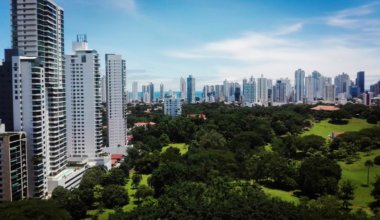
The 6 Best Hostels in Panama City, Panama
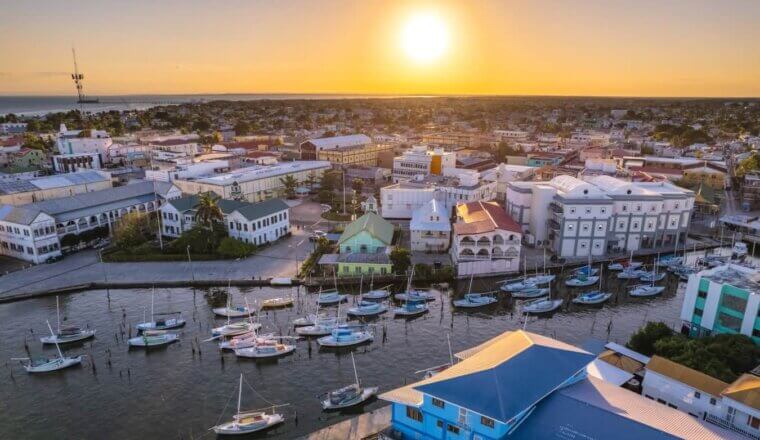
Is Belize Safe to Visit?

Is Central America Safe to Visit?
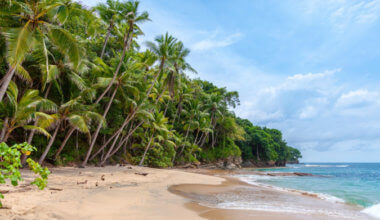
How to Get Around Central America on a Budget
Get your free travel starter kit.
Enter your email and get planning cheatsheets including a step by step checklist, packing list, tips cheat sheet, and more so you can plan like a pro!

- Where To Stay
- Transportation
- Booking Resources
- Related Blogs

Security Alert May 17, 2024
Worldwide caution, update may 10, 2024, information for u.s. citizens in the middle east.
- Travel Advisories |
- Contact Us |
- MyTravelGov |
Find U.S. Embassies & Consulates
Travel.state.gov, congressional liaison, special issuance agency, u.s. passports, international travel, intercountry adoption, international parental child abduction, records and authentications, popular links, travel advisories, mytravelgov, stay connected, legal resources, legal information, info for u.s. law enforcement, replace or certify documents.
Share this page:
Nicaragua Travel Advisory
Travel advisory january 11, 2024, nicaragua - level 3: reconsider travel.
Reissued with updates to information on arbitrary enforcement of laws.
Reconsider travel to Nicaragua due to arbitrary enforcement of laws, the risk of wrongful detention, and limited healthcare availability . Exercise increased caution in Nicaragua due to crime.
Country Summary : Throughout Nicaragua, government and law enforcement officials continue to target individuals and organizations seen as opponents of President Daniel Ortega and his wife, Vice President Rosario Murillo. U.S. citizens, including dual Nicaraguan-U.S. citizens, have been subject to revocation of Nicaraguan citizenship, reentry bans, expulsion, and other actions. The government and its affiliated groups have been reported to:
- Arbitrarily prevent individuals from entering or departing Nicaragua by air or land for perceived associations.
- Search personal phones, computers, and documents for anti-government content, limit photography of government property, and sometimes seize devices.
- Systematically target individuals for political reasons, regardless of nationality, including former allies, political activists, business representatives, clergy, human rights advocates, civil society leaders, academics, and members of the press.
- Arbitrarily target pro-democracy advocates and their family members.
- Confiscate privately-owned land, residences, financial assets, and personal property without warning or due process.
- Arbitrarily detain, accuse, and charge individuals with terrorism, money laundering, and organized crime offenses for political reasons without respect for fair trial guarantees.
U.S. citizen residents of Nicaragua also report increased scrutiny of alleged political speech.
U.S. citizens arrested in Nicaragua may find themselves subject to prolonged detention without charges or respect of fair trial guarantees. The judicial process lacks transparency, especially in politically motivated arrests and property dispute cases. Political influence and pressure may influence the outcome of legal proceedings.
The Department has determined the risk of wrongful detention of U.S. nationals by the Government of Nicaragua exists.
Travelers should exercise increased caution and be alert to the risks of crime, including violent crimes such as sexual assault and armed robbery.
Poor infrastructure in parts of the country limits the Embassy’s ability to assist U.S. citizens in emergencies. U.S. government personnel under Chief of Mission security responsibility may be subject to restrictions on their movements at any time.
Read the country information page for additional information on travel to Nicaragua.
If you decide to travel to Nicaragua:
- Consider arrangements to depart the country quickly.
- Ensure your U.S. passport is valid and available for a quick departure from the country, if needed.
- Avoid demonstrations and restrict unnecessary travel.
- Do not attempt to drive through crowds, barricades, or roadblocks.
- Maintain adequate supplies of food, cash, potable water, and fuel in case you need to shelter in place.
- Use caution when walking or driving at night.
- Keep a low profile.
- Do not display signs of wealth such as expensive watches or jewelry.
- Be aware of your surroundings.
- Visit our website for Travel to High-Risk Areas .
- Enroll in the Smart Traveler Enrollment Program ( STEP ) to receive Alerts and make it easier to locate you in an emergency.
- Follow the Department of State on Facebook and Twitter .
- Review the Country Security Report for Nicaragua.
- Prepare a contingency plan for emergency situations. Review the Traveler’s Checklist .
- Visit the CDC page for the latest Travel Health Information related to your travel.
Travel Advisory Levels
Assistance for u.s. citizens, nicaragua map, search for travel advisories, external link.
You are about to leave travel.state.gov for an external website that is not maintained by the U.S. Department of State.
Links to external websites are provided as a convenience and should not be construed as an endorsement by the U.S. Department of State of the views or products contained therein. If you wish to remain on travel.state.gov, click the "cancel" message.
You are about to visit:
Nicaragua Travel Itinerary | 7 or 10 Days of Great Things to Do
Last year I jumped on a great airfare deal and booked a trip that followed this two-week Nicaragua itinerary. Starting in Granada, I explored Nicaragua’s colonial heritage before heading south to the beaches of San Juan del Sur (surf paradise) and then traveling back inland to the magical, volcanic Ometepe Island in the middle of Lake Nicaragua. Along the way I ate delicious food, relaxed on spectacular beaches and yes, saw more monkeys than I could count!
Personally, as I discuss in depth below, I feel that Nicaragua is a safe travel destination that is absolutely worth visiting. With most of the (infrequent) political protests occurring in the capital city, I set out to write two Nicaragua travel itineraries that skirt the capital – one seven-day Nicaragua itinerary that focuses on colonial Granada and Pacific San Juan del Sur, with a quick overnight stop on the shores of a volcanic lagoon, and a second ten-day Nicaragua itinerary that adds in a two-night stop on breathtaking Ometepe Island.
If you’ve been thinking of traveling to Nicaragua, I recommend that you consider following one of these two routes. They’re safe, they’re easy and they are so beautiful that, like me, you’ll be talking about them for years to come!
Nicaragua Itinerary Day 1 | Arrival in Managua
I didn’t actually venture into Managua, Nicaragua . With less than two weeks to see the country, I wanted to focus more on its natural beauty than its urban environments, so I made plans to travel directly from the Managua airport to Granada, Nicaragua. I booked a scheduled shuttle service with Adelante Express , which also offers private shuttle service from Managua to Granada and San Juan del Sur. Since I was the only passenger on the scheduled shuttle, I ended up getting a private transfer for less than $20 USD. The distance is quite short (less than fifty kilometers) but the trip can take up to 75 minutes due to slow-moving traffic, and I was glad to be in an air-conditioned vehicle for the trip.
I’ve heard that there are shuttles leaving from the Managua airport that don’t require a reservation, but nobody offered me one when I arrived and I didn’t see any signage for shared transportation. If you’re on a very tight budget, you can take a public bus from the airport to Managua’s busy bus station, and then transfer to a public intercity bus to Granada. This will probably take about two and a half hours, since buses make frequent stops along the way, and there won’t be much room for your luggage.
Nicaragua Itinerary Day 2 – 3 | Granada
Granada is a charming colonial town situated on the banks of Lake Nicaragua, in the shadow of the Mombacho Volcano. You can easily explore the city center by foot in a day, but there are also some interesting excursions that made it worthwhile to include a second day in Granada in your Nicaragua itinerary.
Where to Stay in Granada

When I was in Granada, I stayed at Hotel Guardabarranco , a quaint, family-run hotel about four blocks from the city center. Hotel Guardabarranco is built in the traditional local style, with rooms on two floors around an open courtyard (where you’ll find a refreshing little pool, the breakfast area and a small lounge). They aren’t currently taking new bookings, but similar properties nearby include El Arca de Noe and Hotel Plaza Colon .
If you’re doing your Nicaragua travel on a tighter budget I can recommend Hostal Azul in Granada. Also built around a courtyard, but with a more rustic and outdoorsy feel, Hostal Azul has a good mix of super-cheap dorm rooms and reasonably-priced private rooms (including one double with a private bathroom). The staff at the hostel were so friendly and invited me to join in a few of their social events, even though I wasn’t a guest! The popular Selina chain of hostels has also opened Selina Granada , complete with a hostel swimming pool.
Things to Do in Granada, Nicaragua

Spend your first day in Granada simply wandering around the colonial city center, taking in the different districts, the colorful architecture and the touches of traditional Central American lifestyle. You’ll probably want to start your wandering at the Central Plaza (shown above) where the bright yellow cathedral will immediately catch your eye. You’ll also notice that each corner of the plaza is marked by a stall selling vigoron , a local specialty made from cassava, pork rinds, pickled cabbage and hot chiles. As a vegetarian I kept a very wide berth, but locals swear by this “unique” concoction!

There are other beautiful public buildings on the streets around the Central Plaza. The stairs in front of the bright white San Francisco Church are a popular hangout place for local teenagers and young adults, and I often grabbed a smoothie from one of the nearby cafes to enjoy on the stairs (with a little side of people-watching).

Beside the San Francisco Church you’ll find the San Francisco Convent Cultural Center , a miniature museum and garden highlighting the ethnic, cultural and artistic heritage of the region, along with rotating feature exhibits. There are lovely views from the gardens inside, and the exhibits are worth a quick peek.

You’ll also want to spend an hour or so wandering around the Municipal Market ( Mercado Municipal ) , a sprawling market where you can buy everything from souvenirs to fresh produce to housewares to clothing. I’d heard that the streets around the market were popular with pickpockets, but I felt safe as I weaved between the stalls and checked out the goods for sale.

From the city center it’s quite easy to walk down to the shores of Lake Nicaragua (and you’ll pass the moody Guadalupe Church , shown above) but there isn’t much to see at the shore right in town. Instead of walking down to the lake, I’d recommend that you speak to your hotel or hostel about joining a boat trip around the Isletas , or little islands, where you’ll likely be able to spot all different kinds of birds (and maybe even some monkeys too!). Most tour operators include return transportation to and from your hotel in the price.

A second day in Granada gives you enough time to explore some of the attractions outside of the city. Masaya is a small city about twenty kilometers west of Granada (in fact, you might have passed it on your way in from the airport). Most buses to Granada will stop at the turn-off from the highway to Masaya’s city center, and there are also dedicated public buses that run right into town. Masaya isn’t particularly interesting or picturesque, but it’s one of the best places in the country for tourists who want to buy arts, crafts and souvenirs during their Nicaragua travel. The Mercado de Artesanías (Cultural Center Old Craft Market) is jam-packed with vendors selling clothing, housewares, art and even food items. It’s definitely touristy, so only visit if you’re specifically on the hunt for souvenirs.
Photo via Yellow Magpie on Flickr .

Later in the day, talk to your hotel about joining an evening tour to the Masaya Volcano . You want to arrive around sundown, as the views of the active lava flows inside the volcano are much more powerful in the dark of the night. (I’ve heard you can also visit right before sunrise, but… are you crazy? ) After waiting in a queue along the highway, your car will eventually be allowed into the park. On your way up the hill you can stop at a small volcano museum (there’s a clean toilet inside!) before driving the last stretch up to the viewing platform. You can spend about twenty or thirty minutes at the top before being asked to leave so that the next visitors can enjoy the natural show too.
Recommended Restaurants in Granada, Nicaragua
- The Garden Cafe – Healthy, locally-inspired cuisine in a pretty garden atmosphere. Prices are a bit high, but the menu is expansive and flavorful. Make sure to check out their lovely gift shop and bring a book to swap at their book exchange.
- Nectar – On the main tourist street, this isn’t your typical tourist restaurant. They’ve got lots of vegetarian options, along with the city’s best fish tacos (apparently – I’m a vegetarian!) and even kombucha!
- Wok & Roll Granada – You don’t necessarily come to Nicaragua for stir-fry, but Wok & Roll had a lovely second-floor patio and lots of different stir-fry options. Prepare to be flexible as not everything on the menu will be available.
- Kathy’s Waffle House – I didn’t actually eat here because my hotel ( Hotel Guardabarranco , just around the corner) had a lovely breakfast, and I was never nearby at lunch. However, I smelled the waffles here every morning when I walked by, and I’m still kicking myself for not having a second breakfast one morning!
Nicaragua Itinerary Day 4 | Laguna de Apoyo

Laguna de Apoyo is a natural volcanic lake that straddles the border between Granada and Masaya. The lake itself is a little more than six kilometers across, and it reaches depths of up to 175 meters at its center. The lake is ideal for swimming, kayaking, bird watching and even scuba diving, and if you’re on the shorter itinerary (seven days, rather than ten) this is an easy way to take in some of Nicaragua’s natural splendor without making the boat trip all the way to Ometepe Island.
There are no regular buses from Granada to the shores of Laguna de Apoyo . Instead, buses drop you off at the exit from the main highway, and you’ll have to wait for one of the infrequent passing taxis to take you the last seven kilometers to the beach clubs (I use that term in the most zen way possible – there’s no pumping techno music here!) and hotels on the lake’s far west shore. Since that is quite inconvenient (especially with luggage) I suggest asking your accommodation (at either end) to organize a direct private transfer. I do recommend that you stay by the lake for one night, as it’s a truly magical place in the quiet of the evening. A few accommodation options include:
- Casa Marimba – North of the main road, the menu at this eco-lodge is vegetarian by default (with meat on request) and there are on-site yoga and massage services.
- Casa Bella – A lovely bed and breakfast surrounded by dense foliage, this is a great place to stay if you’re hoping to see a howler monkey in the trees outside your room!
- San Simian Lodge – Consisting of rustic bungalows spread throughout a lush garden, this is an affordable option for travelers who want to become one with nature, as the private bathrooms are located in the great outdoors!
Nicaragua Itinerary Day 5 – 6 | San Juan del Sur
On the wild Pacific Coast, San Juan del Sur is a classic beach town that transitioned from being a small fishing village to becoming an international surfing hot spot (much like Sayulita, Mexico ). Today, San Juan del Sur has a thriving young expat community that works with locals to make this one of Central America’s most exciting destinations. There are frequent private shuttles and public buses between Granada and San Juan del Sur (though if you’re coming from Laguna de Apoyo you’ll need to backtrack to Granada to catch one).

Where to Stay in San Juan del Sur
Personally, if I was to return to San Juan del Sur, I would first try to get a room at Casa Oro Eco Hostel . I visited Casa Ora several times, and thought it seemed like an awesome spot for solo travelers. They had a spacious lobby and bar, organized lots of different activities, and coordinated transportation all over the region. While they do have cheap dorm rooms, the private rooms are also very affordably priced. As a weird bonus (for me…) there were like, six laundromats on the next street over and I found great same-day laundry service!
For a private room at hostel prices, Estrella Beachfront Hotel is a solid option. The rooms here are simple but very large, and most have doors that open onto a terrace with breathtaking beach views. Take note that bathrooms here are shared! The Estrella Beachfront Hotel is only about twenty meters from the beach, so it’s a great choice for surfers and sunbathers.
Like in Granada, Selina has also opened a location in San Juan del Sur. Take note, though, Selina Maderas is about twenty minutes outside town (by car) and a fifteen-minute walk from Maderas Beach. They cater to digital nomads here, though, so there’s good WiFi, a comfortable work space and a nice pool.
Things to Do in San Juan del Sur

Towering above San Juan del Sur, and not shown in any photos because I was looking down, not up, there is a giant statue of Jesus Christ . Standing about 135 meters tall, the statue is surrounded by a viewing platform that is perfect for watching the sun set over the Pacific Coast. From the beach, it takes about an hour to hike up (so give yourself lots of extra time if you’re coming from town) and it costs about $2 USD to enter (the guards never have change, so don’t bring a $50 bill!).

The best surfing in San Juan del Sur is at the many beaches that dot the coastline north and south of town. Any surf shop in town can arrange equipment rental and transportation to and from these beaches, along with a lesson if required. Since I was staying in a rented room behind a surf shop, I rounded up a few travel friends and tagged along on one of their trips to Playa Maderas , a small, rugged beach with a protected cove that is great for new surfers and even just for floating around in the water. Moke Huhu Surf Shop had a little stand set up at the beach with hammocks, sun chairs and coolers for drinks, and it looked like other surf shops were also working to expand the infrastructure here. There was also a restaurant near the main entrance that served up a great plate of vegetarian nachos (more than enough for two people for lunch!).

Where Playa Maderas is small and rugged, Playa Hermosa is a never-ending stretch of soft white sand, backed by a lush tropical rainforest… and owned and operated by a private hotel. There are lots of thatched huts with beach chairs and sun loungers available for day use visitors, clean bathrooms are available on site, and there are restaurants and beach bars where you can grab lunch, beer, cocktails or a fruit smoothie.
Playa Hermosa is beautiful but it has several flaws. During high season this “eco-lodge” packs in hundreds of partiers from organized group tours, blasts music at an appalling volume (including songs with language that is definitely not PG-13!) and serves thousands of cheap drinks out of plastic cups, that end up being thrown all over the sand (how is that an eco-lodge?). As well, their shuttle service is completely unreliable, so you do need to organize your own transportation, which can be difficult as the road to the beach is not popular with local drivers. I’d recommend a visit during the shoulder season with your own pre-arranged transportation (and probably not your own personal rental car). You can also stay overnight here, but based on my experiences I wouldn’t recommend it.

San Juan del Sur is a cool little beach town, much like San Pancho or Sayulita in Mexico. Even if you make two day trips from the city (one two Playa Maderas and one to Playa Hermosa, for example) you’ll still have two mornings or evenings free to explore the city center. Expect to find lots of independent boutiques selling trendy beachwear, street vendors selling souvenirs, fruits and vegetables, and a thriving restaurant and bar scene.
Recommended Restaurants in San Juan del Sur, Nicaragua
- Barrio Cafe – Probably the best breakfast I had in Nicaragua, you’ve got to check out the huevos rancheros at Barrio Cafe. Since my guesthouse didn’t include breakfast, I came here twice for the iconic breakfast dish, served in a deep dish of spicy salsa and topped with crispy tortilla strips.
- Dale Pues – Dale Pues was super-close to my guesthouse, so I also ended up eating here twice. On my first visit I had a breakfast sandwich, which was great, and then I returned late for a veggie burger. Both meals were good, and the top-floor seats overlooking the street below are great for people-watching.
- Simon Says – With a hidden back garden, this healthy smoothie shop is great for breakfast for a light lunch. Ask for their recommendation as to the freshest, most in-season fruits for your smoothie, and if you’re really hungry, order one of their famous salads or sandwiches as well.
- San Juan del Sur Cerveceria – Also known as Nicaragua Craft Beer, this locally-owned brewery features their own craft beers on tap (yay for happy hour!) and has a short menu of fun bar food (including vegetarian options).
Nicaragua Itinerary Day 7 | Return to Managua OR Travel to Ometepe Island
If you’ve only got a week, it’s time to start heading back to Managua . Your travel options include public bus (cheap at about $5, but slow and a little uncomfortable, the public bus will drop you off at the main bus station in Managua), shared shuttle (usually door-to-door service, but more expensive at about $50) or a private transfer (which could easily cost upwards of $100). I had an overnight wait before my early morning flight, so I booked at a room at the Camino Real Managua . It’s a little pricey, but it’s clean and comfortable, with a nice swimming pool and complimentary airport shuttle.
However, if you’ve got more time, it’s time to start making the epic journey towards Ometepe Island . I have an Ometepe Island Travel Guide in another post, but I’ll focus on two days’ worth of highlights here.
To get to Ometepe Island from San Juan del Sur, you have the same three options as above. You can take a public bus, but it will only take you as far as Rivas. From there, you’ll need to take a second bus or taxi to the port of San Jorge. I’d recommend the second option – one of the shared shuttles that leave once or twice daily from San Juan del Sur and take you all the way to the San Jorge port for about $25. The last option, a private taxi to the port, would cost about $50 or $60. If your hotel can’t help you with the transportation, ask at reception at the Casa Oro Eco Hostel in SJDS.

At the port, you can purchase your ticket for the next available boat. There are two types of boats – larger ferries and smaller lanchas . Generally speaking, the ferries are considered to be safer and faster, and it’s worth a short wait for the next ferry if you’re the kind of traveler who notice safety hazards everywhere! The trip across will take between sixty and ninety minutes, and there is a chance your bag will get wet if you’re on a lancha and your bag is stored underneath (yet another reason to wait for the ferry!).
Nicaragua Itinerary Day 8 – 9 | Ometepe Island
Ometepe Island , or Isla de Ometepe, is a volcanic island situated in the middle of Lake Nicaragua. The island is made from two volcanoes ( Volcan Maderas and Volcan Concepcion ) that are joined by a narrow strip of land. As such, nearly all of life on Ometepe Island takes places along the island shores, which are ideal for nature-lovers of every budget and activity level.

Where to Stay on Ometepe Island
There’s a good chance that your ferry or lancha will dock in Moyogalpa, on the north end of the island. However, I suggest that for a ten-day Nicaragua travel itinerary, you skip Moyogalpa and head directly to Balgue , which is just southeast of the isthmus.

In Balgue, I stayed at La Urraca Loca Hostel. This is a lovely, European-run hostel with a small dorm room on the ground floor and two private double rooms on the upper level. The shared washroom is downstairs and somewhat outdoors, so be prepared to brush your teeth with the butterflies! The owners at La Urraca Loca can help you organize all sorts of different activities during your stay on Ometepe Island, and their homemade vegetarian breakfast is absolutely delicious!
If La Urraca Loca is full during your stay, look into a stay at Hotel Finca Magdalena , a working coffee plantation just up the hill behind La Urraca Loca, or try Ananda Guesthouse , an off-grid guesthouse where the three private rooms offer private bathrooms and views of the volcano or lake.
Things to Do on Ometepe Island

I have a huge post about all of the amazing adventure travel activities that you can do on Ometepe Island , so click on on over for more information about everything from kayaking volcanoes to kayaking with caimans.
Generally, I would recommend one day of strenuous active sightseeing. This could mean climbing one of the volcanoes (which is seriously strenuous) or just hiking up to the San Ramon waterfall . You can read about both of those on the post linked above, and the staff at La Urraca Loca hostel can help you book both trips.

On your second day, take things a little bit easier . You could do a tour of the island (transportation options include private taxi, ATV rental or just hopping on the back of a “scooter taxi!”) with a short stop for kayaking and looking for monkeys on the Rio Istan, or you could walk into the field behind the La Urraca Loca Hostel and up the hill to the coffee plantation, passing petroglyphs along the way.

For something completely relaxing, travel nine kilometers up the road from Balgue to the Ojo de Agua , a natural swimming hole that is popular with locals and tourists. It tends to fill up on weekends and holidays, so if you can visit on a weekday, go for it! Admission costs $3 and there are lots of chairs, tables and picnic areas where you can relax between dips in the refreshing water. There are also some hiking trails that looked quite interesting, though I only made it about half a kilometer in before I had to rush back to catch my ride.
Recommended Restaurants on Ometepe Island

- Nectar – The second Nectar I’ve recommended in this post (the first was back in Granada!), Nectar Cafe is located just down the road from Balgue, in Santa Cruz. This is basically a little shack beside the road with four tables under a palapa, but guys, the food here is amazing! I had the vegetarian curry, which was packed with flavor and served with rice, tortillas and a fresh salad. Highly recommended!
- Cafe Campestre – A happening spot in Balgue, Cafe Campestre has lively live music, amazing food (like my pesto pasta dish, that used fresh peanuts in place of the pine nuts) and abysmal service. Bring a book, and probably your own utensils too.
- El Pital – Chocoholic? Don’t miss a quick stop at El Pital, a beachfront chocolate factory, “superfoods magic cafe” and even hostel. You’ve got to see their “magic balls” (basically, acai bowls on a chocolate acid trip), and I’d recommend bringing home a few bars of their organic, vegan chocolate as souvenirs.
Nicaragua Itinerary Day 10 | Return to Managua
Travel in Nicaragua can be slow and unpredictable, so leave plenty of time in your plan to make it back to Managua in time for your flight. I suggest heading to the capital the day before your flight and then booking a room at the five-star Camino Real Managua . Here, you can decompress with a cold beer by the pool, or take a hot shower in your air-conditioned room, as you prepare for your next-day flight. The hotel’s complimentary shuttle can whisk you to the airport the next morning in under ten minutes. Yes, there are cheaper airport hotels (like the Best Western Las Mercedes , directly opposite the airport) but I think the Camino Real is the most comfortable place to end your Nicaragua travel itinerary.
Is it safe to travel to Nicaragua?
I traveled to Nicaragua as a solo female shortly before the country erupted into political turmoil in April 2018. At the time of my visit, I felt that Nicaragua was very safe for solo travelers and for female travelers, and I came home ready to recommend Nicaragua as a completely safe travel destination.
However, since my visit, the political situation in Nicaragua has changed. Personally, though, I would not hesitate to return to Nicaragua today. Simply put, if you follow my recommended Nicaragua travel itinerary, you are very unlikely to encounter any kind of political protests or other conflicts, as they are mainly occurring in the capital (Managua). One of the main reasons I have recommended that travelers stay at the Camino Real in Managua is because it is close to the airport and far from the center, allowing you to keep your distance from any protests that arise.
Even though Nicaragua is safe, you’d be crazy to visit Nicaragua – or any other country – without travel insurance. I no longer recommend any specific insurers on this blog, so please do your own independent research and find a provider that meets your needs and your budget!
Are you thinking about visiting Nicaragua? Let me know in the comments if you have any questions!
30 After 30: The Thirty Best Travel Destinations for 30+ Travelers
My sabbatical story – pre-departure details & dreams, you may also like, the perfect 10-day portugal itinerary by bus and..., calgary tower – a guide for visitors (by..., the best things to do in new westminster,..., lisbon vs porto – which city in portugal..., the perfect jaipur itinerary for three days in..., the best things to do in cascais on..., where to stay in calgary, canada – the..., is madrid worth visiting an honest traveler’s perspective, one day in barcelona, spain – an easy-to-follow..., what is the best time to visit the....
Expedia Rewards is now One Key™

Visit Managua
Managua’s old-world beauty is slowly giving way to a multicultural urban center full of redevelopments. Surrounding all this are rainforests, crater lakes and mountains. Managua is a destination for the intrepid traveler who will appreciate preserved Central American charms, unspoiled nature and cheap modern facilities.
The capital of poverty-stricken Nicaragua on the banks of Lago Xolotlán (Lake Managua) is home to over a million residents. The older generations still remember the devastating 1931 and 1972 earthquakes and the political upheaval that followed.
Grab a bottle of pinolillo, a cacao and corn drink, to cool down as you walk. Note that some areas are unsafe to explore on your own, either on foot or by car, especially after dark. Take buses, join a guided tour or, if you understand Spanish, pay a taxi driver extra cordobas to give you a narrated tour.
Some relics have survived in the old town and the Zona Monumental. Inspect the exterior of the ruined Antigua Catedral Santiago de Managua and enjoy the sunshine in Parque Central, a neoclassical park. See the nearby National Palace (Palacio Nacional de la Cultura), a museum full of pre-Columbian ceramics and prehistoric mammal bones. Visit the Museum of Acahualinca to see preserved human footprints from thousands of years ago.
In the entertainment districts, such as Zona Rosa and the Malecón, visit one of the restaurants and bars full of university students. Alternatively, buy frijoles (fried kidney beans) in corn wraps or sweetened tamales wrapped in leaves from a street vendor.
Zipline over the Tiscapa Lagoon from the elevated Historical Park or hike to the crater in the Masaya Volcano National Park. A little farther away is the Pacific Coast and the white sand of Montelimar Beach.
Visit tropical Managua between November and April to enjoy Nicaragua’s dry season. Its international airport is close to Managua and buses run to nearby Granada and León. Long-distance buses leave Managua for El Salvador, Honduras and Costa Rica.
Where to stay in Managua
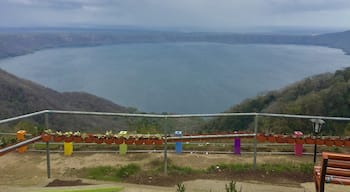
Travelers like the mountain views in La Laguna, and Laguna de Apoyo is a top attraction you might want to visit.
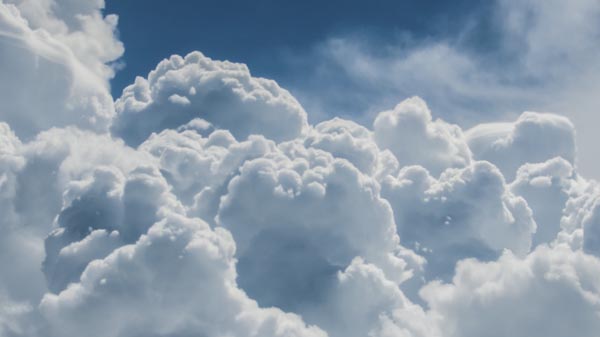
Bello Horizonte
If you're looking for some top things to see and do in Bello Horizonte and surrounding area, you can visit Multicentro Las Americas Shopping Center and Carlos Roberto Huembes Market.
Villa Fontana
Though Villa Fontana might not have many top sights, you can venture to the surrounding area to see attractions like Los Robles Park and Galerias Santo Domingo Shopping Center.
Las Mercedes
If you're looking for some top things to see and do in Las Mercedes and surrounding area, you can visit Multicentro Las Americas Shopping Center and Carlos Roberto Huembes Market.
Barrio Campo Bruce
When in Barrio Campo Bruce, you can plan a visit to Tiscapa Lagoon and Metrocentro, some noteworthy sights in the nearby area.
- Managua Hotel Deals
- Vacation Rentals in Managua
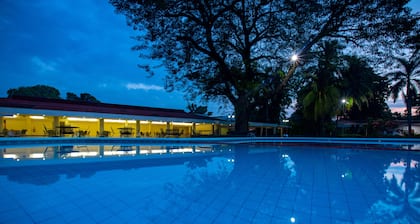
Reviewed on Jun 20, 2024

Reviewed on Jun 21, 2024

Reviewed on Jun 18, 2024

Reviewed on Mar 18, 2024

Reviewed on Apr 11, 2024

Reviewed on Jun 17, 2024
Check Managua hotel availability
Popular places to visit.
- Puerto Salvador Allende
Dine at one of the many restaurants, stroll along the lakeside boulevard and take a boat trip to nearby Love Island.
- Carlos Roberto Huembes Market
Devote a few hours to exploring this vast marketplace, filled with thousands of stalls selling food, furniture and traditional arts and crafts.
- Granada Cathedral
Marvel at the colorful façade of this 16th-century cathedral and tour the interior for its chapels, paintings and statues.
- Managua Cathedral
Sightsee the ruins of religious statues, chapels and altars at a derelict cathedral in the heart of Managua.
- Presidential House
This stately building once held the official offices of Nicaragua’s president and is surrounded by the fascinating landmarks of Managua’s historic center.
- Galerias Santo Domingo Shopping Center
During your trip to Managua, you can enjoy retail therapy at Galerias Santo Domingo Shopping Center. While in this family-friendly area, you can savor the top-notch restaurants.
Things to do
Mombacho volcano nature reserve, granada: colonial granada horse carriage & walking tour, from granada: full-day trip to ometepe island, day trip to cascada blanca waterfall in matagalpa from granada, las isletas: kayak tour, nicaragua colonial cities and natural wonders 8-day tour, reviews of managua.
It's a pretty run down capital city, but the country itself is a tropical treasure.
There are lots of interesting things to see in the Managua area which I have visited in the past. At present,(2020) it is not safe to move around the country because of the coronavirus and political concerns. Don't give up on this beautiful country
We did not stay in the town but for the night. We had a guy take us around the town and to the masaya volcano. After driving around the town, I am very glad that we didn’t spend more time there.
Come to Managua it’s not so hot like lot of the people think. But, use the air conditioning of your car if you want to be more comfortable
Its a great place with rich culture, but like any big city it has its downfalls. Be smart, be aware, and try to travel in groups.
There should be a lot more information about the city and the country. It's a nice city and the country is absolutely beautiful. If you want more tourism you'll have sell yourself in a better way.
- Cities near Managua

Villa El Carmen
Other places like managua.
- Places of interest
- Laguna de Apoyo
- Metrocentro
- Embassy of the United States Managua
- Plaza Inter
- Multicentro Las Americas Shopping Center
- Tiscapa Lagoon
- Dennis Martinez National Stadium
- Hospital Salud Integral
- Managua Boardwalk
- Alexis Argüello Sports Complex
- Los Robles Park
- Parque Central
- Mercado Oriental
- National Palace
- Japones Park
- Ruben Dario National Theater
- National Zoo
- Sandino Monument
- Islets of Granada
- Mansion de Chocolate Museum
- Las Piedrecitas Park
- Plaza de la Revolucion
- Managua Metropolitan Cathedral
We’re sorry, this site is currently experiencing technical difficulties. Please try again in a few moments. Exception: request blocked

IMAGES
VIDEO
COMMENTS
Managua. Nicaragua, Central America. Stay a day or two and you will see that Managua truly is the heartstring that holds the nation's culture and commerce together. Skip it altogether, and you miss out on the revolutionary landmarks, vibrant dining and nightlife scenes and a slice of down-to-earth urban life that you're unlikely to see anywhere ...
Managua is a city that needs to be savored, explored, and experienced at your own pace. Soak in the city's vibrant atmosphere, mingle with the friendly locals, and tantalize your taste buds with local cuisine. Your Nicaragua travel adventure awaits, and Managua is ready to welcome you with open arms.
15,498. Managua, Nicaragua. Six thousand years ago, human footprints were left in the volcanic mud along the shores of Lake Managua. Preserved over centuries, these footprints can be seen at The Museum of Acahualinca in Managua, the capital of Nicaragua. In addition to the footprints and impressive collections of pre-Colombian artifacts in the ...
Things to Do in Managua, Nicaragua: See Tripadvisor's 25,208 traveler reviews and photos of Managua tourist attractions. Find what to do today, this weekend, or in June. ... Managua Bed and Breakfast Managua Vacation Rentals Flights to Managua Managua Restaurants Things to Do in Managua Managua Travel Forum Managua Photos Managua Map.
The Managua branch of Nicaragua's oldest university (the original is in León, the former capital) was founded in 1958 and has more than 24,000 students. La Vicky. Managua. The grocery store called 'La Vicky' doesn't stand here anymore, but locals still use it as a point of reference for navigating the town.
Managua is the capital and largest city of Nicaragua. A city that saw the death of Sandino, the rise of the Somozas, and their fall from power at the hand of the Sandinistas, Managua is full of history and the closest thing to a metropolis Nicaragua has. Ever threatened by earthquakes, Managua mostly lost its historical downtown in a 1972 quake ...
3. National Palace of Culture. An icon of modern architecture, the National Palace of Culture is a remarkable building in downtown Managua. Admire its unique design and learn about Nicaragua's history and culture. The palace also houses the National Museum, where you can delve deeper into the country's rich heritage. 4.
By Helene L. 15,498. Managua, Nicaragua. Six thousand years ago, human footprints were left in the volcanic mud along the shores of Lake Managua. Preserved over centuries, these footprints can be seen at The Museum of Acahualinca in Managua, the capital of Nicaragua. In addition to the footprints and impressive collections of pre-Colombian ...
The capital of Nicaragua and its largest city, with a metro population of over 1.1 million. It is the political, economic, industrial and administrative capital of Nicaragua. Located behind Lake Managua in the western part of the country, Managua was originally founded as a fishing village in 1819. Suffered devastating earthquakes in 1931 and ...
If you are driving to Managua Nicaragua from within Nicaragua, here are the travel times and distances: Masaya - 35 minutes (26km, 16miles) without tolls. Granada - 48 minutes (41km, 26miles) without tolls. Rivas - 1 hour 48 minutes (101km, 63miles) without tolls. León - 1 hour 50 minutes (94km, 58miles) without tolls.
So, see the best of Managua by counting on Servitours Travel Nicaragua. Servitours Travel Nicaragua. Address: KM 9.5 Carretera Vieja a León, del cementerio Nejapa 300 vrs Norte, Managua 13094, Nicaragua. Website: Servitours Travel Nicaragua. Opening hours: Mon - Fri: 8am - 5pm (closed on Sat & Sun)
El Tránsito is a short, 90-minute drive from the Managua airport. In El Tránsito, you'll find yourself immersed in a tight-knit community of locals and about some expat families.
The Ultimate Nicaragua Itinerary (For 1, 2, or 3 Weeks) Whether you have 1, 2, or 3 weeks to spend, this Ultimate Nicaragua Itinerary will guide your incredible adventure through Nicaragua. From life-changing volcano hikes, surfing the best waves on the Pacific, discovering the Highland rainforests, and relaxing on pristine Caribbean islands ...
Hotter than sin and crisscrossed by anonymous highways, there can't be a more visitor-unfriendly capital than MANAGUA.Less a city in the conventional sense than a conglomeration of neighbourhoods and commercial districts, Managua offers few sights and cultural experiences - in fact, most visitors are so disturbed by the lack of street names and any real centre that they get out as fast as ...
3. Admire colonial Granada. Nicaragua's oldest city is revered as the colonial jewel of Central America. Many of the pastel-painted buildings have been meticulously restored. Bask in Granada's historic grandeur as you weave through the cobblestone streets, visit local art galleries, and sip on a coffee in a plaza. 4.
Please follow the links or call the numbers below for consular assistance. Contact the S. Embassy in Managua, located at Km 5 ½ C. Sur Managua, Nicaragua, by calling +505-2252-7104, 7:15 a.m. to 4:30 p.m., Monday through Thursday, and 7:15 a.m. to 2:00 p.m. Fridays. The American Citizen Services unit is also available by email during regular ...
Spanish Managua was established in 1819, on the site of a former Nahuatl settlement. Managua became the capital of Nicaragua in 1852. The city was chosen as a split-the-difference compromise between liberal Leon and conservative Granada. ... When you travel with LANDED, you'll be relaxed, prepared, and delighted. In fact, more than 90% of our ...
Travel Advisory. January 11, 2024. Nicaragua - Level 3: Reconsider Travel. O D H C. Reissued with updates to information on arbitrary enforcement of laws. Reconsider travel to Nicaragua due to arbitrary enforcement of laws, the risk of wrongful detention, and limited healthcare availability. Exercise increased caution in Nicaragua due to crime.
Nicaragua Itinerary Day 7 | Return to Managua OR Travel to Ometepe Island. If you've only got a week, it's time to start heading back to Managua. Your travel options include public bus (cheap at about $5, but slow and a little uncomfortable, the public bus will drop you off at the main bus station in Managua), shared shuttle (usually door ...
Managua is a destination for the intrepid traveler who will appreciate preserved Central American charms, unspoiled nature and cheap modern facilities. The capital of poverty-stricken Nicaragua on the banks of Lago Xolotlán (Lake Managua) is home to over a million residents. The older generations still remember the devastating 1931 and 1972 ...
Managua is the capital city of Nicaragua. It is also the largest city in Nicaragua. The city has a population of roughly 1,800,000, composed predominantly of mestizos and whites; making it the second most populous city in Central America after Guatemala City. Managua's location between the rival cities of León and Granada made it a logical and ...
Managua is an often overlooked and underrated Nicaragua travel destination. In this Nicaragua travel vlog we will show you the best things to do in Managua N...
Top Things to Do in Managua, Nicaragua: See Tripadvisor's 25,208 traveller reviews and photos of Managua tourist attractions. Find what to do today, this weekend, or in June. ... Hotels Managua Bed and Breakfast Managua Vacation Rentals Flights to Managua Managua Restaurants Managua Attractions Managua Travel Forum Managua Photos Managua Map.
The experience offered by our tour guides is unforgettable from the first impression, from the moment you enter the private air vehicle the tour begins. You will be filled with information about our cultures with fun and incredible stories. Our customer service is unique and you will realize that as you continue to be surprised and smile when the guide speaks to you; A tour full of adventures ...
The joint venture to support this surge begins at Managua's international airport in western Nicaragua. Since 2022, Ortega and his cronies relaxed visa restrictions while simultaneously ...
Book one of our cheap flights to Managua and discover the capital of Nicaragua, a city with historic trails, natural beauty and rich culture. In Managua you can find the oldest human footprints in the entire American continent: 6,000-year-old footprints that were discovered close to Lake Xolotlán.The country's most recent history can be found on the streets and squares of the city centre ...
NASA will host a media briefing at 3:30 p.m. EDT, Thursday, June 20 to discuss the newly released quick-look summary of the fifth biennial Planetary Defense Interagency Tabletop Exercise (TTX5) held April 3, 2024.
Come meet the U.S. Embassy's American Citizen Services team, learn about voting overseas, citizen services innovations, emergency preparedness, the Nicaragua Travel Advisory, and general consular information for citizens traveling to or residing in Nicaragua. To attend this Town Hall, you must RSVP before July 2!